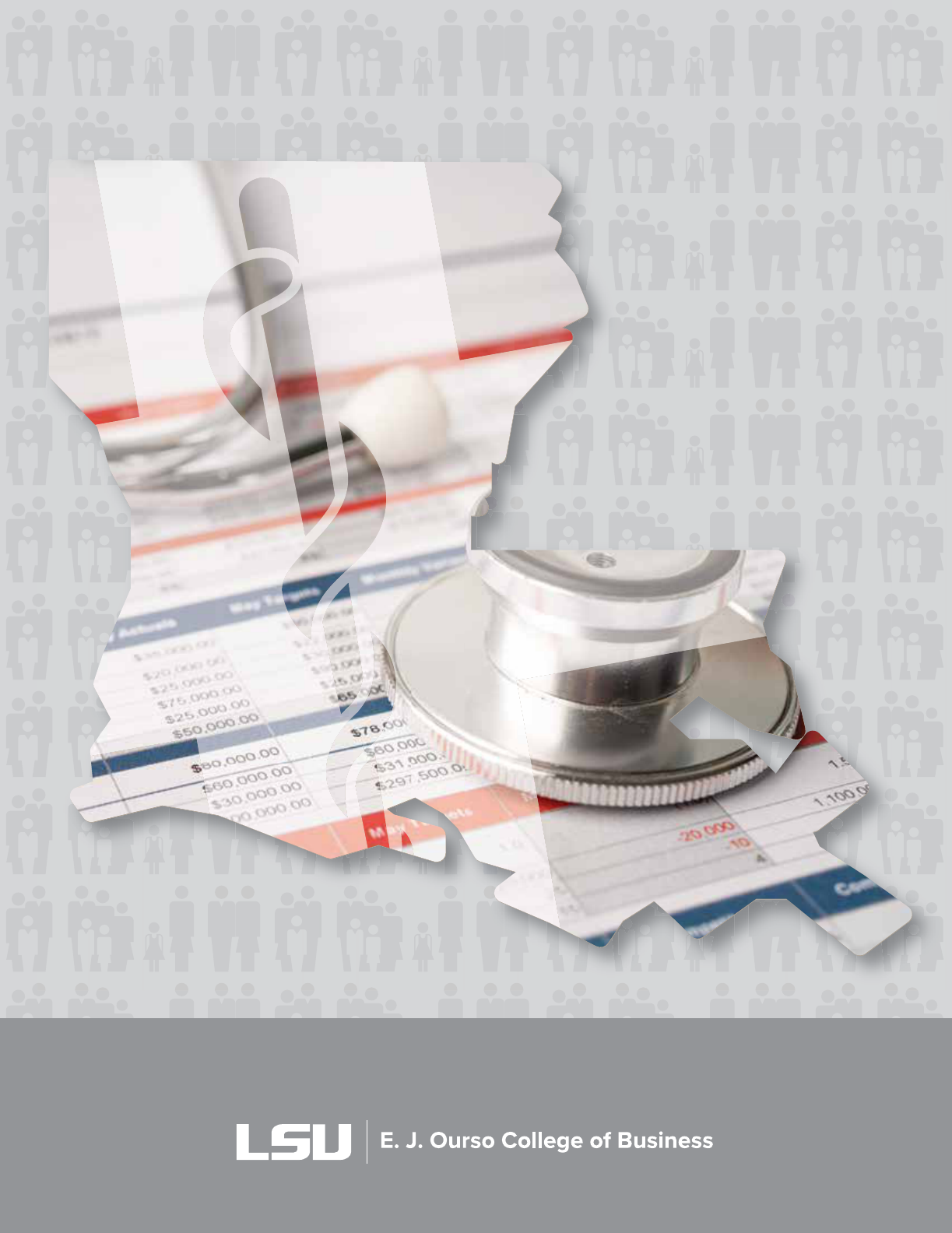
Louisiana Health Insurance Survey
2021
Dek Terrell, PhD | Stephanie Virgets, MA
Sponsored by the Louisiana Department of Health
Economics & Policy Research Group
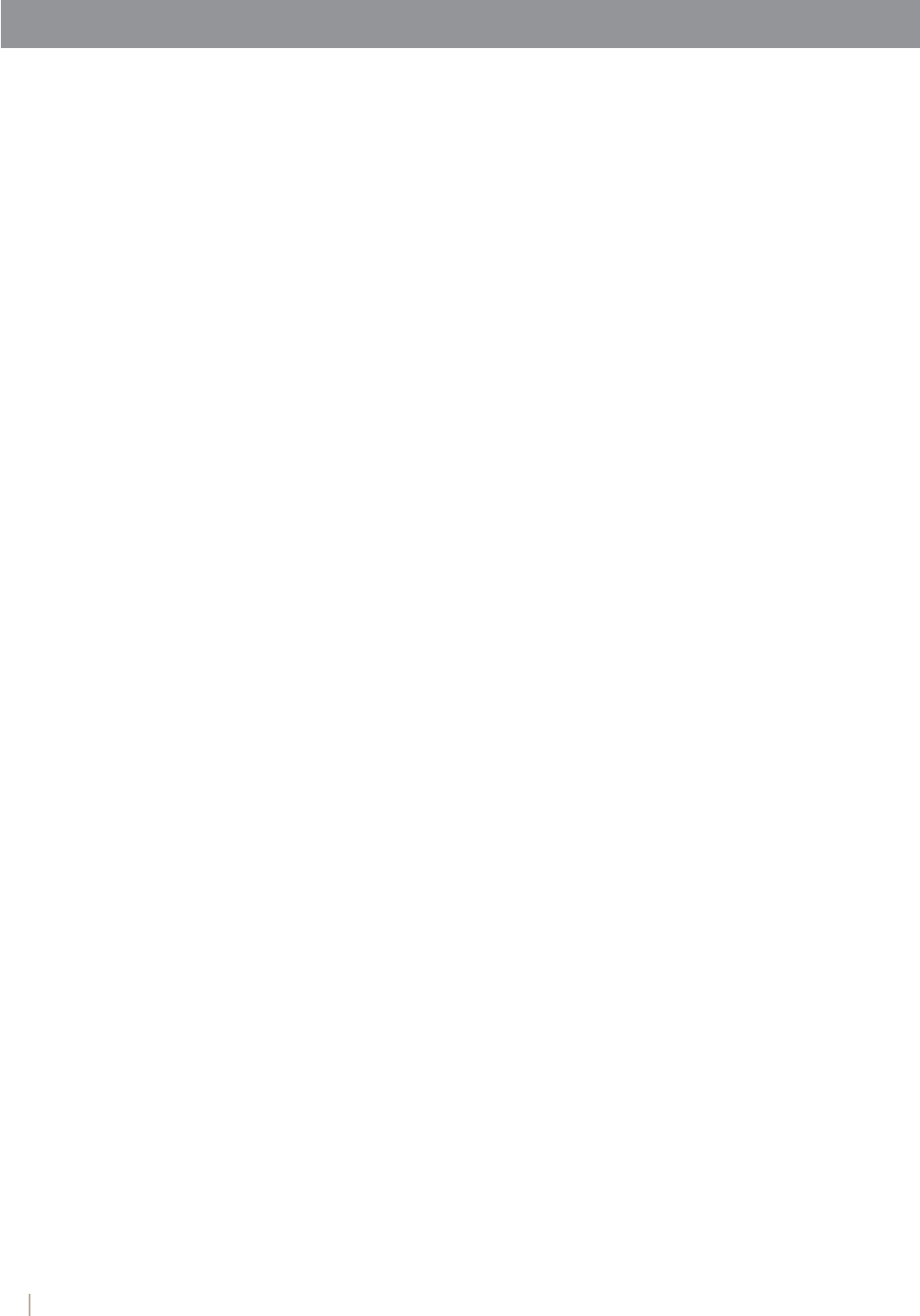
1
2021 Louisiana Health Insurance Survey
Executive Summary
The Louisiana Health Insurance Survey (LHIS) is a biennial survey conducted every other year since 2003 to gauge
conditions of the health insurance market and Louisiana residents’ access to care. The survey also allows for further
analysis on unique conditions or events like changes in economic conditions and changes in policy on health
insurance coverage. The 2021 survey updates the estimates of Louisiana’s uninsured population and provides
some information on the eects of the Coronavirus pandemic and continued decreasing of the uninsured rate of
the Medicaid expansion population. Key findings of the 2021 LHIS are:
Insurance coverage for children (under 19):
> Uninsured rates for children remain low, below 5% for 2009 and later
> An estimated 30,689 children are uninsured (2.6%)
> Among Medicaid eligible children, 2.7% or 15,889 are uninsured
> Medicaid continues to serve as the largest source of coverage for children at 53.7% while 39.1% of Louisiana
children are covered by parents’ employers
Insurance coverage for non-elderly adults (19-64):
> An estimated 258,227 Louisiana adults (9.4%) are uninsured
> Uninsured rate decreased again and is less than half of the 22.7% observed in 2015 prior to the Medicaid
expansion
> Employer coverage continues to serve as the most important source of coverage at 48.1% of adults while 31.9%
of Louisiana’s non-elderly adults receive Medicaid coverage
> The Coronavirus pandemic and related federal legislative changes have had a large impact on health
insurance; in particular, by increasing adult Medicaid coverage from 26.5% to 31.9% of adult population and
reducing the adult uninsured rate by almost 2%
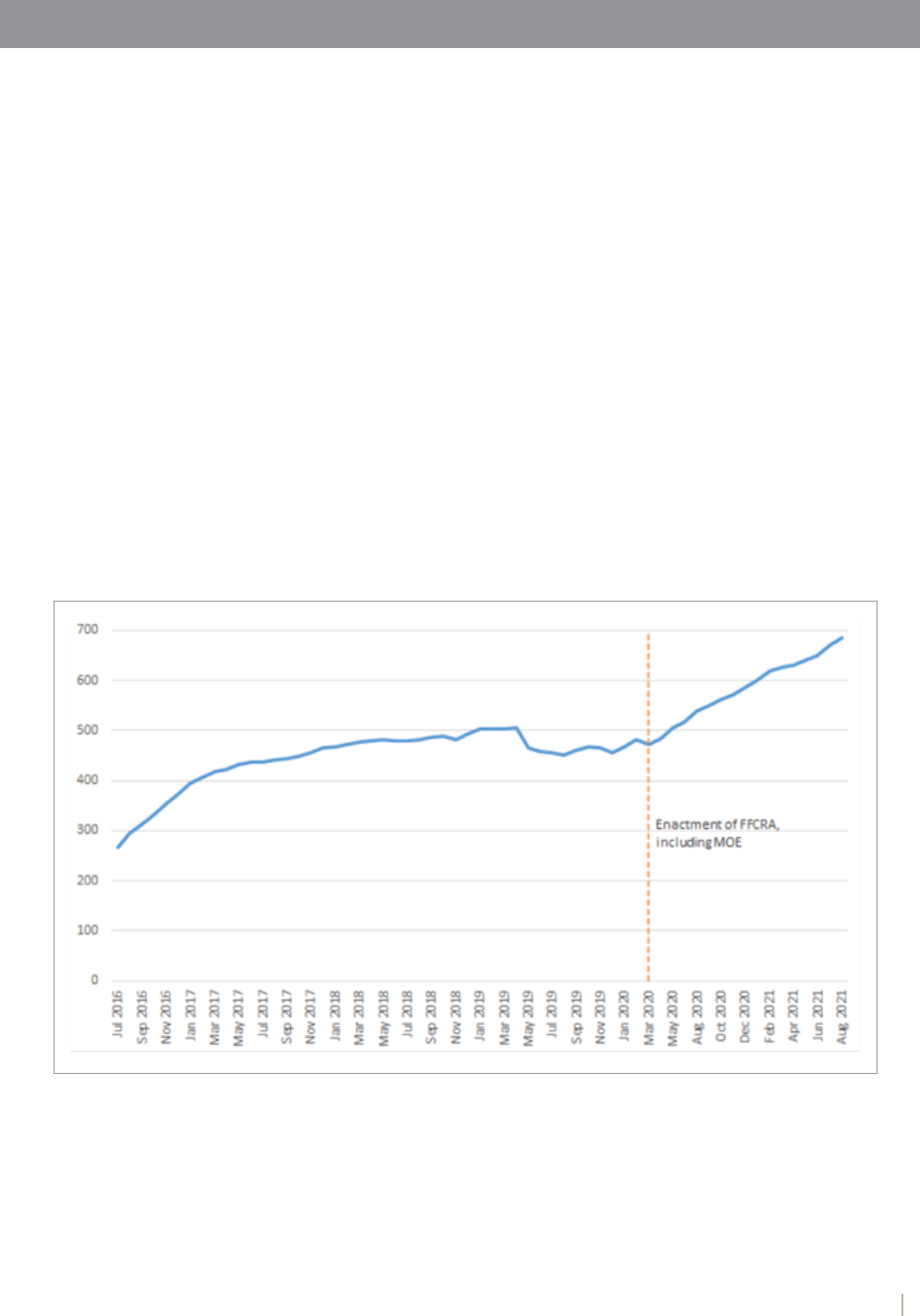
2
2021 Louisiana Health Insurance Survey
Introduction
The 2021 Louisiana Health Insurance Survey (LHIS) is the tenth in a series of surveys designed to provide the most
accurate and comprehensive assessment of Louisiana’s uninsured populations possible. The LHIS has helped
state policy makers track changes in health insurance as Louisiana’s economy, health care environment, and public
policies have changed. The LHIS has tracked Louisiana’s uninsured rate through Hurricane Katrina, the BP oil spill,
and changes in Louisiana’s Medicaid eligibility requirements for children and adults.
The most notable change in conditions for the 2021 LHIS is the Coronavirus pandemic, which began in 2020
and has continued to the time period of this survey. The pandemic led to a deterioration in economic conditions,
reducing residents’ employment status and income. Unemployment rates range from 7.6 – 6.2% in 2021, compared
to around 5% in 2019, which means that fewer people are employed and more people are looking for work. Much
of the population’s health insurance is sponsored by employers, so this is an important factor.
The federal government sought to oset these conditions with a number of legislative actions. A particularly
important legislative change for federal Medicaid funds has incentivized continuity of care for Medicaid recipients,
which has reduced “churning” or moving in and out of coverage. A second factor for changes in Medicaid coverage
is the continued impact of the Medicaid expansion, which allowed previously ineligible low-income adults to enroll
in Medicaid beginning in July 2016. Medicaid rates continued to see slight gains in the period before the pandemic,
so this trend may be combining with the pandemic impact to increase Medicaid coverage in Louisiana. Figure I-1
graphs Louisiana Medicaid enrollment over time and shows a dramatic increase in Louisiana Medicaid enrollment
following Coronavirus legislation.
Figure I-1: Louisiana Medicaid Expansion Enrollment over Time (in thousands)
Source: Louisiana Department of Health. Retrieved September, 24, 2021.
Section 5 of this report discusses the Coronavirus pandemic response and individual legislation in detail. However,
because this change is large enough to impact results throughout this report, it is important to be aware of this
when interpreting all results.

3
2021 Louisiana Health Insurance Survey
The 2021 LHIS is based on a sample of over 8,500 Louisiana households and 25,000 Louisiana residents, thus
allowing for detailed estimates of the uninsured populations for each of the Department of Health’s nine regions
and for specific subpopulations (e.g., children under 250% of federal poverty limit or adults under 138% of federal
poverty limit). Each round of the LHIS has also incorporated methodological improvements to ensure that the survey
results reflect our best understanding of how to estimate uninsured populations. Some of these methodological
improvements are as follows:
The 2007 LHIS incorporated a subsample of the survey sent to known Medicaid enrollees to adjust uninsured
estimates for the Medicaid undercount at the individual level. National surveys are known to consistently report
lower rates of Medicaid than administrative data, which is known as the Medicaid undercount. Some people may
misreport due to confusing Medicaid with other sources of health insurance coverage, not realizing or remembering
they have Medicaid coverage, misreporting other members of the household or being unsure about coverage for
all members of the household, or being unfamiliar with terminology and other problems. The LHIS draws a random
sample of Medicaid enrollees who are asked an identical set of questions as other survey recipients to adjust for
the likelihood of misreporting Medicaid. All subsequent LHIS have included a Medicaid bias subsample and pooled
data from multiple years to increase accuracy of the adjustment.
The 2009 LHIS incorporated uninsured estimates from a cell phone sample to address the presence of cell-only
households. Over time, the percentage of survey completions from cell phones has increased with the proportion
of cell-phone only households.
Each year, the LHIS weights results to modify our sample to match U.S. Census Bureau estimates of the Louisiana
population. The 2017 LHIS incorporated new survey weighting based on Medicaid eligible income groups to better
account for the expansion of Medicaid.
The 2019 LHIS incorporated online surveys to increase participation rates and gather responses in a smaller
window of time for more accurate estimates. Online surveys allow us to better reach younger Louisianans while
phone survey participants, particularly from landlines, capture an older segment of the population. Use of web
surveys increased in 2021, though a significant portion is still collected by phone.
The 2021 LHIS revisits the Medicaid bias sample based on results in the earlier referenced paper by Goidel,
Barnes, Terrell and Virgets. The greater prominence of health insurance in the news and social media has probably
increased awareness of and correct reporting of insurance status. Based on these findings, the 2021 LHIS Medicaid
bias adjustment pools data only from the 2017, 2019, and 2021 series instead of all years or a single year.
The following sections provide an overview of the major findings from the 2021 LHIS. Section 1 presents a summary
of insurance coverage for children. Section 2 provides a similar section for adults. Section 3 presents correlations
between health insurance and other individual and household characteristics such as income and race. Section
4 summarizes four questions from the Oce of Public Health about access to and quality of healthcare. Section 5
discusses the Coronavirus pandemic and its impact on access to health and health insurance in Louisiana.
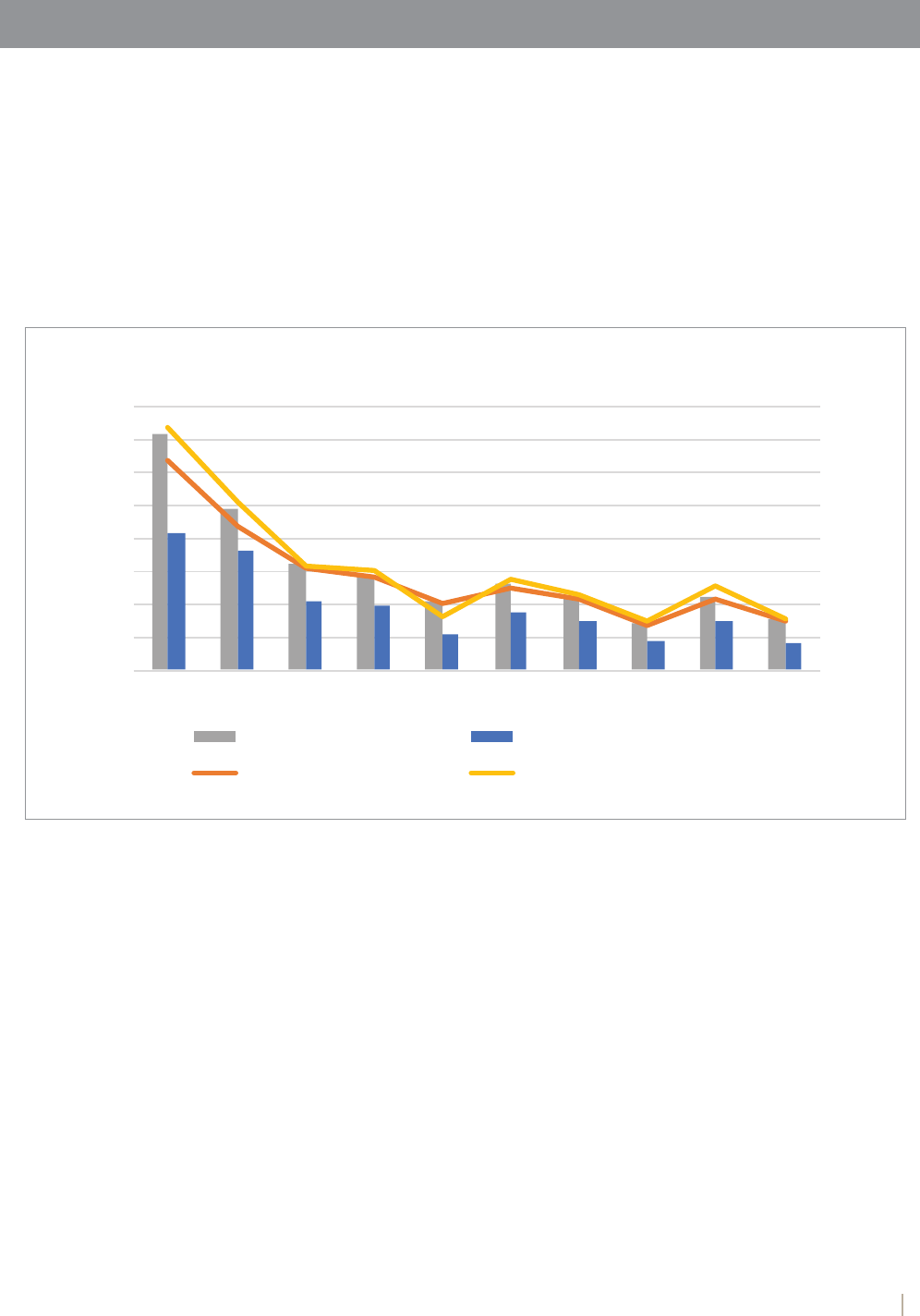
4
2021 Louisiana Health Insurance Survey
1. Uninsured Children
This section presents the results for children under 19, including the uninsured rates by region and income and
sources of health insurance coverage. In 2021, the uninsured rate for children was 2.6%, a decrease from 2019’s
3.8%. This equates to approximately 30,689 children without health insurance, down from 44,213 in 2019. For the
generally lower income children eligible for Medicaid, uninsured rates are just above 2.7%.
Figure 1-1 displays the children’s uninsured rate and number of uninsured since 2003. The uninsured rate for
children was 11.1% in 2003, and fell to about 5.0% in 2009. Since that time, the uninsured rate has stayed under 5%
for all children and for the Medicaid-eligible children.
Figure 1-1 Uninsured Children, 2003 - 2021
0.0%
2.0%
4.0%
6.0%
8.0%
10.0%
12.0%
14.0%
0
20,000
40,000
60,000
80,000
100,000
120,000
140,000
160,000
2003 2005 2007 2009 2011 2013 2015 2017 2019 2021
All Children Number
All Children Percent
Medicaid Eligible Number
Medicaid Eligible Percent
Table 1-1 shows the percentage and total number of uninsured children by region from 2015 to 2021. In 2021, the
uninsured rate has decreased overall and in most regions, though the New Orleans region has increased to 4.2%.
The biggest decrease is in the Northwest region, which dropped more than 3 percentage points. Over the last six
years, the children’s uninsured rates have remained very low.
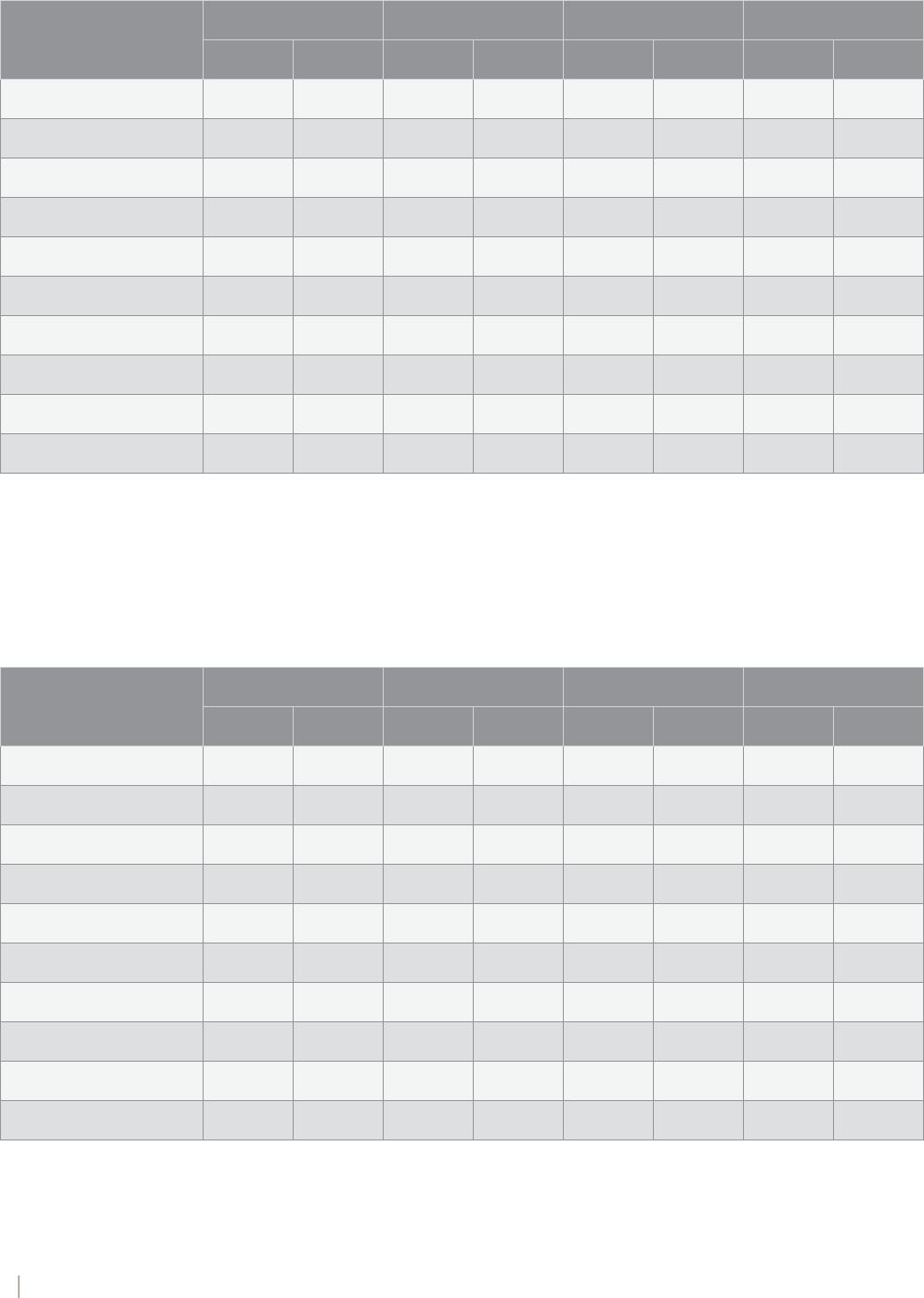
5
2021 Louisiana Health Insurance Survey
Table 1-1 Uninsured Children by Region
Region
2015 2017 2019 2021
Percent Number Percent Number Percent Number Percent Number
New Orleans 1 2.4% 4,846 2.2% 4,953 2.5% 5,014 4.2% 8,659
Baton Rouge 2 3.2% 5,674 1.3% 2,165 3.8% 6,169 2.2% 3,819
Houma-Thibodaux 3 3.2% 3,380 2.6% 2,835 5.2% 5,587 3.2% 2,984
Acadiana 4 3.8% 5,704 3.2% 5,083 2.9% 5,026 2.1% 3,650
Southwest 5 3.4% 2,206 1.5% 1,233 2.6% 2,146 2.9% 2,147
Central 6 4.9% 4,999 6.1% 4,337 4.8% 3,783 3.1% 2,288
Northwest 7 4.4% 5,962 3.4% 4,576 5.1% 6,867 1.8% 2,364
Northeast 8 5.8% 5,274 1.9% 1,573 3.9% 3,342 2.1% 1,910
Northshore 9 4.6% 6,955 1.4% 2,235 4.0% 6,279 1.9% 2,867
Statewide 3.8% 45,000 2.4% 28,990 3.8% 44,213 2.6% 30,689
Table 1-2 shows the uninsured rates for Medicaid-eligible children by region from 2015 to 2021. Although this group
is eligible for Medicaid, the LHIS and other surveys find that a small percentage of children in this income group
remain uninsured. This could potentially indicate that their parents may be unaware of their eligibility, uninformed
about the Medicaid program, or face other access problems. However, this number is small and is estimated to
comprise only around 15,889 children in 2021. This is the lowest recorded in recent years.
Table 1-2 Uninsured Medicaid-Eligible Children by Region
Region
2015 2017 2019 2021
Percent Number Percent Number Percent Number Percent Number
New Orleans 1 2.1% 2,543 2.9% 3,591 3.4% 3,645 4.4% 3,616
Baton Rouge 2 3.6% 3,816 2.1% 1,715 3.1% 2,586 2.6% 2,067
Houma-Thibodaux 3 4.3% 2,614 2.3% 1,296 5.4% 3,371 3.3% 1,421
Acadiana 4 4.8% 4,086 1.8% 1,505 4.2% 3,935 2.3% 2,399
Southwest 5 3.0% 1,096 0.5% 219 5.0% 1,982 2.4% 1,027
Central 6 4.2% 2,759 7.5% 3,319 6.7% 3,059 3.6% 1,675
Northwest 7 5.2% 4,957 5.1% 3,972 5.5% 4,655 1.6% 1,207
Northeast 8 5.1% 3,511 0.2% 133 5.1% 2,582 2.1% 1,132
Northshore 9 4.4% 3,972 1.8% 1,555 4.2% 3,414 2.0% 1,346
Statewide 4.0% 29,356 2.6% 17,305 4.5% 29,227 2.7% 15,889
Table 1-3 illustrates the relationship between income, expressed as a percentage of federal poverty level (FPL),
and insurance status. The FPL is an income benchmark issued annually by the U.S. Department of Health and
Human Services and is used to determine eligibility for certain programs and benefits including Medicaid. It varies
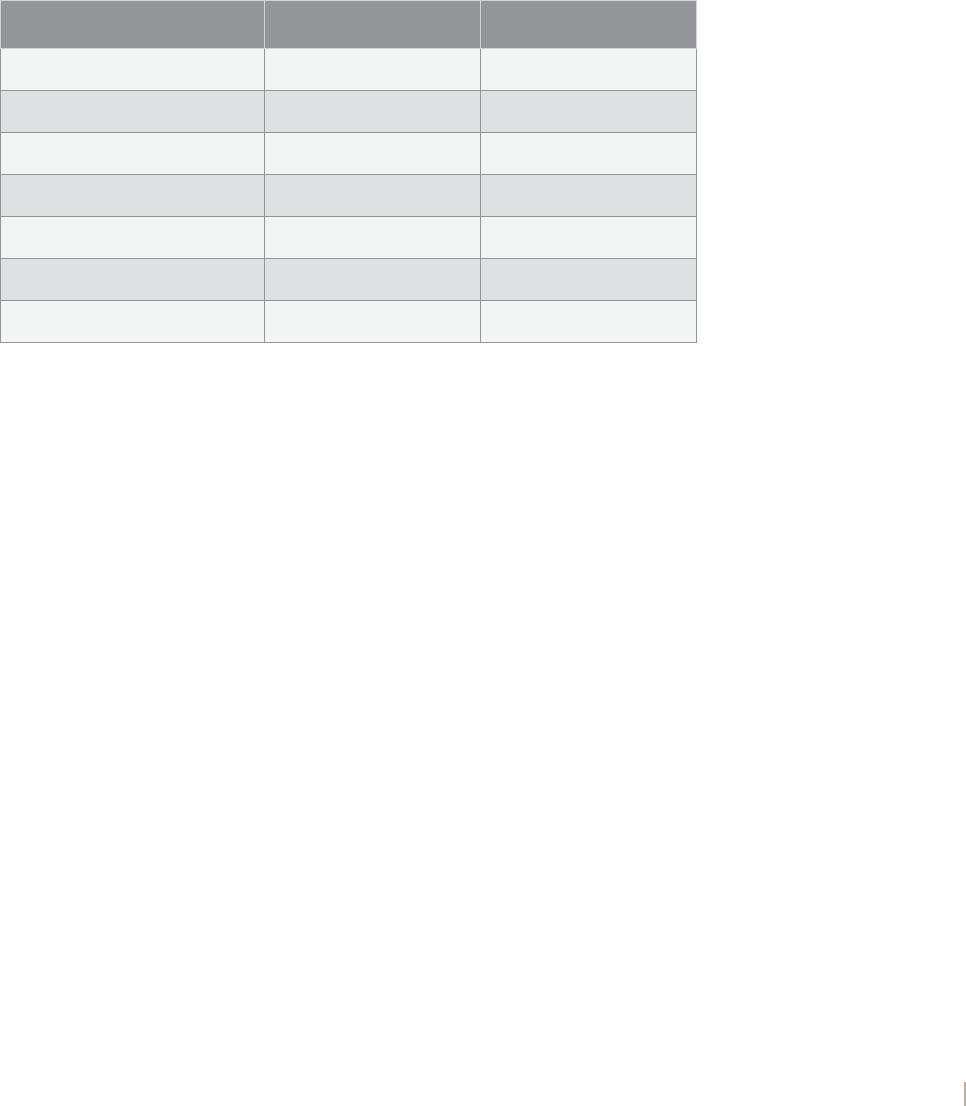
6
2021 Louisiana Health Insurance Survey
by household size, but in 2021 the FPL for a family of four was $26,500. In Louisiana, to be eligible for Medicaid
or LaCHIP as a child under 19 years of age, household income must be below 217 percent FPL. Between 217-255
percent FPL, children are eligible for the LaCHIP Aordable Plan, a Medicaid buy-in program that costs $50 per
month to gain LaCHIP coverage. That means children’s Medicaid eligibility criteria equates to family incomes of
under $67,575.
Uninsured rates are low in all income categories. If income was limiting children from obtaining insurance, there
would be a decreasing relationship between income and the uninsured rate, meaning that fewer high income
families were uninsured than lower income families. In 2021, there is no relationship and all income groups saw
uninsured rates under 3.5%.
Table 1-3 Uninsured Children by FPL
FPL Category Percent Number
Under 100% FPL 2.9% 12,336
100-150% FPL 1.3% 945
150 - 200% FPL 0.9% 360
200 - 250% FPL 2.4% 3,360
250 - 300% FPL 2.3% 2,261
300-400% FPL 2.0% 2,746
More than 400% 3.5% 8,682
The LHIS asks questions about insurance coverage type for each member of the household and results for children
are provided in Table 1-4. The possible responses are that a person is covered through employer insurance held
by someone in the household (Employer), through an insurance policy purchased privately (Purchased Coverage),
through a plan that was provided by a previous employer of someone in the household (Former Employer), through
an insurance policy held by someone not in the household (Not in Household) or through one of three groups
of government coverage (Medicare, Military, or Medicaid). Individuals are only considered to be uninsured after
confirming that they do not have any type of coverage.
The largest source of health insurance for children is Medicaid, with just over half or 53.7% of all children on
Medicaid. Employer sponsored coverage is the second largest source of coverage at 39.1% in 2021. The
percentage of children on Medicaid has generally been increasing over the years, from approximately 43.4% in
2009 (when the children’s overall uninsured rate first fell below 5%), while the corresponding employer-sponsored
coverage has fallen from 45.7% in 2009. Other sources of coverage comprise smaller portions, including
purchased private insurance, former employer insurance like COBRA, not in household coverage such as insurance
through a non-custodial parent, and military coverage. Many children have multiple sources of health insurance
or secondary insurance providers, so the totals of these tables will add to more than 100%. Approximately 13.2%
of children have purchased coverage, 8.9% from someone in another household, and small numbers in other
categories. Only 2.6% of children are uninsured. Employer sponsored health insurance is highest and Medicaid
lowest in New Orleans, Baton Rouge, and Northshore.
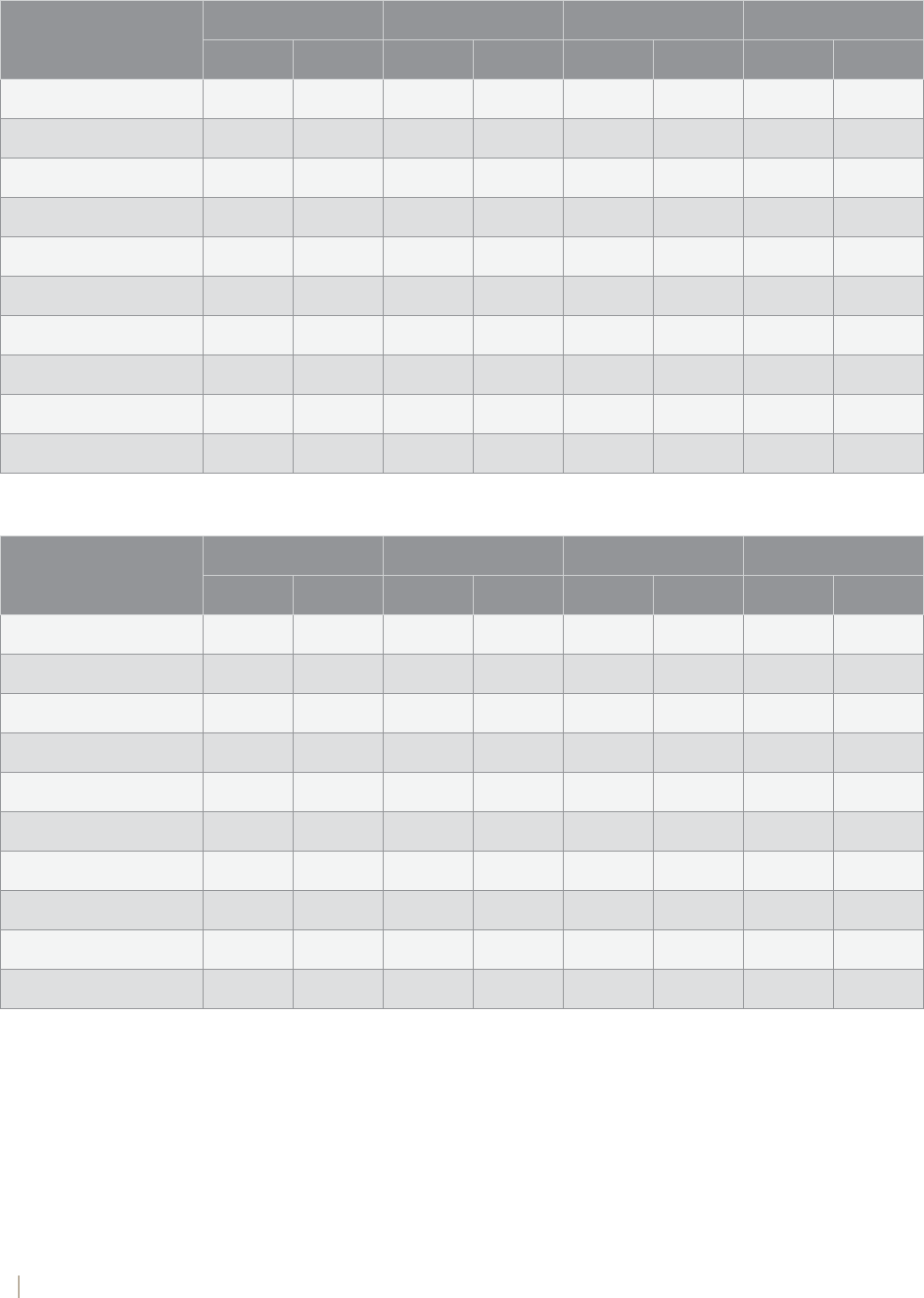
7
2021 Louisiana Health Insurance Survey
Table 1-4 Sources of Health Insurance for Children by Region
Region
Employer sponsored Purchased Former Employer Not in Household
Percent Number Percent Number Percent Number Percent Number
New Orleans 1 41.2% 84,643 16.5% 33,886 8.3% 16,971 10.6% 21,754
Baton Rouge 2 43.4% 75,400 13.4% 23,368 4.4% 7,713 11.2% 19,524
Houma-Thibodaux 3 39.1% 36,244 13.0% 12,080 5.2% 4,859 4.6% 4,227
Acadiana 4 35.5% 60,850 14.8% 25,271 8.5% 14,644 9.0% 15,357
Southwest 5 34.1% 25,624 13.2% 9,917 2.1% 1,604 7.0% 5,233
Central 6 34.7% 25,989 9.7% 7,264 3.7% 2,764 6.7% 5,021
Northwest 7 38.2% 49,166 13.9% 17,909 5.0% 6,492 9.8% 12,612
Northeast 8 32.6% 29,073 10.3% 9,181 3.7% 3,335 9.5% 8,485
Northshore 9 44.9% 68,200 9.7% 14,707 4.2% 6,440 7.1% 10,829
Statewide 39.1% 455,188 13.2% 153,582 5.6% 64,822 8.9% 103,043
Note: Columns sum to more than 100% because some individuals have multiple sources of coverage.
Region
Medicare Military Medicaid Uninsured
Percent Number Percent Number Percent Number Percent Number
New Orleans 1 5.0% 10,341 5.1% 10,582 48.0% 98,664 4.2% 8,659
Baton Rouge 2 4.4% 7,588 4.3% 7,390 47.3% 82,239 2.2% 3,819
Houma-Thibodaux 3 7.9% 7,315 2.8% 2,578 49.5% 45,879 3.2% 2,984
Acadiana 4 5.5% 9,350 2.5% 4,201 62.1% 106,327 2.1% 3,650
Southwest 5 7.1% 5,361 6.2% 4,697 57.5% 43,222 2.9% 2,147
Central 6 9.3% 6,933 5.1% 3,849 59.7% 44,742 3.1% 2,288
Northwest 7 6.4% 8,203 6.3% 8,149 54.5% 70,126 1.8% 2,364
Northeast 8 9.9% 8,831 2.4% 2,128 64.3% 57,223 2.1% 1,910
Northshore 9 4.3% 6,528 4.1% 6,196 49.9% 75,726 1.9% 2,867
Statewide 6.1% 70,450 4.3% 49,771 53.7% 624,148 2.6% 30,689
Note: Columns sum to more than 100% because some individuals have multiple sources of coverage.
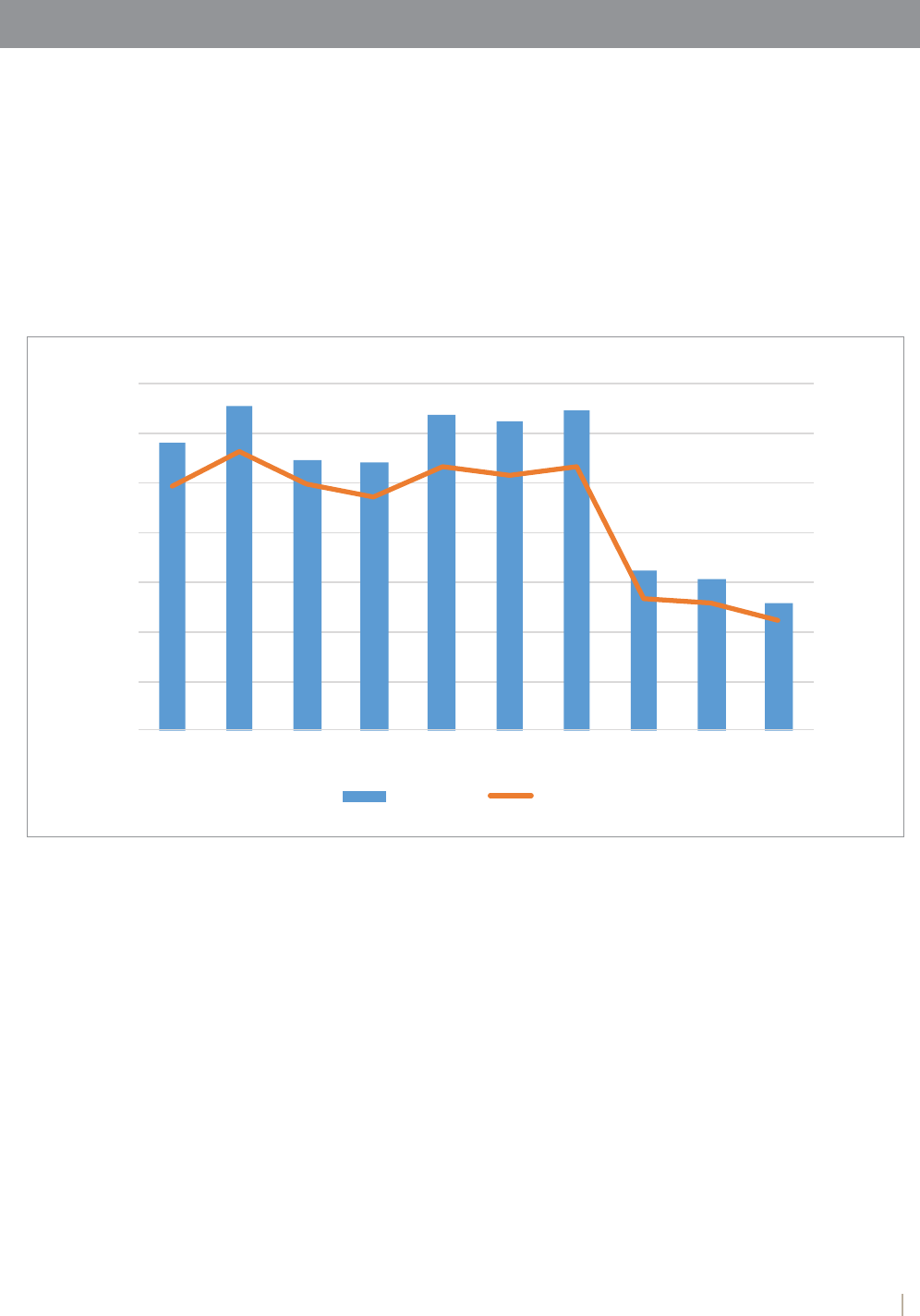
8
2021 Louisiana Health Insurance Survey
2. Uninsured Adults
This section provides results for non-elderly adults ages 19-64. The uninsured rate for adults in 2021 is 9.4%, down
from 11.1% in 2019 and 22.7% in 2015. This accounts for 258,227 adults uninsured. Figure 2-1 shows the percent and
number of uninsured adults from 2003 to 2021. The uninsured rate dropped significantly between 2015 and 2017
due to Medicaid expansion in Louisiana in 2016, which expanded eligibility to a large group of low income adults
who were not previously eligible for public insurance and could not aord health insurance on their own. The rates
dropped slightly further in 2019. A major factor in 2020 was the Coronavirus pandemic, which upset economic
conditions and allowed people to stay on Medicaid for longer. The increase in Medicaid enrollment shown in the
introduction oset negative economic conditions and the uninsured rate decreased overall.
Figure 2-1 Uninsured Adults, 2003 - 2021
0.0%
5.0%
10.0%
15.0%
20.0%
25.0%
30.0%
0
100,000
200,000
300,000
400,000
500,000
600,000
700,00 0
2003 2005 2007 2009 2011 2013 2015 2017 2019 2021
Number Percent
Table 2-1 shows uninsured rates by region from 2015 to 2021. Baton Rouge has the lowest uninsured rate at 6.6%,
while Acadiana has the highest at 11.3%. Baton Rouge is consistently the region with the lowest uninsured rate
across all years, including pre-expansion. However, the variation in uninsured adults by regions falls after 2017 with
the Medicaid expansion. Poorer regions of Louisiana like the Northeast region which consistently experienced high
uninsured rates have converged more closely to the uninsured rates in other regions.
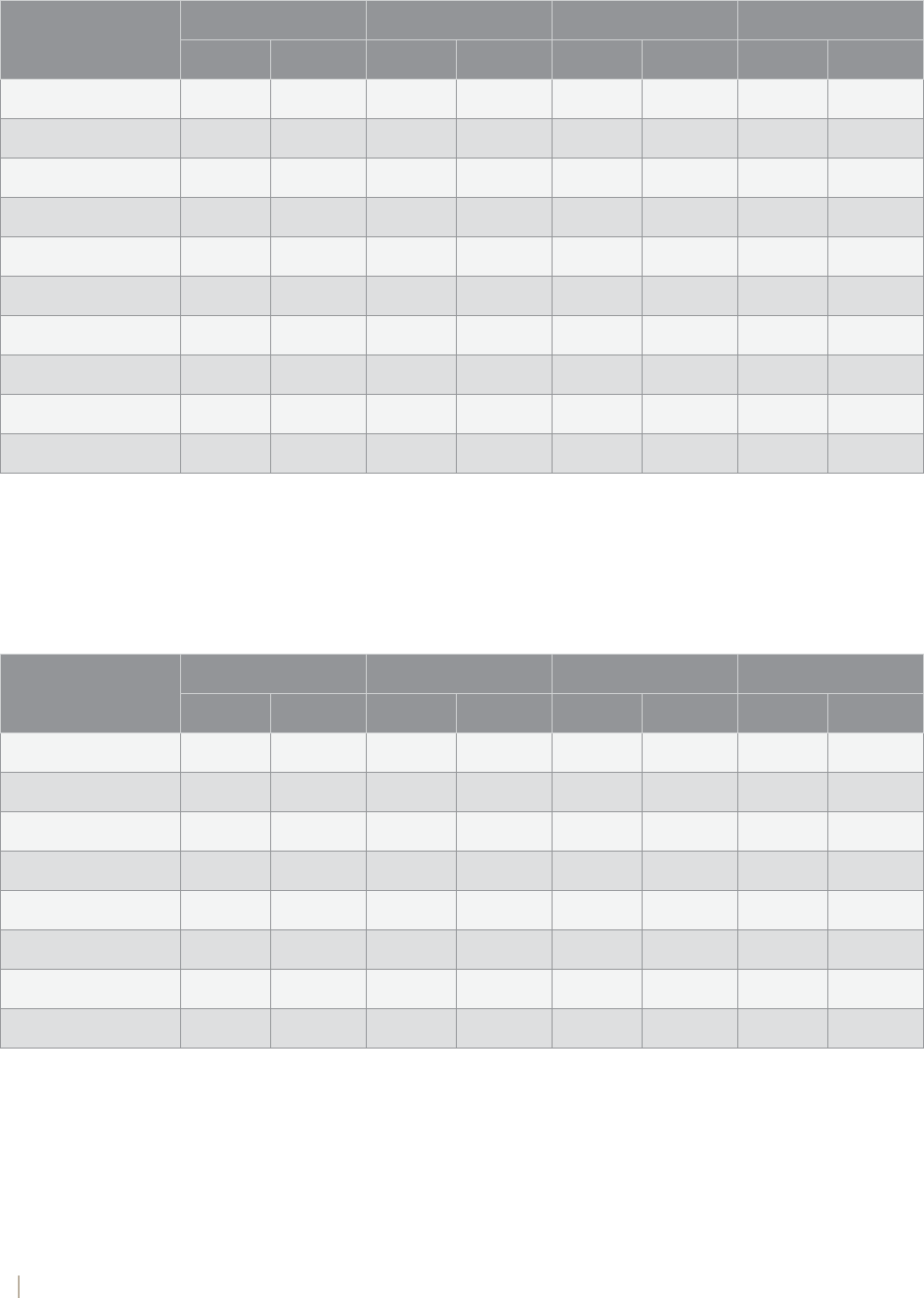
9
2021 Louisiana Health Insurance Survey
Table 2-1 Uninsured Adults by Region
Region
2015 2017 2019 2021
Percent Number Percent Number Percent Number Percent Number
New Orleans 1 21.2% 113,666 11.5% 61,436 10.0% 55,569 9.0% 47,565
Baton Rouge 2 18.8% 79,948 10.2% 42,654 8.2% 33,700 6.6% 27,704
Houma-Thibodaux 3 21.9% 54,553 8.5% 20,640 11.5% 27,539 10.6% 24,279
Acadiana 4 22.2% 76,745 10.9% 40,787 10.9% 37,125 11.3% 40,711
Southwest 5 25.6% 37,532 15.2% 26,802 12.5% 22,604 11.2% 18,718
Central 6 23.0% 56,761 14.7% 27,625 10.1% 17,363 9.7% 17,107
Northwest 7 25.8% 86,323 11.3% 37,234 13.3% 41,038 9.6% 30,408
Northeast 8 29.2% 61,360 12.6% 26,985 14.4% 28,738 10.1% 19,450
Northshore 9 22.6% 77,329 11.2% 37,315 11.8% 41,578 9.3% 32,285
Statewide 22.7% 644,217 11.4% 321,477 11.1% 305,256 9.4% 258,227
Table 2-2 shows the adults uninsured rates by FPL between the years 2015 and 2021. The strongest gains have
been in the lower income ranges under 138% FPL, or the adult Medicaid expansion population. Here, uninsured
rates have dropped from upper thirties to under 15%. Though the impact is largest for low income Louisianans,
uninsured rates have decreased at all income levels.
Table 2-2 Uninsured Estimates for Adults by FPL, 2015- 2021
FPL Category
2015 2017 2019 2021
Percent Number Percent Number Percent Number Percent Number
Under 19% FPL 35.1% 99,559 18.8% 71,401 17.3% 66,297 14.5% 49,674
19-100% FPL 38.1% 146,384 11.5% 28,115 9.8% 19,863 8.8% 19,926
100 - 138% FPL 35.5% 81,778 11.2% 10,545 10.5% 8,822 10.3% 8,949
138 - 150% FPL 37.3% 26,888 13.0% 16,638 11.4% 13,443 12.6% 17,769
150-200% FPL 27.4% 79,098 17.0% 65,984 13.9% 56,315 13.6% 58,435
200-250% FPL 22.7% 52,550 13.4% 50,228 14.7% 53,292 12.4% 36,731
250-300% FPL 19.7% 42,159 9.8% 20,921 10.3% 21,925 8.3% 17,703
300-400% FPL 13.0% 43,302 7.2% 23,930 7.7 % 23,286 6.6% 22,678
Table 2-3 shows uninsured rates for parents and childless adults. Historically, low-income parents had more access
to Medicaid than childless adults and the LHIS has tracked the dierences between these groups over time. After
June 2016, access to Medicaid is equally available to both groups, but childless adults are almost twice as likely to
be uninsured in 2021. Parents may have higher levels of health insurance due to potential pregnancy costs, lower
risk tolerance, or other factors.
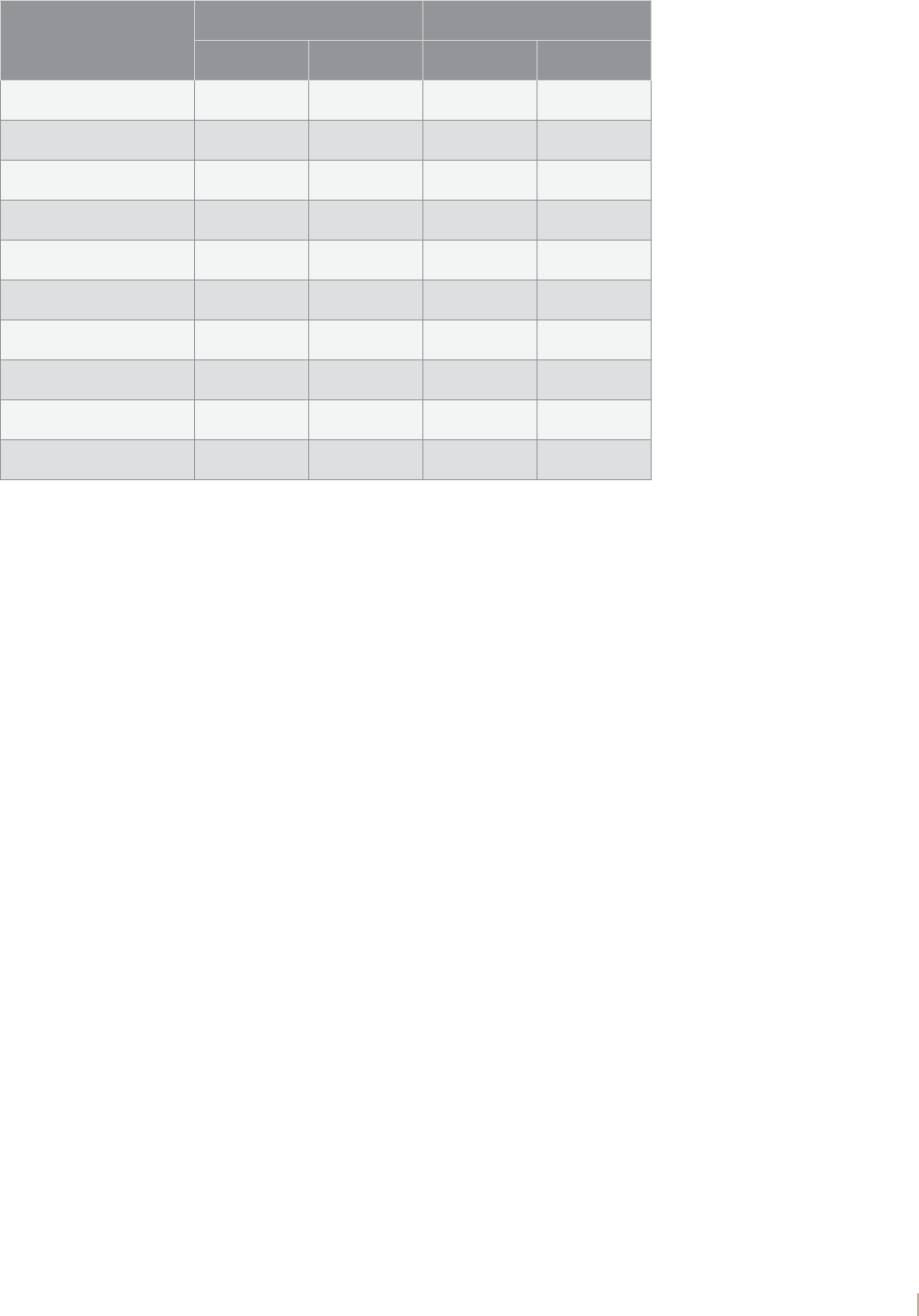
10
2021 Louisiana Health Insurance Survey
Table 2-3 Uninsured Estimates for Parents and Childless Adults by Region
Region
Parents Childless Adults
Percent Number Percent Number
New Orleans 1 5.3% 6,334 10.0% 41,232
Baton Rouge 2 3.7% 3,829 7.6% 23,875
Houma-Thibodaux 3 8.7% 5,553 11.3% 18,727
Acadiana 4 7.0% 6,591 12.8% 34,120
Southwest 5 12.9% 5,600 10.6% 13,118
Central 6 6.1% 2,542 10.8% 14,565
Northwest 7 4.6% 3,556 11.2% 26,852
Northeast 8 8.1% 3,817 10.8% 15,633
Northshore 9 7.2% 7,090 10.2% 25,195
Statewide 6.5% 44,911 10.4% 213,317
The LHIS asks questions about insurance coverage type for each member of the household and results for adults
are provided in Table 2-4. The possible responses are that a person is covered through employer insurance held
by someone in the household (Employer), through an insurance policy purchased privately (Purchased Coverage),
through a plan that was provided by a previous employer of someone in the household (Former Employer), through
an insurance policy held by someone not in the household (Not in Household) or, through one of three groups
of government coverage (Medicare, Military, or Medicaid). Individuals are only considered to be uninsured after
confirming that they do not have any type of coverage.
The largest source of coverage for adults is employer-sponsored health insurance, which accounts for nearly half
or 48.1% of all adults. This compares to 50.7% in 2019. While some regions have seen lower than 50% of adults with
employer sponsored coverage in the past, 2021 is the first year that the statewide average is under 50%.
The second largest source of coverage is Medicaid. In 2021, an estimated 31.9% of adults were on Medicaid, up
from 26.5% in 2019. Purchased health insurance, including insurance purchased on the federal Health Insurance
Marketplace authorized by the Patient Protection and Aordable Care Act, comprises 15.3%, compared to 13.4% in
2019, and former employer insurance has fallen to 9.5%, compared to 11.6% in 2019. Other types of insurance are
much smaller, and the statewide uninsured rate is at an all-time low of 9.4%.
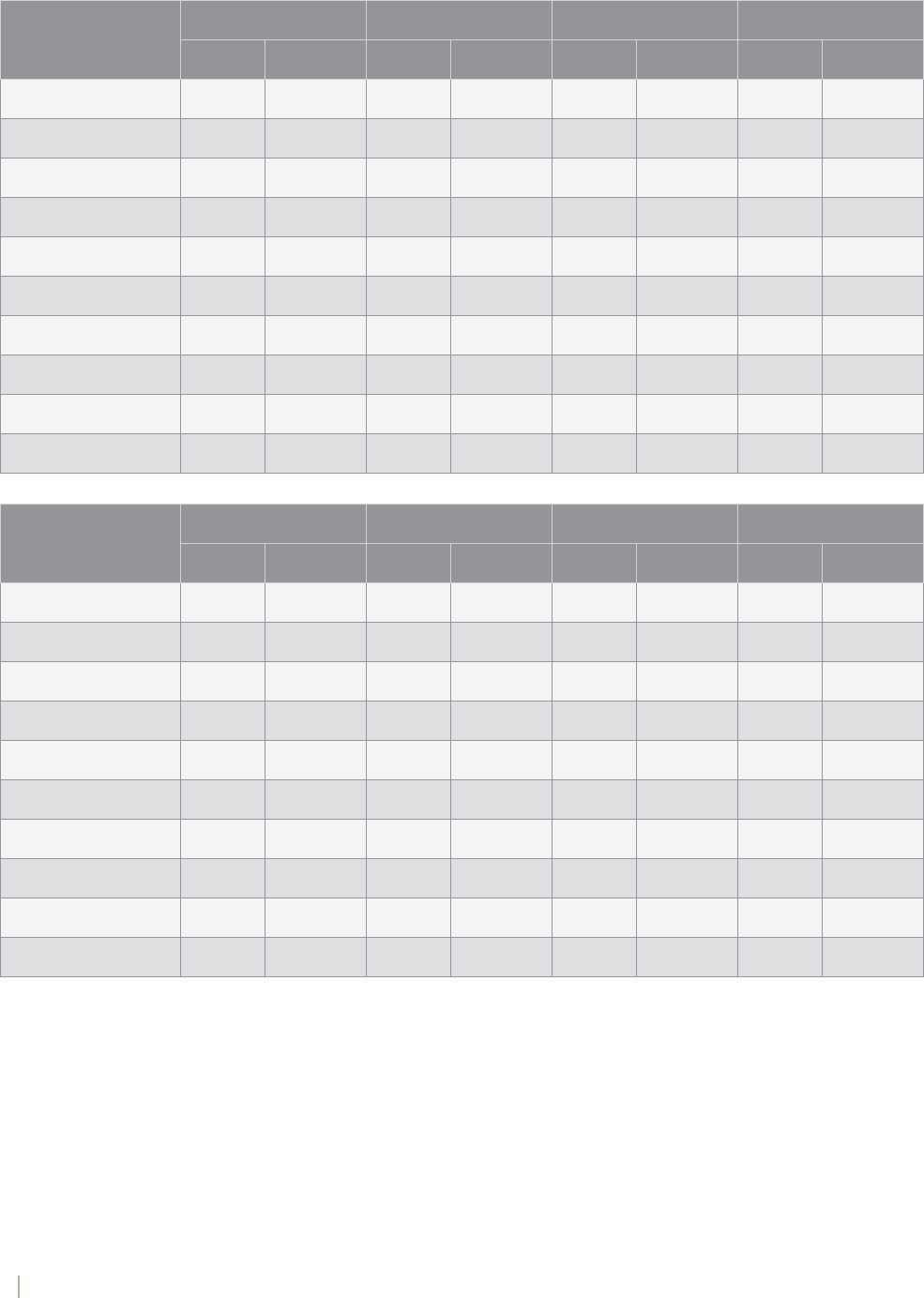
11
2021 Louisiana Health Insurance Survey
Table 2-4 Sources of Health Insurance for Adults by Region
Region
Employer sponsored Purchased Former Employer Not in Household
Percent Number Percent Number Percent Number Percent Number
New Orleans 1 51.5% 273,312 18.6% 98,458 11.0% 58,176 7.4% 38,995
Baton Rouge 2 55.3% 231,838 17.0% 71,304 10.2% 42,783 6.4% 26,839
Houma-Thibodaux 3 46.9% 107,760 14.4% 32,965 10.6% 24,335 5.0% 11,511
Acadiana 4 42.7% 154,218 14.5% 52,466 9.5% 34,213 5.9% 21,176
Southwest 5 42.4% 70,750 13.3% 22,107 5.6% 9,361 3.8% 6,364
Central 6 43.5% 76,969 13.3% 23,565 9.7% 17,224 5.1% 8,967
Northwest 7 47.2% 149,686 14.8% 46,884 9.6% 30,427 6.2% 19,555
Northeast 8 39.7% 76,540 14.6% 28,095 9.3% 17,957 6.7% 12,838
Northshore 9 51.3% 177,232 12.3% 42,415 7.3% 25,284 4.5% 15,618
Statewide 48.1% 1,318,306 15.3% 418,258 9.5% 259,760 5.9% 161,862
Region
Medicare Military Medicaid Uninsured
Percent Number Percent Number Percent Number Percent Number
New Orleans 1 8.8% 46,527 6.2% 32,970 28.6% 151,653 8.97% 47,565
Baton Rouge 2 10.2% 42,577 5.9% 24,752 28.1% 117,848 6.61% 27,704
Houma-Thibodaux 3 11.2% 25,655 4.8% 10,979 31.7% 72,686 10.58% 24,279
Acadiana 4 12.7% 45,679 5.6% 20,149 38.1% 137,387 11.28% 40,711
Southwest 5 11.4% 19,057 5.0% 8,310 32.2% 53,626 11.23% 18,718
Central 6 10.6% 18,761 7.5% 13,258 36.3% 64,290 9.67% 17,107
Northwest 7 9.8% 30,921 10.3% 32,666 29.7% 94,051 9.59% 30,408
Northeast 8 9.2% 17,779 4.8% 9,313 40.2% 77,376 10.10% 19,450
Northshore 9 9.7% 33,571 5.4% 18,561 30.2% 104,248 9.35% 32,285
Statewide 10.2% 280,528 6.2% 170,958 31.9% 873,164 9.4% 258,227
The last two tables of the adult’s results provide more detail for low-income adults earning less than 138% FPL.
This is an income of under $36,570 for a family of four, and a group that is eligible for Medicaid. Table 2-5
shows sources of coverage for adults under 138% FPL. The most common source of coverage is Medicaid, at
60.1%. Although all individuals in this income range are eligible for Medicaid, there are still some who choose to
have other sources of health insurance or to have multiple sources of coverage, and 12.0% have no insurance.
The increase in Medicaid coverage and reduction in uninsured adults in 2017 reflects the Medicaid expansion
for adults, while the 2021 increase in Medicaid coverage may reflect temporary federal legislation enacted to
address the Coronavirus pandemic.
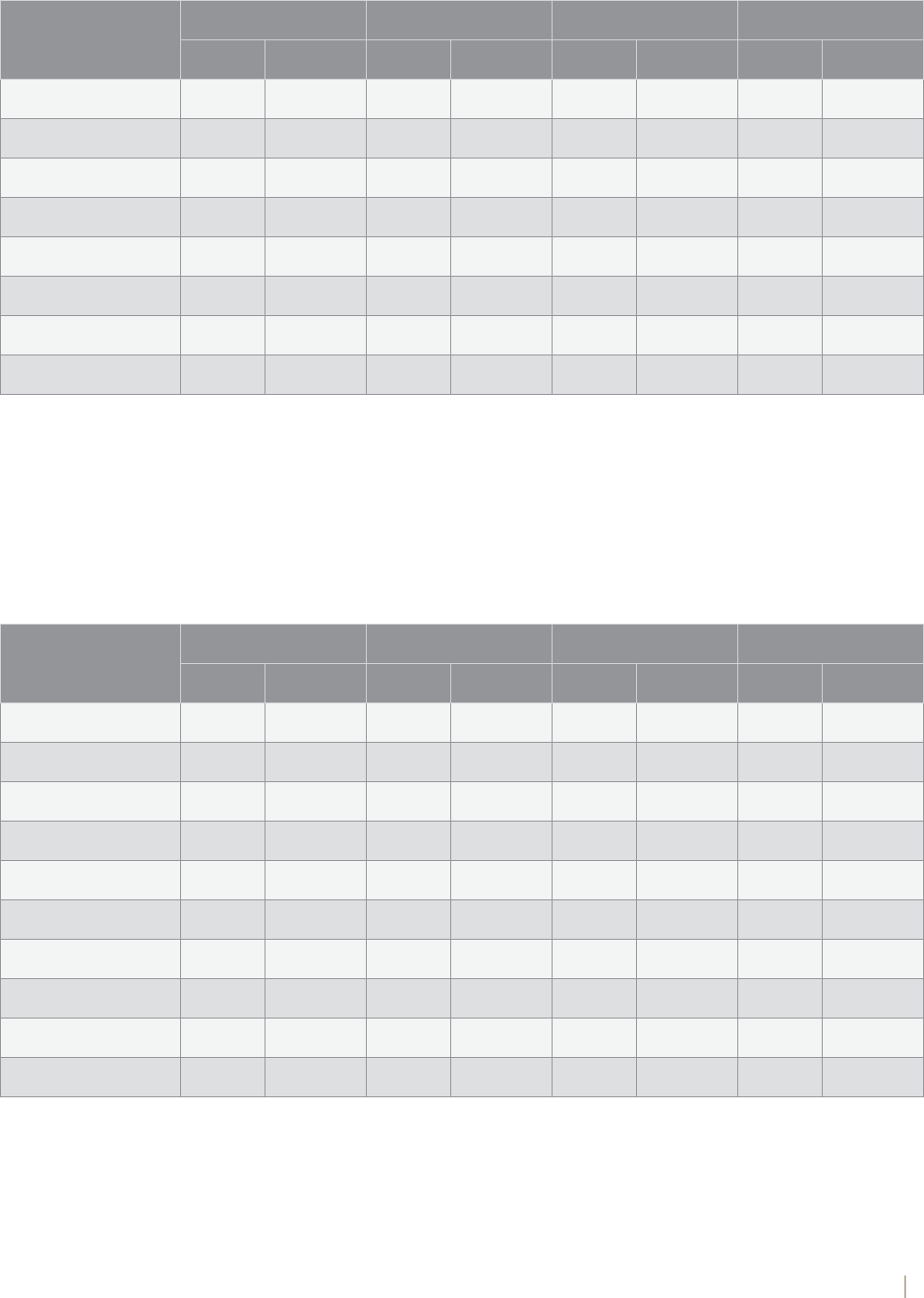
12
2021 Louisiana Health Insurance Survey
Table 2-5 Sources of Coverage for Adults Under 138% FPL, 2015-2021
Source
2015 2017 2019 2021
Percent Number Percent Number Percent Number Percent Number
Employer sponsored 20.1% 180,523 19.6% 140,376 26.4% 176,639 19.2% 126,416
Purchased 6.9% 62,364 7.3% 52,163 12.7% 84,790 14.1% 92,587
Former Employer 5.3% 47,829 3.4% 24,743 6.9% 46,020 7.1% 46,633
Not in Household 2.7% 24,062 2.5% 18,064 5.4% 36,106 6.9% 45,142
Medicare 10.1% 90,606 14.3% 102,936 12.8% 85,460 14.8% 97,308
Military 3.7% 33,221 3.0% 21,849 3.7% 24,876 4.6% 30,136
Medicaid 23.9% 214,738 49.7% 356,430 49.6% 332,144 60.1% 394,643
Uninsured 36.5% 327,720 15.3% 110,061 14.2% 94,981 12.0% 78,550
Note: Total sums to more than 100% because some people have multiple sources of coverage.
Table 2-6 shows the percent of uninsured low-income adults by region. Uninsured rates in the Medicaid expansion
population are fairly similar across the state, ranging from a low of 10.2% in Northwest region to 14.6% in Southwest
region. With regard to trends, the Medicaid expansion for adults in 2017 reduced uninsured rates in all regions and
also reduced variation across regions. Due the economic deterioration and major federal legislative changes in
response to Coronavirus, the results in 2021 may or may not reflect a broader long term trend.
Table 2-6 Uninsured Adults under 138% FPL by Region, 2015-2021
Region
2015 2017 2019 2021
Percent Number Percent Number Percent Number Percent Number
New Orleans 1 34.9% 52,702 14.3% 19,383 14.2% 16,035 13.2% 14,320
Baton Rouge 2 31.0% 35,412 18.3% 17,256 11.5% 10,881 10.5% 9,829
Houma-Thibodaux 3 37.2% 26,180 10.3% 6,592 14.8% 9,400 10.7% 5,589
Acadiana 4 37.6% 41,620 15.2% 13,721 12.9% 11,201 11.9% 12,754
Southwest 5 44.4% 19,635 19.8% 8,931 17.2% 7,020 14.6% 6,127
Central 6 36.3% 30,428 19.0% 10,110 15.2% 7,252 12.1% 5,727
Northwest 7 36.6% 45,832 15.2% 13,244 16.0% 13,623 10.2% 8,070
Northeast 8 39.5% 35,840 13.3% 8,244 13.8% 7,889 11.3% 6,151
Northshore 9 37.0% 40,070 14.6% 12,581 14.3% 11,682 13.6% 9,983
Statewide 36.5% 327,720 15.3% 110,061 14.2% 94,981 12.0% 78,550

13
2021 Louisiana Health Insurance Survey
3. Determinants of the Uninsured Status
This section presents some determinants of the uninsured rate such as income, age, gender, race, education, and
employment status. The first relationship explored in Figure 3-1 is uninsured rates by income for both children and
adults. Uninsured rates for children are relatively flat, with very little relationship between income and uninsured
status. The uninsured rates for low-income adults have fallen significantly since the expansion of Medicaid in 2016,
but low-income adults are still more than twice as likely to be uninsured as adults above 400% FPL. The highest
uninsured rate is in the 150-200% FPL, which is the lowest income group not eligible for Medicaid. Income used to
be the strongest predictor of insured status before the expansion of Medicaid and still is an important factor.
Figure 3-1 Income and Uninsured Status
2.9%
1.3%
0.9%
2.4% 2.3%
2.0%
3.5%
12.2%
11.7%
13.6%
12.4%
8.3%
6.6%
4.0%
0.0%
2.0%
4.0%
6.0%
8.0%
10.0%
12.0%
14.0%
16.0%
Children Adults
Under 100%
FPL
100 – 150%
FPL
150 – 200%
FPL
200 – 250%
FPL
250 – 300%
FPL
300 – 400%
FPL
More than
400%
A second factor influencing health insurance is gender, with adult women more likely to have health insurance than
men. Men are almost twice as likely to be uninsured as women, though no such pattern exists for children. Younger
women likely anticipate higher potential healthcare costs due to pregnancy and studies show men exhibit higher
risk tolerance.
Figure 3-2 Gender and Uninsured Status
0.0%
2.0%
4.0%
6.0%
8.0%
10.0%
12.0%
14.0%
Children Adults
Female Male Female Male
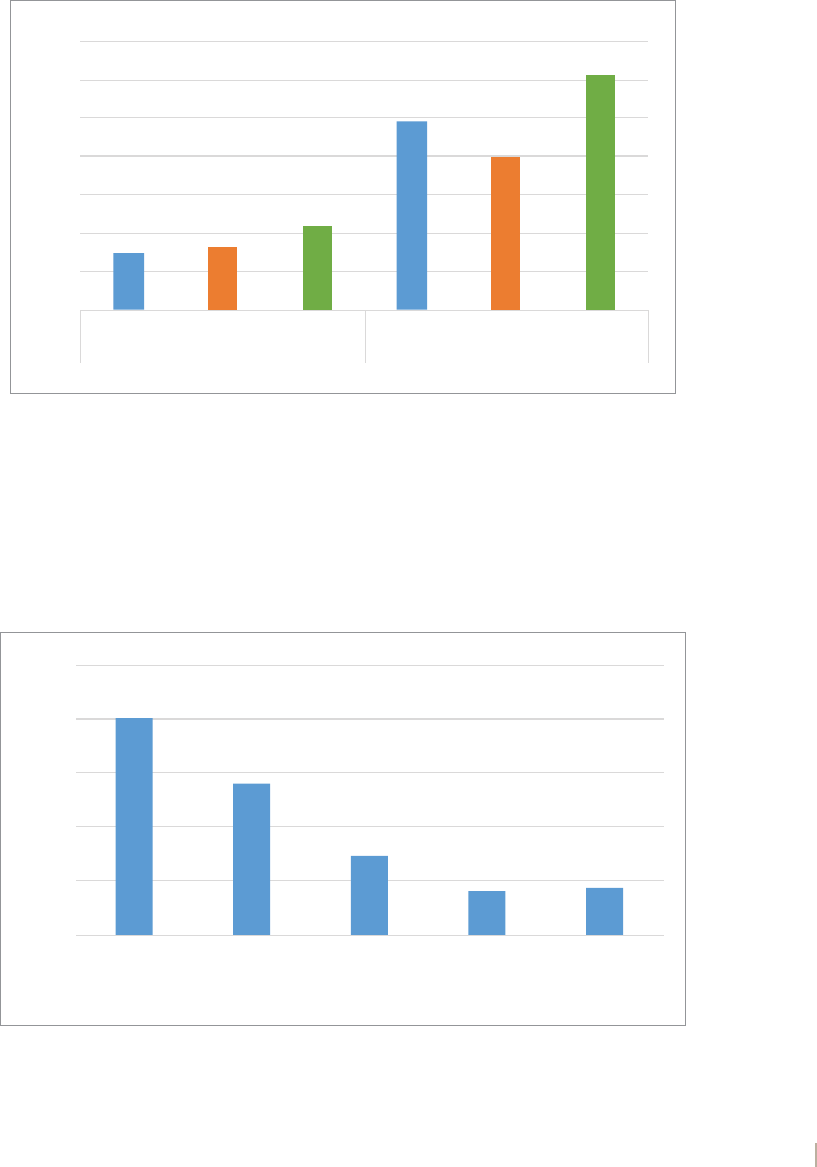
14
2021 Louisiana Health Insurance Survey
Race (Figure 3-3) is another demographic factor of interest. The results clearly show a significant improvement
in insurance access for black residents of Louisiana in years after the Medicaid expansion. This year we add the
category “Other” in our chart which includes American Indian or Alaska Native, Asian/Pacific Islander, Hispanic,
and Other. Our question is worded for consistency with prior LHIS surveys, but the U.S. Census Bureau now
defines Hispanic as an ethnicity which may be any race. Given the growing Hispanic population in Louisiana and
high uninsured rate in our “Other” category, some caution must be exercised before making precise use of the
results in this figure.
Figure 3-3: Race and Uninsured Status
2.9%
3.3%
4.4%
9.9%
8.0%
12.2%
0.0%
2.0%
4.0%
6.0%
8.0%
10.0%
12.0%
14.0%
Children
White Black Other
Adults
White Black Other
Figure 3-4 displays the relationship between highest level of education and uninsured status. Health outcomes
have long been considered to have some of the greatest disparities between levels of education. In Louisiana,
a college graduate has one third of the uninsured rate as a high school graduate. This is similar to the spread
between low income and high income individuals. Individuals with more education are more likely to be employed
by larger employers paying higher salaries and oering insurance.
Figure 3-4: Level of Education and Uninsured Status
20.1%
13.9%
7.3%
4.0%
4.4%
0.0%
5.0%
10.0%
15.0%
20.0%
25.0%
Less than high
school
Completed high
school
Some college or
associates
degree
Completed four
years of college
Graduate degree
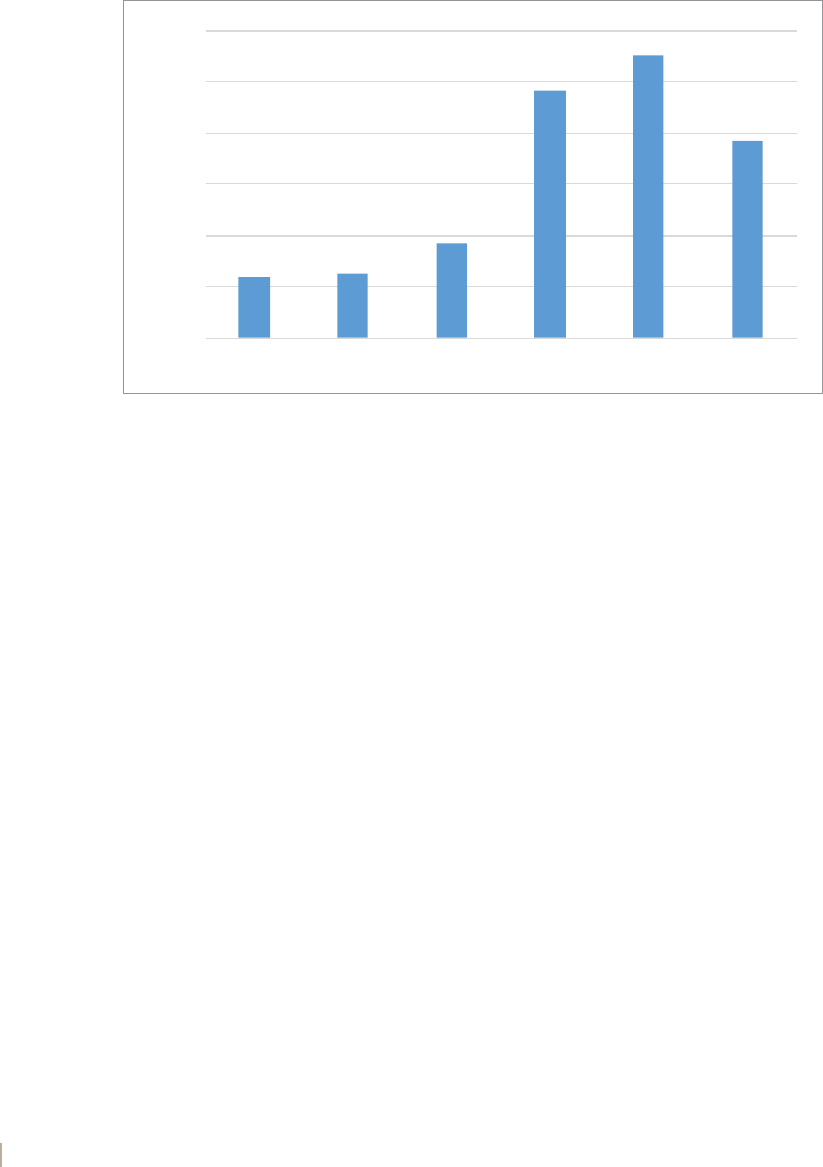
15
2021 Louisiana Health Insurance Survey
Age is another important factor related to (not with) health insurance coverage. Children and adults are eligible for
dierent public health insurance programs at dierent ages, as well as other dierences. Children consistently have
much lower uninsured rates. Among non-elderly adults, the 45 – 64 year age group is the most established in their
careers as well as the most health-conscious and likely to encounter health problems due to age. They also have
the lowest uninsured rates for adults. The 19 – 26 year age group is eligible to remain on their parents’ insurance,
while the 27 – 44 year age group is in between. Thus, it is not surprising to see the highest uninsured rate among
those in the 27 – 44 year age group.
Figure 3-5: Age and Uninsured Status
2.3%
2.5%
3.7%
9.6%
11.0%
7.7%
0.0%
2.0%
4.0%
6.0%
8.0%
10.0%
12.0%
0 – 5 years 6 – 15 years 16 – 18 years 19 – 26 years 27 – 44 years 45 – 64 years
The last figure of this section, Figure 3-6, is about employer sponsored health insurance coverage. Because
employer sponsored insurance is the largest source of health insurance for adults, it is important to see what sort
of factors aect it. This figure focuses on size of employer since small businesses of less than 50 employees
often have dierent regulations regarding health insurance. Figure 3-6 shows the percent of individuals that have
employer sponsored health insurance, by size of employer. Although more than 90% of employers of all sizes
oer health insurance plans, larger companies are better able to pool risk and subsidize more of the cost for
employees than small employers, making their plans more aordable. Employees might not purchase employer
sponsored plans even when available if they do not qualify due to part time status or other reasons, the cost is
prohibitive, or if they have access to other health insurance options.
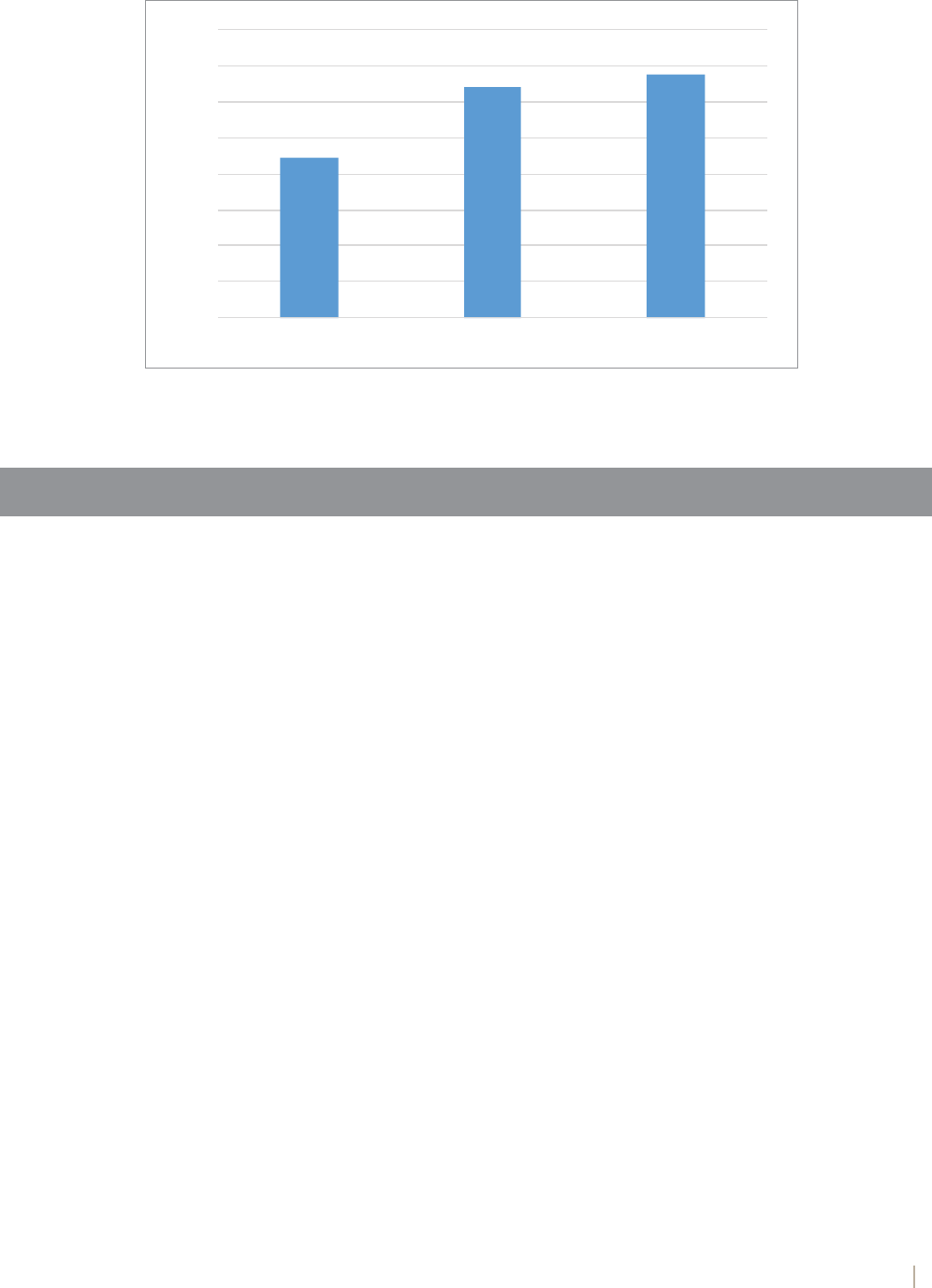
16
2021 Louisiana Health Insurance Survey
Figure 3-6: Employer Size and Percentage Reporting Employer Sponsored Insurance Coverage
44.5%
64.3%
67.5%
0.0%
10.0%
20.0%
30.0%
40.0%
50.0%
60.0%
70.0%
80.0%
0 – 49 employees 50 – 99 employees 100 or more employees
4. Oce of Public Health
This section of the report focuses on four questions from the Oce of Public Health, relating to access to and
quality of care received by individuals. These questions were asked for each member of a household and include:
1. Does your health insurance oer benefits or cover services that meet your needs?
2. Does your health insurance allow you to see the health care providers you need?
3. Not including health insurance premiums or costs that are covered by insurance, do you pay any money for
your health care?
4. How often are these costs reasonable?
These responses are presented in a series of charts that compare adults and children, major insurance types, and
dierences between regions. In general, most individuals are satisfied with their health insurance and are able to
see the providers they need, but some people find health insurance costs expensive.
The first question, whether health insurance meets the needs of individuals, is presented in Figure 4-1, while a
breakdown of results for this question by children and adults, insurance type, and region, are presented in Figures
4-2 – 4-4. The LHIS finds that 74% of respondents “always” or “usually” are satisfied with their benefits. Another 16%
say that insurance “sometimes” covers services that meet their needs and 9% say “never.” Although most people
are satisfied with their health insurance, this does leave a number of people who are struggling to have needed
services covered.
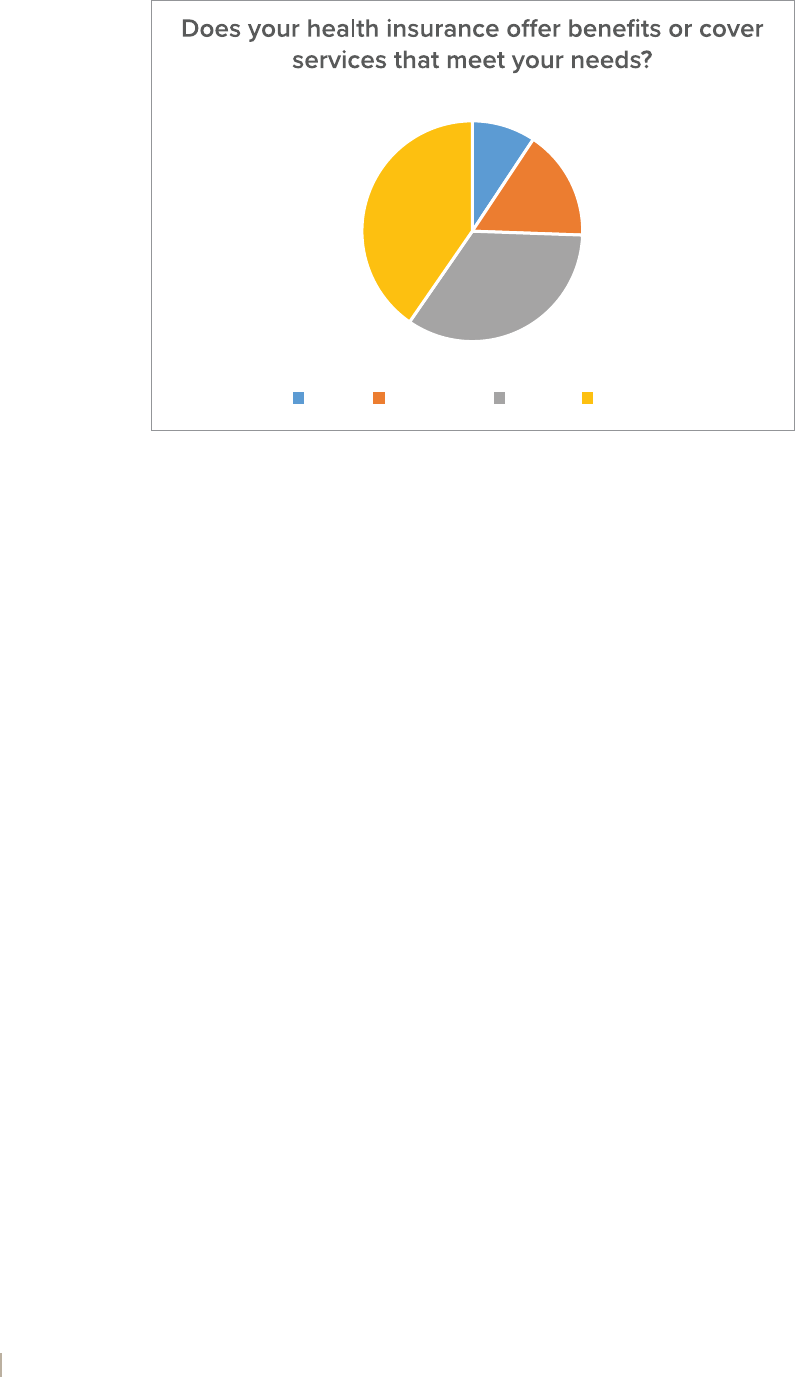
17
2021 Louisiana Health Insurance Survey
Figure 4-1: Does your health insurance oer benefits or cover services that meet your needs?
9%
16%
34%
40%
Never Sometimes Usually Always
Adults are much more likely to be dissatisfied with their own benefit coverage than their children’s benefits, with
11% saying insurance “never” meets needs and 18% “sometimes” for adults compared to 6% “never” and 13%
“sometimes” for children.

18
2021 Louisiana Health Insurance Survey
Figure 4-2: Insurance Meets Needs, Children and Adults
0%
10%
20%
30%
40%
50%
60%
70%
80%
90%
100%
Childre
nA
dults
Insurance Meets Needs, Children and Adults
Never Sometimes Usually Always
Persons covered by Medicaid are more likely than other insurance holders to be satisfied with benefit coverage,
and those with employer sponsored insurance say benefits are more likely to meet needs than those who
purchased private coverage.
Figure 4-3: Insurance Meets Needs, by Insurance Type
0%
10%
20%
30%
40%
50%
60%
70%
80%
90%
100%
Insurance Meets Needs, by Insurance Type
Never Sometimes Usually Always
Medicaid Employer Purchased Other
Across all regions, responses are fairly similar. Regions are numbered based on LDH Regions as used throughout
this report. Region four is on average most satisfied with its benefits and covered services.
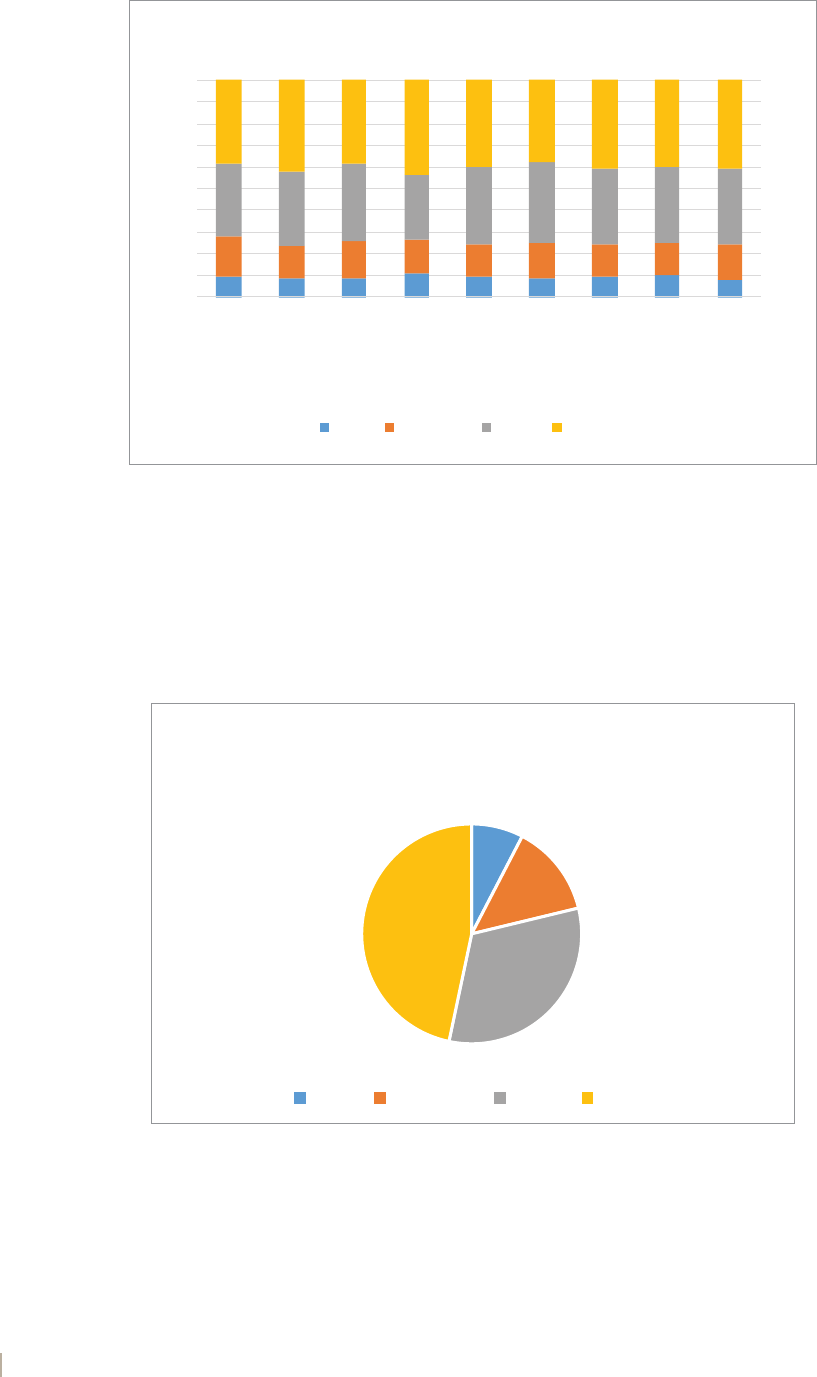
19
2021 Louisiana Health Insurance Survey
Figure 4-4: Insurance Meets Needs, by Region
0%
10%
20%
30%
40%
50%
60%
70%
80%
90%
100%
Insurance Meets Needs, by Region
Never Sometimes Usually Always
New Orleans – 1
Baton Rouge – 2
Houma/Thibodaux – 3
Acadiana – 4
Southwest – 5
Central – 6
Northwest – 7
Northeast – 8
Northshore – 9
The next question involved whether individuals were able to see the provider they needed. Figure 4-5 displays
results for this question, while Figures 4-6 – 4-8 display a breakdown of results across children and adults,
insurance types, and region. Overall, almost half of respondents, or 47%, said they were always able to see the
provider they needed and most of the rest usually were. About 8% of respondents said they were never able to see
the provider they needed.
Figure 4-5: Does your health insurance allow you to see the health care providers you need?
8%
14%
32%
47%
Does your health insurance allow you to see the
health care providers you need?
Never Sometimes Usually Always
Again, adults are slightly more dissatisfied with their access to providers than for access to providers for their children.
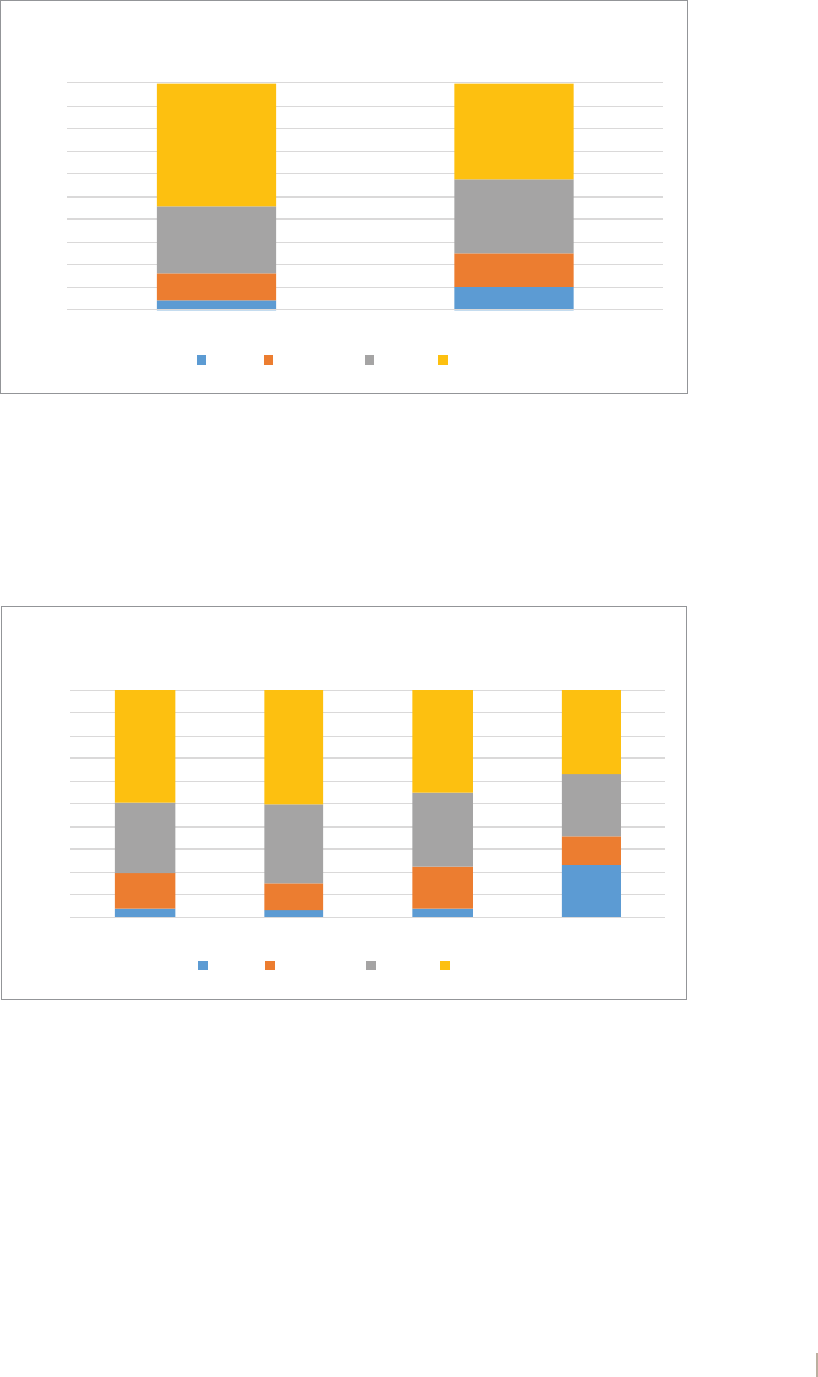
20
2021 Louisiana Health Insurance Survey
Figure 4-6: Ability to See Providers, Children and Adults
0%
10%
20%
30%
40%
50%
60%
70%
80%
90%
100%
Childr en Adults
Ability to See Providers, Children and Adults
Never Sometimes Usually Always
Across the three major insurance types, satisfaction with seeing providers is very similar. One commonly held notion
is that many doctors will not accept Medicaid or that Medicaid provides inferior access to healthcare providers, but
the responses from this survey do not support this idea. Those covered by Medicaid have similar or higher rates of
ability to see providers compared to the other insurance groups.
Figure 4-7: Ability to See Providers, by Insurance Type
0%
10%
20%
30%
40%
50%
60%
70%
80%
90%
100%
Ability to See Providers, by Insurance Type
Never Sometimes Usually Always
Medicaid Employer Purchased Other
And across all regions, there is a similar pattern of satisfaction with providers. Region four again seems to be most
satisfied with being able to see the providers they need, but all regions have similar levels.
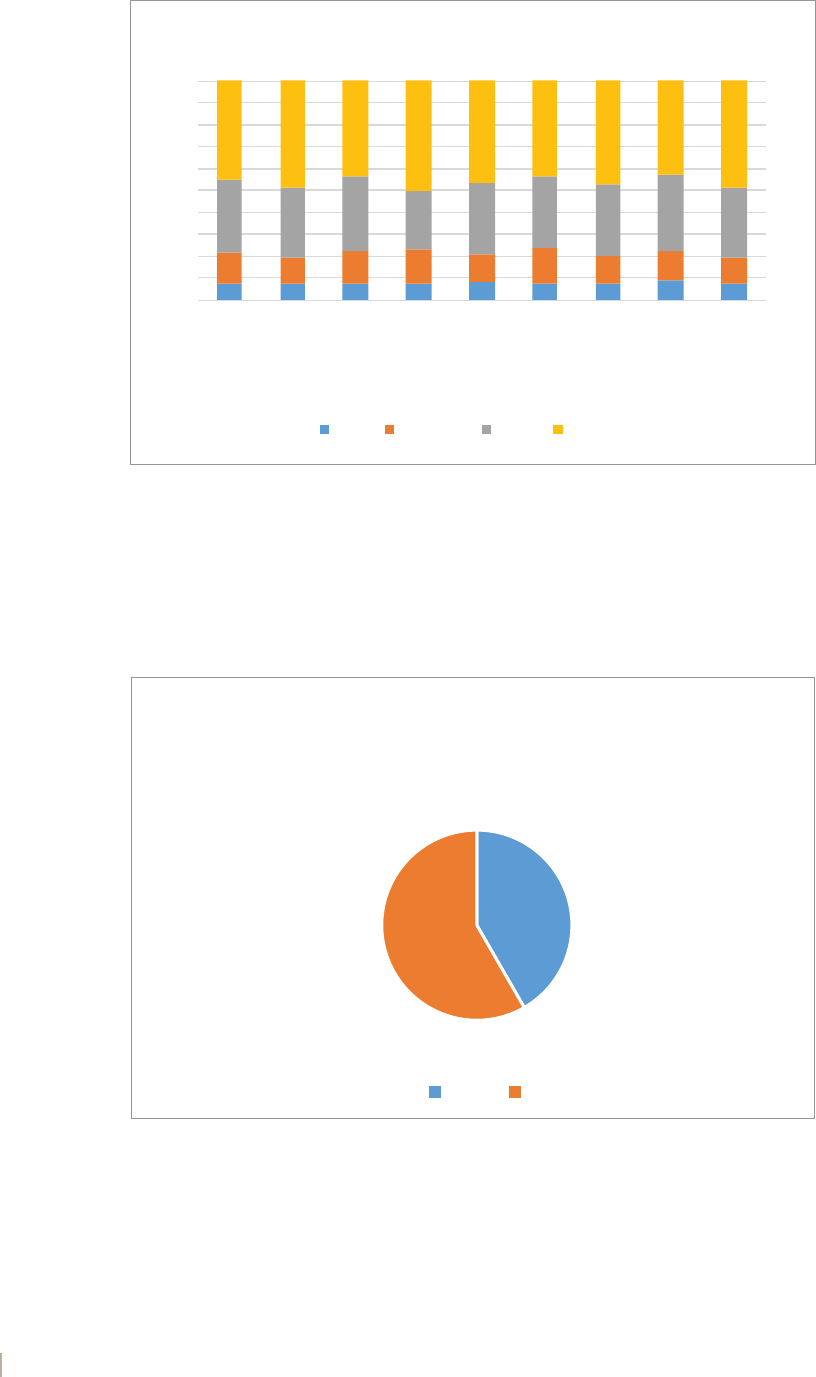
21
2021 Louisiana Health Insurance Survey
Figure 4-8: Ability to See Providers, by Region
0%
10%
20%
30%
40%
50%
60%
70%
80%
90%
100%
Ability to See Providers, by Region
Never Sometimes Usually Always
New Orleans – 1
Baton Rouge – 2
Houma/Thibodaux – 3
Acadiana – 4
Southwest – 5
Central – 6
Northwest – 7
Northeast – 8
Northshore – 9
The last two questions and Figures 4-9 – 4-13 relate to health insurance costs. Overall, approximately 58% of
respondents report that they have no out-of-pocket costs outside of premiums or costs that are covered by
insurance, while 42% said that there were some expenses.
Figure 4-9: Not including health insurance premiums or costs that are covered by insurance, do you pay
any money for your health care?
42%
58%
Ye sNo
Not including health insurance premiums or costs
that are covered by insurance, do you pay any
money for your health care?
Figure 4-10 breaks down paying money for health care by children and adults. About 76% of children had no out-of-
pocket expenses outside of premiums, compared to 53% of adults. This is probably because of the greater reliance
on Medicaid and generally lower health problems of children under age 19.
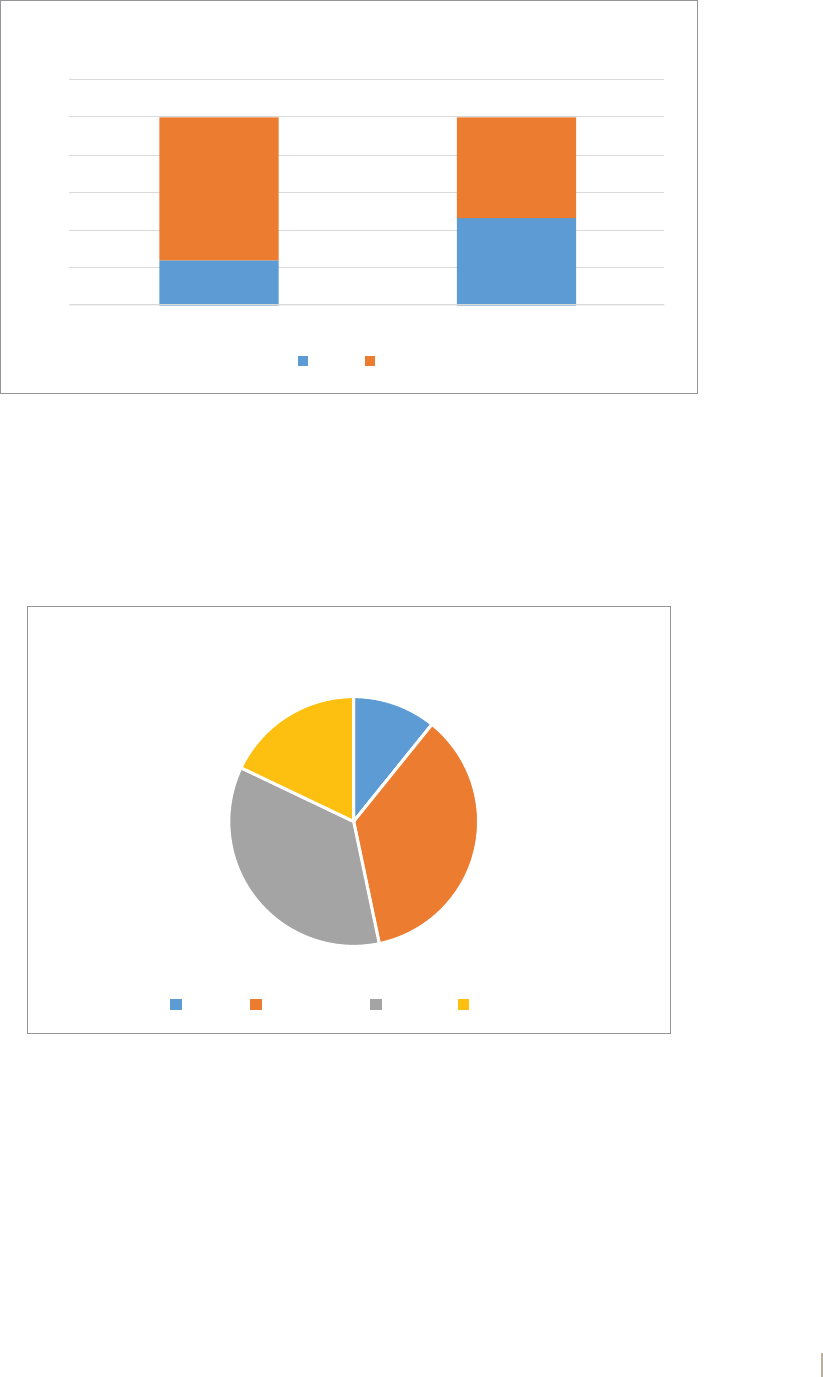
22
2021 Louisiana Health Insurance Survey
Figure 4-10: Pay Money for Health Care, Children and Adults
0%
20%
40%
60%
80%
100%
120%
Ye sNo
Childr en Adults
Pay Money for Health Care, Children and Adults
Figures 4-11 – 4-13 only include respondents that previously answered that they have health insurance costs other
than premiums. In Figure 4-11, most of these expenses were considered reasonable, but 46% of respondents
with costs (an estimated 19% of the entire population, including those who do not pay any costs for their health
insurance) found these expenses to be reasonable “never” or only “sometimes.”
Figure 4-11: How often are these costs reasonable?
11%
36%
35%
18%
How often are these costs reasonable?
Never Sometimes Usually Always
As shown in Figure 4-10, about 76% of children and 53% of adults had no out-of-pocket expenses outside of
premiums. In Figure 4-12 for those with expenses, expenses for children were generally more reasonable than
for adults.
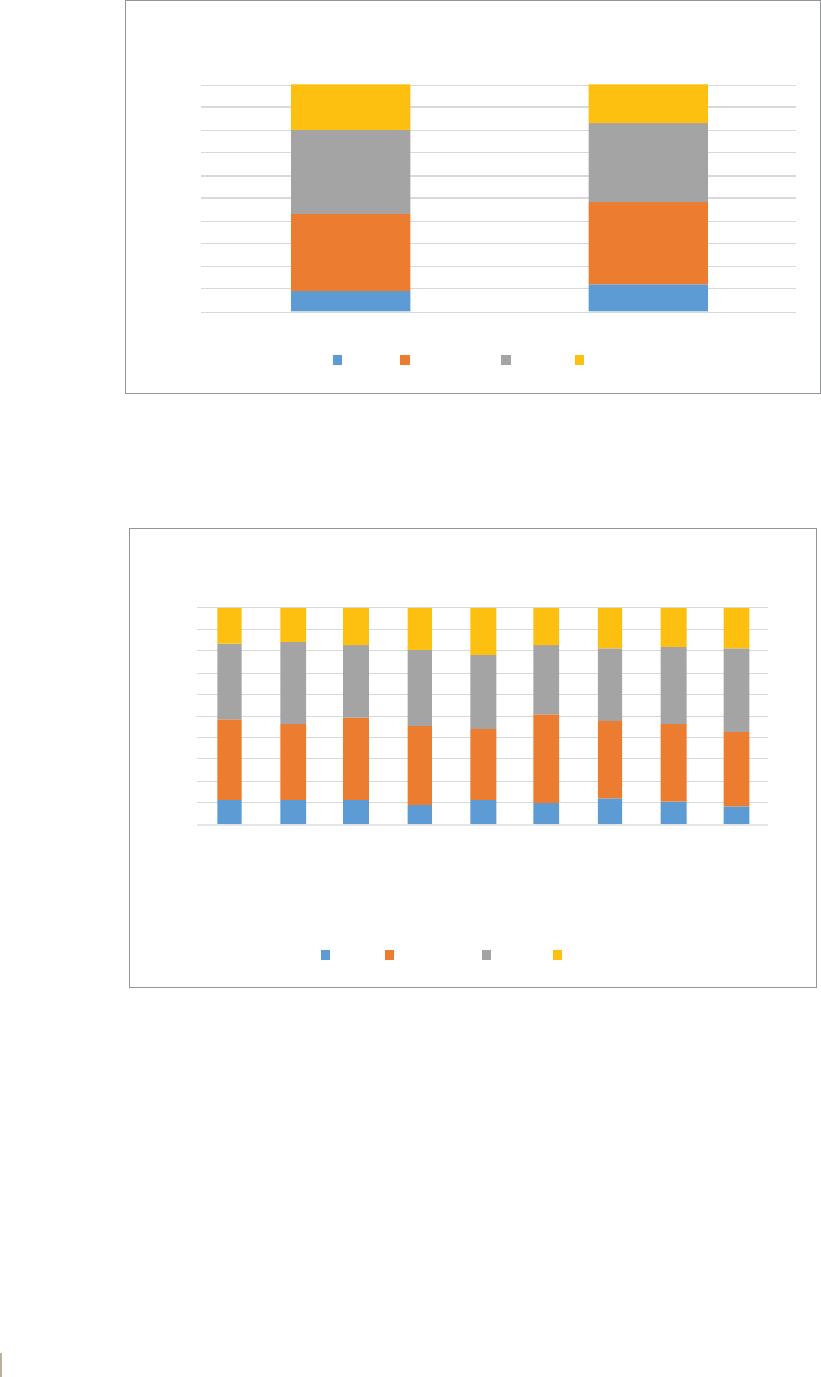
23
2021 Louisiana Health Insurance Survey
Figure 4-12: Costs Reasonable, Children and Adults
0%
10%
20%
30%
40%
50%
60%
70%
80%
90%
100%
Childre
nA
dults
Costs Reasonable, Children and Adults
Never Sometimes Usually Always
The breakout in Figure 4-13 focuses on whether costs are reasonable by region. Regions all have similar responses.
Figure 4-13: Costs Reasonable, by Region
0%
10%
20%
30%
40%
50%
60%
70%
80%
90%
100%
Costs Reasonable, by Region
Never Sometimes Usually Always
New Orleans – 1
Baton Rouge – 2
Houma/Thibodaux – 3
Acadiana – 4
Southwest – 5
Central – 6
Northwest – 7
Northeast – 8
Northshore – 9
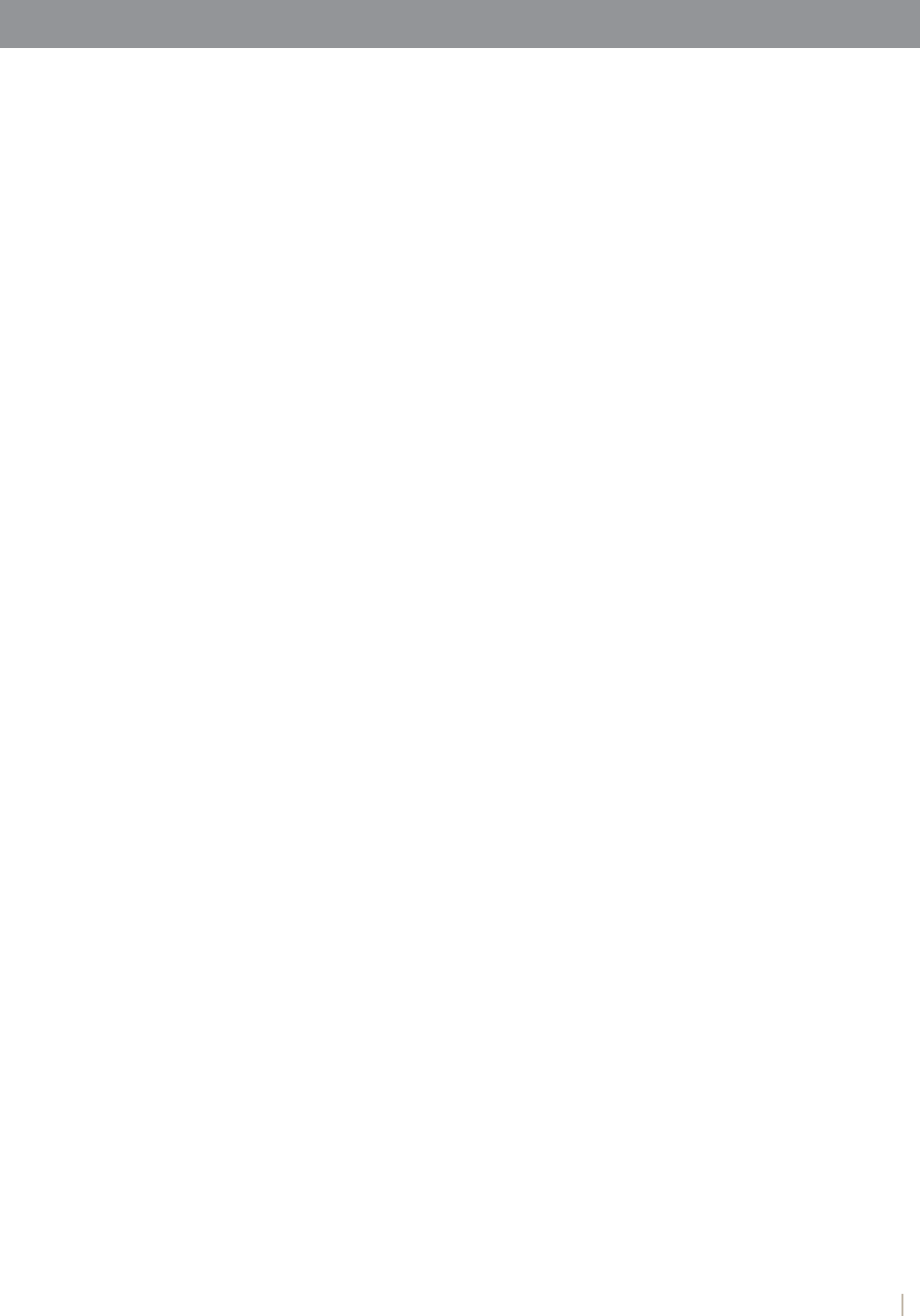
24
2021 Louisiana Health Insurance Survey
5. Coronavirus Pandemic
The biggest change to the health insurance marketplace in 2020-2021 was the Coronavirus pandemic. The
virus upset economic conditions and caused a massive economic slowdown — first with the stay-at-home orders
and school closures in Louisiana in March 2020; continuing through 2021 — the LHIS survey collection period.
This slowdown resulted in large job losses across the United States and Louisiana. More than thirty million
unemployment claims were filed in the U.S. from March 14, 2020 to June 13, 2020.
A majority of the US non-elderly population has employer-sponsored health insurance. While many Americans are
able to switch to a spouse or family member’s insurance provider, or find other sources of coverage, there was a
fear that many Americans would lose their health insurance. It was predicted that twenty-seven million people in the
United States would lose employer sponsored insurance, even after accounting for those who were able to switch
to insurance held by spouses and other household members.
New federal legislation related to the Coronavirus pandemic public health emergency (PHE) sought to expand
access to health insurance and minimize the number of newly uninsured. Eective March 11, 2021, the American
Rescue Plan (ARP) reduces the cost of coverage for millions of Americans enrolled in health insurance marketplaces
by lowering or eliminating health insurance premiums. Through the ARP, 58,000 Louisiana residents were newly
qualified to receive a premium-reducing tax credit, while 10,100 became eligible for zero-dollar benchmark
Marketplace coverage (Department of Health and Human Services, 2021).
Medicaid specifically has been a vital safety net for many losing employer-sponsored insurance during the
pandemic. In March of 2020, Congress passed the Families First Coronavirus Response Act (FFCRA) to provide
state Medicaid programs with a 6.2 percentage point increase in federal matching funds for the duration of the PHE
(Musumeci, 2020). Indirectly, this has also resulted in an increase to states’ CHIP matching funds.
This boost in funding is contingent on states’ adherence to several maintenance of eligibility (MOE) requirements
(Dolan et al., 2020). One such requirement mandates the provision of continuous coverage and prohibits states
from disenrolling any Medicaid beneficiaries during the PHE, which was likely to continue at least until the end of
2021 (Cochran, 2021). Due to this continuous coverage requirement, Louisiana residents insured through Medicaid
since March 2020 have only lost coverage due to voluntary disenrollment, death, or a move to a dierent state.
Before the enactment of FFCRA, disruptions in coverage and loss of coverage frequently occurred among Medicaid
recipients. Often referred to as churning, research indicates that movements in and out of coverage result in higher
administrative costs for states, less predictable state expenditures, and greater monthly expenses for beneficiaries
(Sugar et al., 2021). During the PHE, however, states receiving money through the FFCRA have been required to
maintain continuous coverage of Medicaid beneficiaries, eliminating the usual enrollment churn and contributing to
enrollment increases.
Nationwide, Medicaid enrollment declined from 2017 through 2019, the years prior to the Coronavirus pandemic.
The federal legislative response to the Coronavirus pandemic has also increased health insurance enrollment by
allowing a Special Enrollment Period (SEP). Beginning February 15, 2021, the Biden Administration opened a SEP
for the Health Insurance Marketplace allowing all individuals in HealthCare.gov states to submit a new application
or update an existing application (Department of Health and Human Services, 2021a). Previously, SEPs had only
been available to individuals experiencing qualifying life events. As of July 31, 2021, over 1.8 million Americans
nationwide and 15,000 Louisiana residents have participated in the SEP opportunity (Centers for Medicare &
Medicaid Services, 2021).
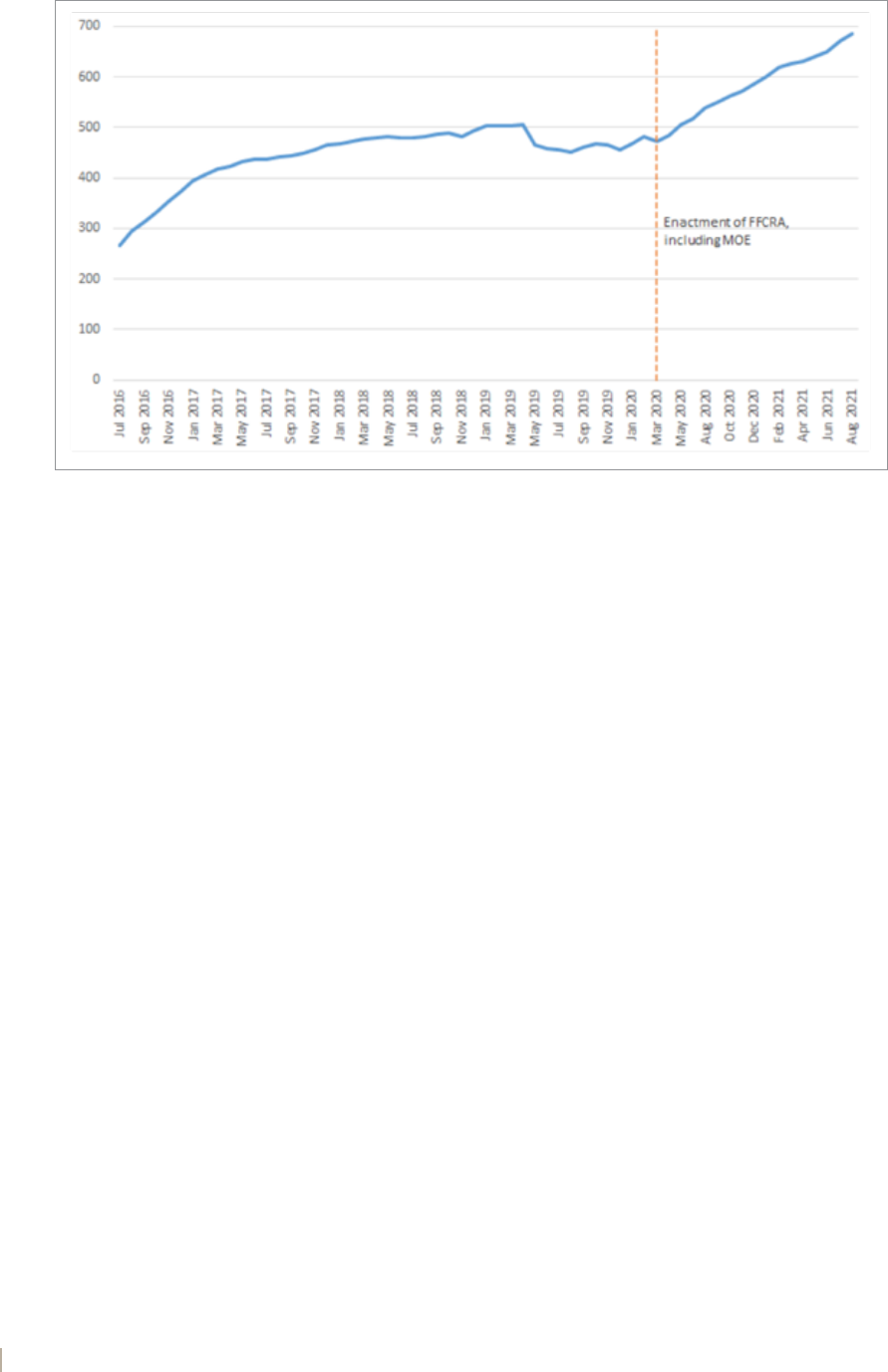
25
2021 Louisiana Health Insurance Survey
Figure 5-1: Louisiana Medicaid Expansion Enrollment over Time (in thousands)
Source: Louisiana Department of Health. Retrieved September, 24, 2021.
Figure 5-1 is a duplicate of Figure l-1 and again shows the resulting dramatic increases in Louisiana Medicaid
enrollment during the pandemic period – now with the additional context of the federal legislative changes that led
to this increase. The 2021 LHIS sources of coverage for adults reflect these changes to the economy and eligibility
requirements. For adults in 2021, employer insurance fell by 2.6% while Medicaid coverage increased by 4.4% and
purchased coverage increased by 1.9%.
Finally, beyond the eect of the Coronavirus pandemic on sources of coverage, the pandemic caused some
problems with access to healthcare. A new question was added to the survey for 2021: “At any time during the last
year, did a member of your household need medical care for something other than Coronavirus, but did not get it
because of the Coronavirus pandemic?” Approximately one quarter, or 24.1% of Louisiana adults answered yes, they
or a household member delayed care because of the pandemic.
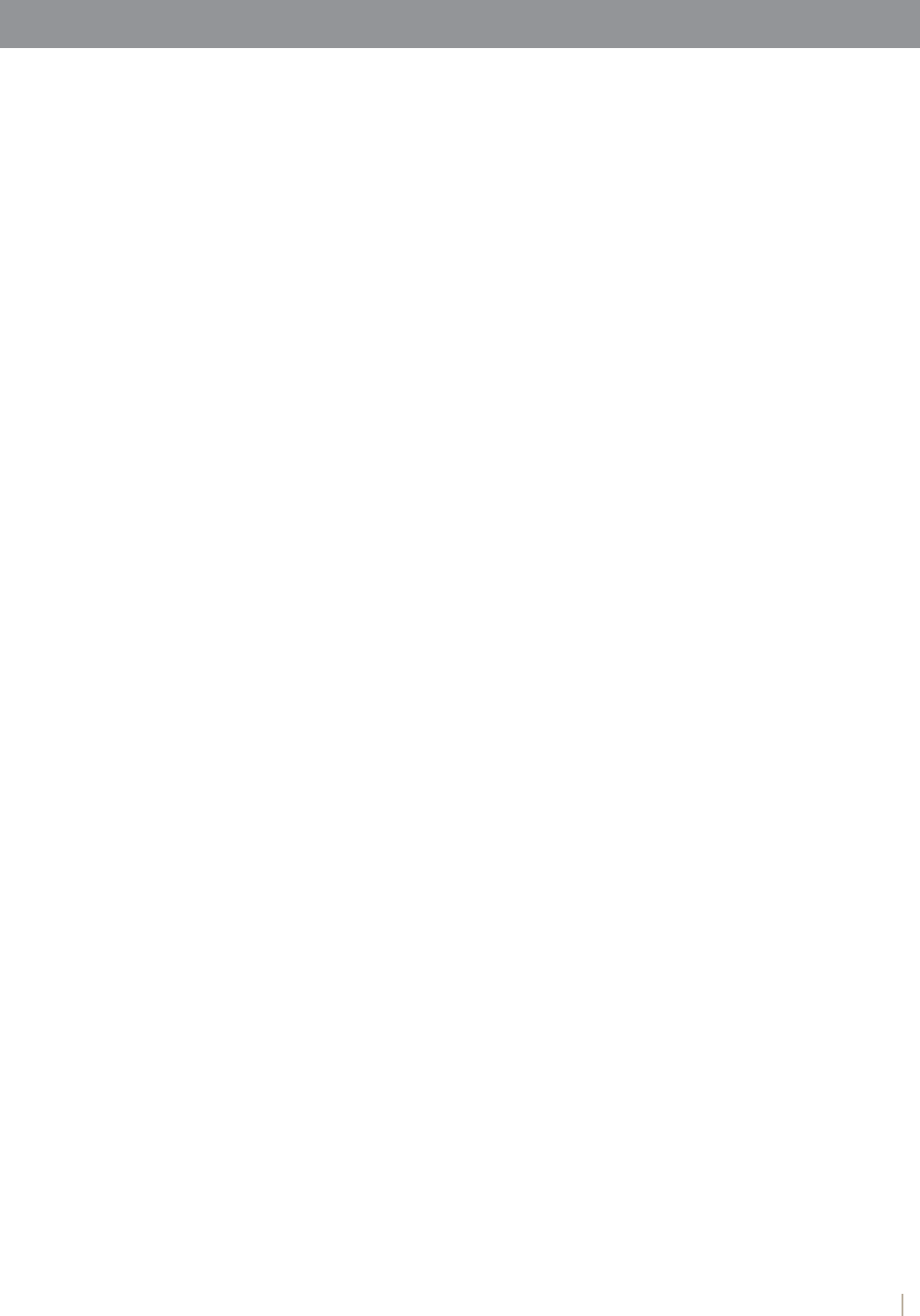
26
2021 Louisiana Health Insurance Survey
Citations
Centers for Medicare & Medicaid Services. (2021, August 10). 2021 Marketplace Special Enrollment Period Report.
https://www.cms.gov/newsroom/fact-sheets/2021-marketplace-special-enrollment-period-report-4
Cochran, N. (2021). Letter to Governors. Department of Health and Human Services. https://ccf.georgetown.edu/wp-
content/uploads/2021/01/Public-Health-Emergency-Message-to-Governors.pdf
Department of Health and Human Services. (2021, March 12). Fact Sheet: The American Rescue Plan: Reduces
Health Care Costs, Expands Access to Insurance Coverage and Addresses Health Care Disparities.
https://www.hhs.gov/about/news/2021/03/12/fact-sheet-american-rescue-plan-reduces-health-care-costs-
expands-access-insurance-coverage.html
Department of Health and Human Services. (2021, February 12). 2021 Special Enrollment Period for Marketplace
Coverage Starts on HealthCare.gov Monday, February 15. https://www.hhs.gov/about/news/2021/02/12/2021-
special-enrollment-period-marketplace-coverage-starts-healthcaregov.html
Dolan, R., Musumeci, M., Tolbert, J., & Rudowitz, R. (2020, December 17). Medicaid Maintenance of Eligibility (MOE)
Requirements: Issues to Watch. Kaiser Family Foundation. https://www.k.org/medicaid/issue-brief/medicaid-
maintenance-of-eligibility-moe-requirements-issues-to-watch/
Louisiana Department of Health. (2021, September 17) LDH Medicaid Expansion Dashboard. Retrieved September
24, 2021, from https://ldh.la.gov/HealthyLaDashboard/
Musumeci, M. (2020, May 04). Key Questions About the New Increase in Federal Medicaid Matching Funds for
COVID-19. Kaiser Family Foundation. https://www.k.org/medicaid/issue-brief/key-questions-about-the-new-
increase-in-federal-medicaid-matching-funds-for-covid-19/
Sugar, S., Peters, C., De Lew, N., & Sommers, B. D. (2021). Medicaid Churning and Continuity of Care: Evidence and
Policy Considerations Before and After the COVID-19 Pandemic. Department of Health and Human Services.
https://aspe.hhs.gov/sites/default/files/private/pdf/265366/medicaid-churning-ib.pdf
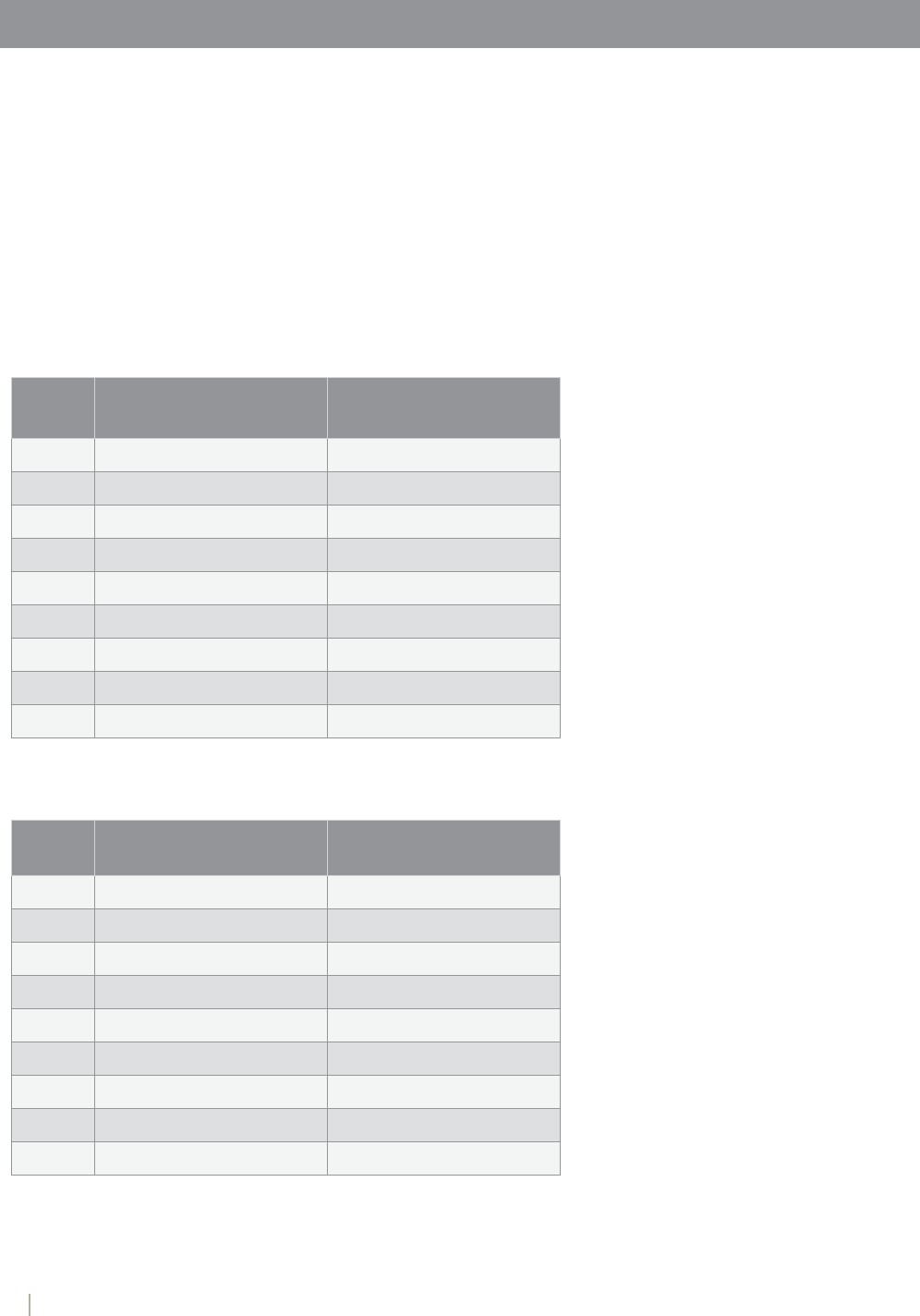
27
2021 Louisiana Health Insurance Survey
Appendix A. Methodology
This appendix includes more details on survey methodology, including dates of survey collection, counts of total
households and individuals for all groups and households with individuals under 19, and the weighting used to
develop survey instruments.
Data was collected over the four month period April to August 2021. Collection methods included telephone
surveys and online surveys. Surveys took an average of 10 minutes to complete, though with a high variance
depending on the number of individuals in the household.
The total number of households and households with individuals under age 19 by region is displayed in Table A-1,
and total number of individuals in Table A-2. The average number of individuals per household was 3.0. These
counts include the Medicaid subsample.
Table A-1 Household Counts
Region Households
Households with Individuals
Under 19
1 1360 555
2 1168 499
3 975 441
4 824 398
5 543 250
6 733 325
7 1037 458
8 763 329
9 1184 560
Table A-2 Individual Counts
Region Individuals Individuals Under 19
1 3762 926
2 3434 914
3 2963 781
4 2545 794
5 1650 481
6 2184 615
7 3000 842
8 2212 614
9 3582 995
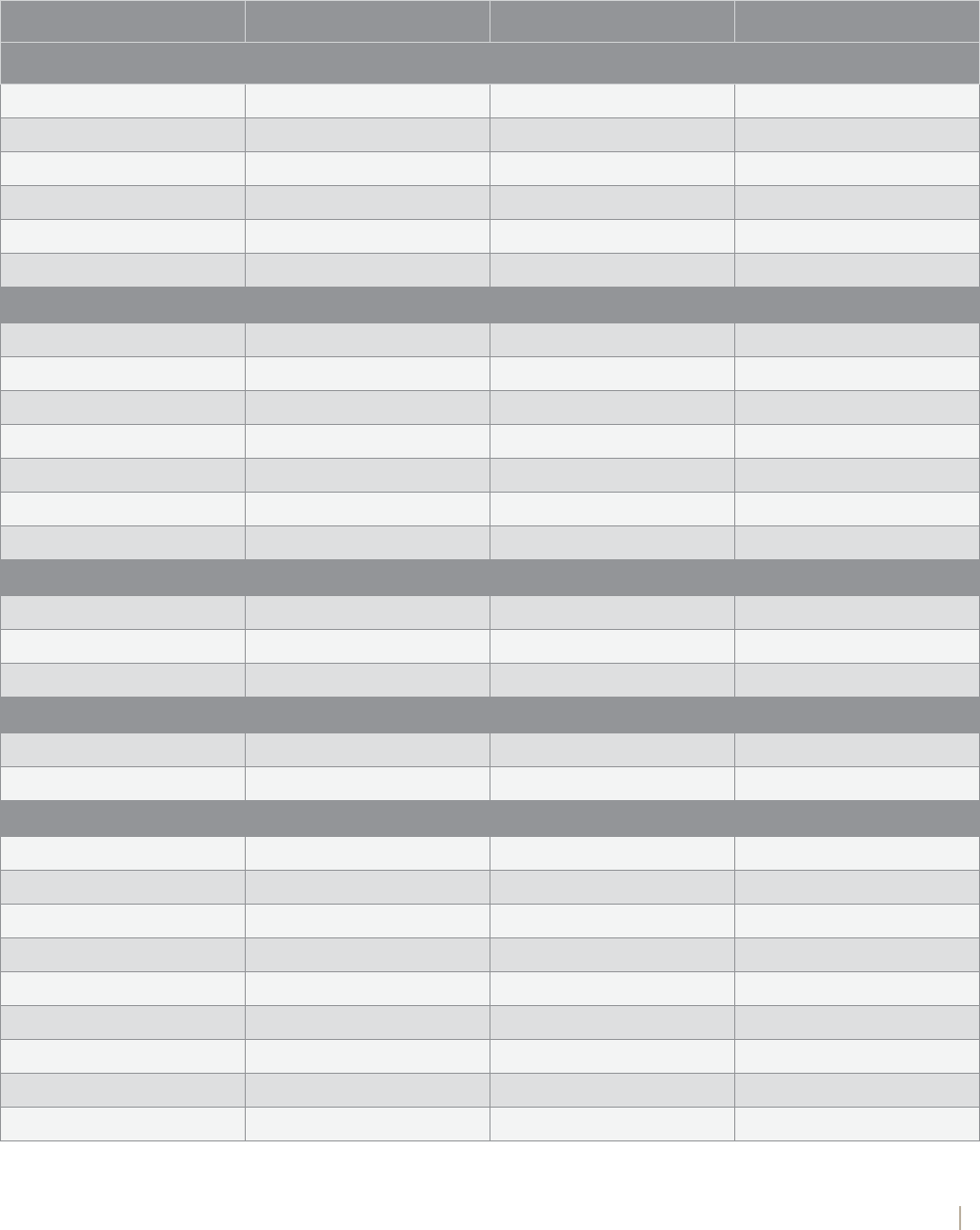
28
2021 Louisiana Health Insurance Survey
Survey data was weighted to reflect the Census Bureau’s 2019 American Community Survey (ACS) population
estimates based on the following categories: income, age, race, gender, and region. Table A-3 shows the
distribution of population across these categories from the raw unweighted survey data and the distribution of the
weighted LHIS data compared to the 2019 ACS.
Table A-3 Weighting
LHIS Unweighted LHIS Weighted ACS 2018
Income
Less than $10,000 11.1% 10.1% 10.1%
$10-15,000 3.8% 5.7% 5.7%
$15-35,000 17.3% 21.2% 21.2%
$35-75,000 26.1% 28.2% 28.2%
$75-150,000 25.9% 24.6% 24.6%
More than $100,000 15.8% 10.2% 10.2%
Age
0-5 years 8.1% 6.4% 6.4%
6-15 years 14.5% 14.7% 14.7%
16-18 years 4.9% 3.9% 3.9%
19-26 years 15.8% 9.0% 9.0%
27-45 years 27.0% 25.3% 25.3%
46-65 years 25.6% 24.5% 24.5%
More than 65 years 4.2% 16.1% 16.1%
Race
White 68.2% 61.8% 61.8%
Black 22.3% 32.4% 32.4%
Other 9.5% 5.8% 5.8%
Gender
Male 46.7% 48.8% 48.8%
Female 53.3% 51.2% 51.2%
Region
New Orleans 14.9% 19.2% 19.2%
Baton Rouge 13.6% 14.7% 14.7%
Houma-Thibodaux 11.7% 8.5% 8.5%
Acadiana 10.0% 13.0% 13.0%
Southwest 6.5% 6.6% 6.6%
Central 8.6% 6.4% 6.4%
Northwest 11.8% 11.5% 11.5%
Northeast 8.7% 7.4% 7.4%
Northshore 14.1% 12.7% 12.7%
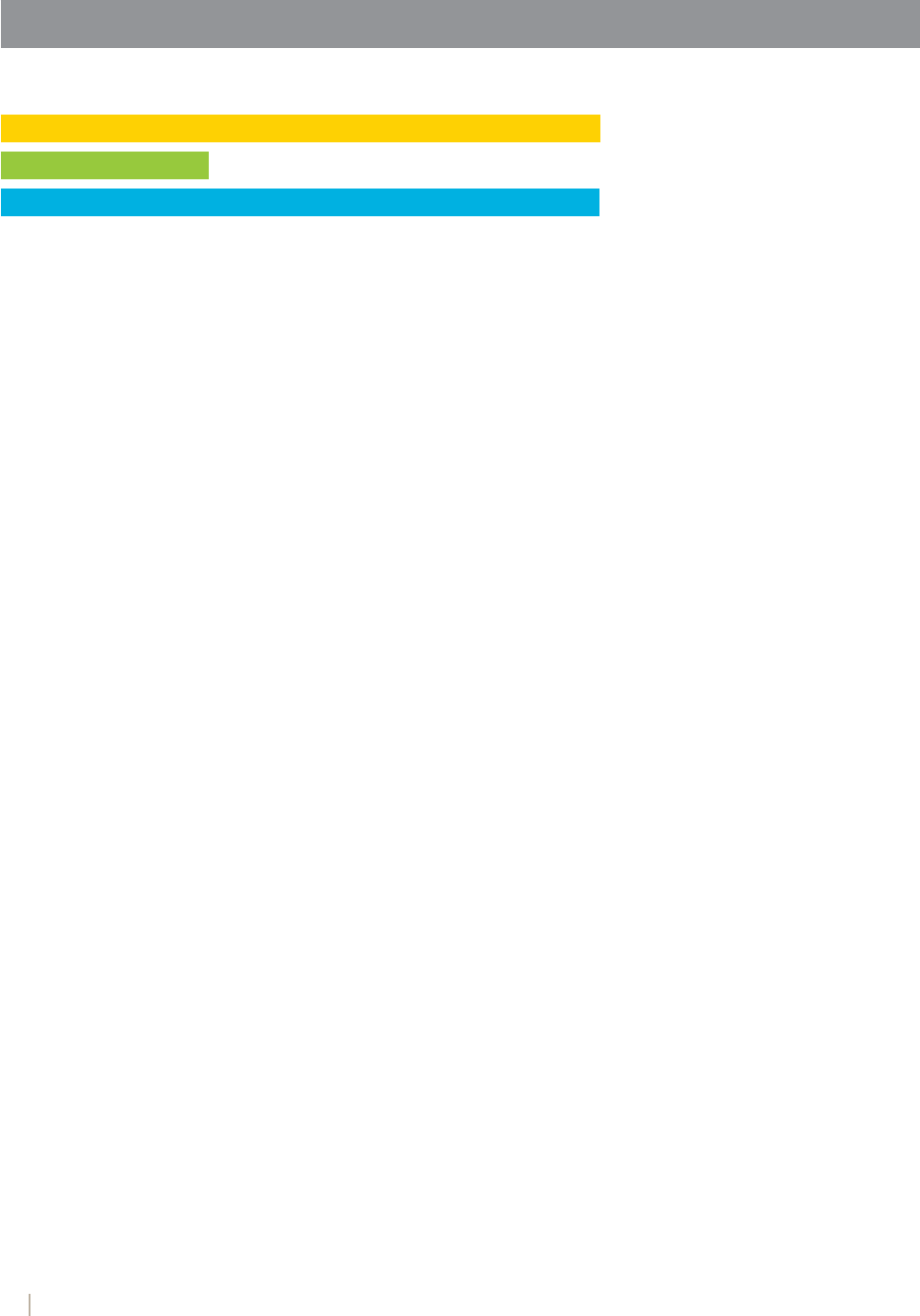
29
2021 Louisiana Health Insurance Survey
Appendix B. LHIS 2021 – Qualtrics
COLOR KEY:
YELLOW: UNIQUE SCENARIOS/WORDINGS FOR EACH HOUSEHOLD MEMBER
GREEN: COMPLEX SKIPS
BLUE: ROSTERS (SECTIONS THAT REPEAT FOR EACH HOUSEHOLD MEMBER)
INTRO QUESTIONS
Q: INT01 {Previously HOME}
Hi, my name is _______________ and I am calling from the Public Policy Research Lab.
We are gathering information about the health and healthcare of Louisiana residents for the Louisiana Health Insurance Survey.
This project is conducted by the Louisiana Department of Health with assistance from Louisiana State University. Your telephone
number has been chosen randomly, and I would like to ask some questions about your healthcare insurance. Your responses
will be combined with others to create aggregate statistics. Any potentially identifiable data will not be released unless required
by law. You have a right to refuse this study or to withdraw at any time, but your participation will benefit Louisiana by informing
policymakers.
Do you have any questions?
[AFTER ANSWERING QUESTIONS, OR IF RESPONDENT DOES NOT HAVE QUESTIONS,
ASK THE QUESTION BELOW]
This study has been approved by the LSU IRB. For questions concerning participant rights, please contact the IRB Chair,
Dr. Dennis Landin, 225-578-8692, or [email protected]. For questions about the survey content, please contact Dek Terrell, 225-578-
3785 or Stephen Barnes, 225-578-3783.
May I proceed?
1. Yes – SKIP TO LANDORC
2. No – TERMINATE SURVEY
Q: INT02 {Previously HOMEB}
Are you sure? We would really appreciate your help.
1. Continue
2. End the call – TERMINATE SURVEY
Q: LANDORC
Have I reached you on a landline or cell phone?
1. Landline – SKIP TO ADLT
2. Cell phone
Q: SAFE
Are you in a safe place to talk?
1. Yes - SKIP TO ADLT
2. No
Q: THANKCEL
We understand, let’s set a callback time.
SKIP TO CB

30
2021 Louisiana Health Insurance Survey
Q: ADLT
To participate in this study, you must meet the requirements of both the inclusion and exclusion criteria.
First, I need to know if you are 18 years of age or older?
1. Yes 18 years old or older – SKIP TO PLACE
2. No, under 18 years’ old
IF ANS = 2 AND LANDORC = 2, SKIP TO INT98
Q: ADLTB
May I speak with someone 18 years old or older who lives there?
1. Person is coming to phone
2. No eligible adults – SKIP TO INT98
3. Eligible adult not home – SKIP TO CB
Q: INT03 {Previously HOMEC}
We are gathering information about the health and healthcare of Louisiana residents. This project is conducted by the Louisiana
Department of Health with assistance from Louisiana State University. Your telephone number has been chosen randomly, and I
would like to ask some questions about your health and healthcare insurance.
May I proceed?
1. Yes
2. No – TERMINATE SURVEY
Q: INT04 {Previously HOMED}
Are you sure? We would really appreciate your help.
1. Continue
2. End the call – TERMINATE SURVEY
Q: ADLT2
First, I need to know if you are 18 years of age or older?
1. Yes 18 years old or older
2. No, under 18 years’ old – SKIP TO INT98
Q: PLACE
Are you currently a resident of Louisiana?
1. Yes
2. No - SKIP TO INT98
8. DON’T KNOW - SKIP TO INT98
9. REFUSED - SKIP TO INT98
Q: MOD3
Is there anyone in your household who is under 65 years of age?
1. Yes
2. No - SKIP TO INT98
8. DON’T KNOW - SKIP TO INT98
9. REFUSED - SKIP TO INT98
Q: KNOW
Are you the most knowledgeable person in your household about the family’s healthcare and health insurance?
1. Yes - SKIP TO PROCEED
2. No
8. DON’T KNOW
9. REFUSED
Q: KNOW2
May I speak to the adult who is most knowledgeable?
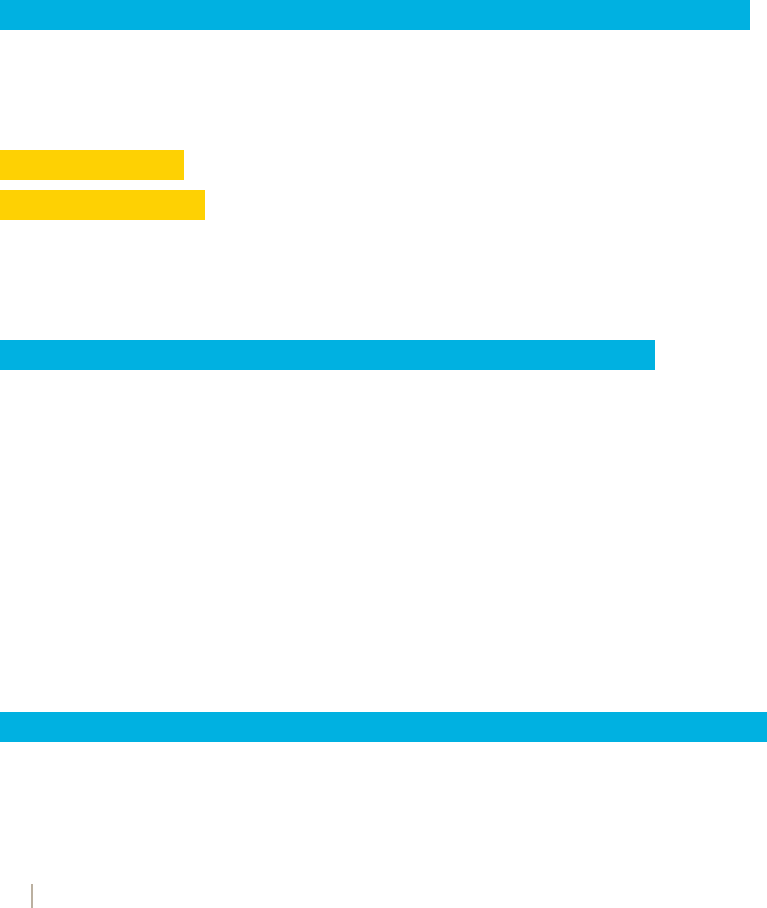
31
2021 Louisiana Health Insurance Survey
1. Yes - SKIP TO PROCEED
2. No – SKIP TO CB
Q: PROCEED
This survey is about your family’s healthcare. I will not ask for any personal information that can identify you. You do not have
to answer any question you do not want to, and you can end the interview at any time. Any information you give me will
be confidential. If you have any questions about the survey, please call Dek Terrell at 225-578-3785, or Dr. Dennis Landin,
Institutional Review Board, 225-578-8672, [email protected].
May we proceed?
1. Yes - SKIP TO HHLD
2. No
Q: INT05 {Previously HELLO2}
Are you sure? We’d really appreciate your help. Again, this won`t take more than 10 to 15 minutes of your time. May we proceed?
1. Yes
2. No – TERMINATE SURVEY
SURVEY BEGINNING
-------------------BEGIN ROSTER-----------------------------------------------------------------------------------------------
Q: HHLD/MEMBER
To begin, I will not ask you for your last name, but I will need to refer to dierent members of the household during the survey.
We will begin with yourself and then include all other people in the household, even people who are not members of your
immediate family.
For respondent, show: What is your first name?
For everyone else, show: What are the first names of the other people who are living or staying there?
INTERVIEWER: SOME FAMILIES MAY BE RELUCTANT TO PROVIDE NAMES. TELL THEM WE WILL BE ASKING ABOUT THE
HEALTHCARE INSURANCE OF EVERY PERSON IN THE HOUSEHOLD AND NEED TO BE ABLE TO REFER TO THEM DURING
THE SURVEY. INITIALS OR SOMETHING SIMILAR WILL ALSO WORK.
-------------------END ROSTER--------------------------------------------------------------------------------
Q: NAMCHK
So the people in your household include… [READ NAMES BELOW]
Is this correct?
1. Yes
2. No - SKIP BACK TO HHLD/MEMBER
Q: MISSCHK
Have I missed any babies or small children or anyone who usually lives here but is traveling, in school, in a hospital, or any foster
children, lodgers, boarders, or roommates?
1. Yes - SKIP BACK TO HHLD/MEMBER
2. No
-------------------BEGIN ROSTER-----------------------------------------------------------------------------------------------
Q: AGE
Now I am going to ask you some questions about each household member, such as their age, whether they are male or female,
and their relationship to you. Let’s start with age.
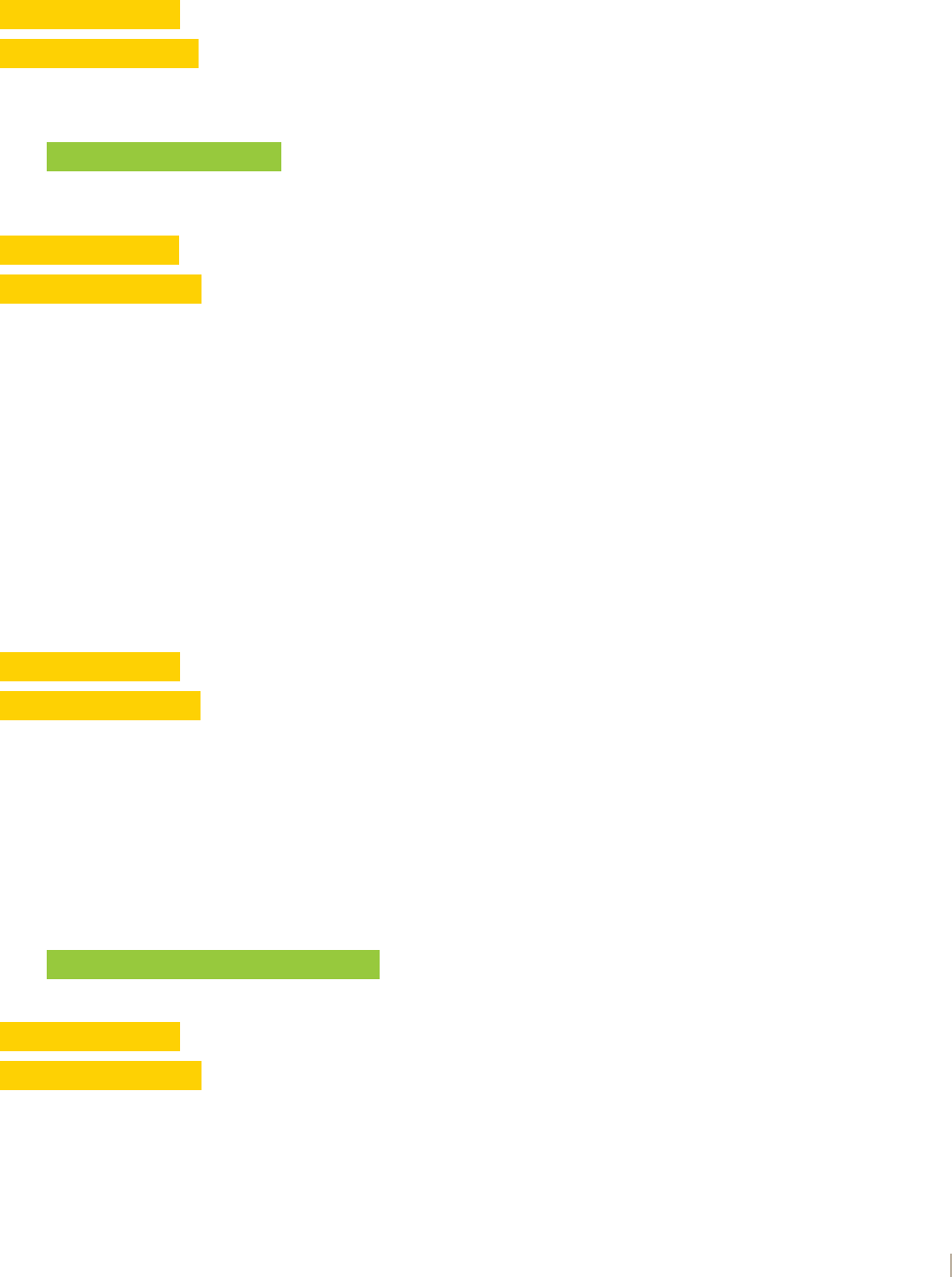
32
2021 Louisiana Health Insurance Survey
IF RESPONDENT IS RELUCTANT, TELL THEM THAT THIS INFORMATION IS USED TO UNDERSTAND DIFFERENCES IN HEALTH
CARE FOR PEOPLE IN DIFFERENT AGE GROUPS AND TO UNDERSTAND THE HEALTH CARE NEEDS OF ALL PEOPLE IN THE
HOUSEHOLD. YOU CAN ASK AGE CATEGORIES BY ENTERING 999.
BABIES NOT YET 1 SHOULD BE CODED AS 0.
For respondent, show: What is your age?
For everyone else, show: What is the age of XX?
ENTER AGE
999 FOR AGE CATEGORIES
IF ANS != 999, SKIP TO SEX
Q: AGECAT
For respondent, show: Would you say your age is:
For everyone else, show: Would you say XX is:
1. 5 years or younger
2. 6 to 15 years
3. 16 to 17 years
4. 18 to 19 years
5. 20 to 25 years
6. 26 to 29 years
7. 30 to 34 years
8. 35 to 44 years
9. 45 to 54 years
10. 55 to 64 years
11. 65 years or older
88. DON’T KNOW
99. REFUSED
Q: SEX
For respondent, show: Are you male or female?
For everyone else, show: Is XX male or female?
IF RESPONDENT IS RELUCTANT, TELL THEM THAT THIS INFORMATION IS USED TO UNDERSTAND DIFFERENCES IN HEALTH
CARE COVERAGE FOR MALES AND FEMALES AND TO UNDERSTAND THE HEALTH CARE NEEDS OF ALL PEOPLE IN THE
HOUSEHOLD.
1. Male
2. Female
8. DON’T KNOW
9. REFUSED
IF AGE < 18 OR AGECAT < 4, SKIP TO REL
Q: MAR
For respondent, show: What is your marital status?
For everyone else, show: What is the marital status of XX?
IF RESPONDENT IS RELUCTANT, TELL THEM THAT THIS INFORMATION IS “USED TO UNDERSTAND DIFFERENCES IN
HEALTH CARE COVERAGE FOR INDIVIDUALS” AND TO UNDERSTAND THE HEALTH CARE NEEDS OF ALL PEOPLE IN THE
HOUSEHOLD.
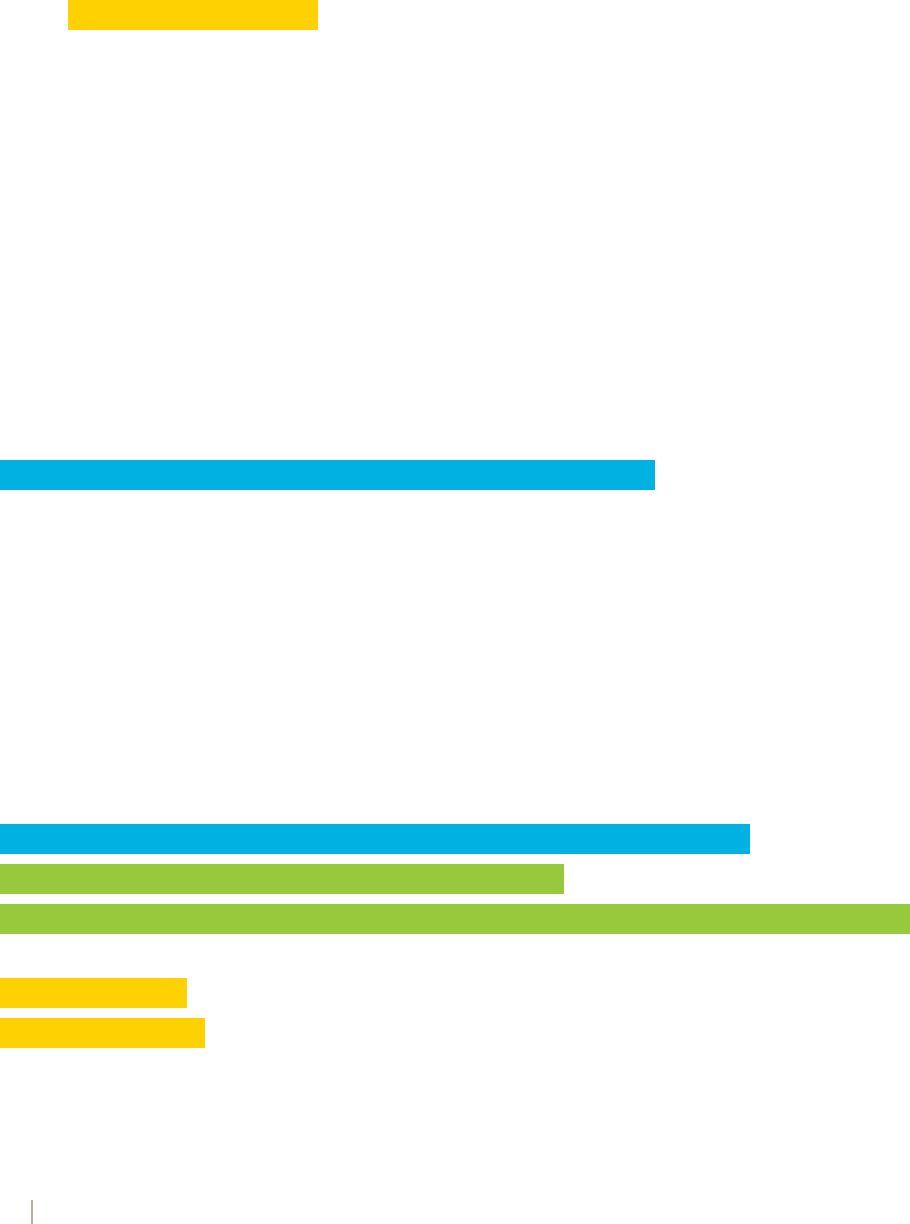
33
2021 Louisiana Health Insurance Survey
1. Married
2. Widowed
3. Divorced
4. Separated
5. Never married
6. Living with a partner
8. DON’T KNOW
9. REFUSED
Q: REL {Not asked about respondent}
How is XX related to you?
DO NOT READ RESPONSES.
1. Spouse
2. Own child/adopted child
3. Step child
4. Foster child
5. Unrelated child
6. Grandchild
7. Parent
8. Brother/sister
9. Son/daughter in law
10. Mother/father in law
11. Other relative
12. Non relative/unmarried partner
88. DON’T KNOW
99. REFUSED
-------------------END ROSTER--------------------------------------------------------------------------------
Q: FAMCHK
Please let me verify everyone you have mentioned. The members of your household include:
NAME AGE SEX RELATIONSHIP
--------------- ------- ------- -----------------------------
Is this correct?
INTERVIEWER: READ EACH MEMBER OF HH (NAME, AGE/AGEGROUP, SEX, RELATIONSHIP) ONE BY ONE AND VERIFY IF IT IS
CORRECT.
1. Yes
2. No - SKIP BACK TO HHLD/MEMBER
-------------------BEGIN ROSTER-----------------------------------------------------------------------------------------------
ASK IF (AGE >= 18 AND <= 25) OR (AGECAT==04 OR AGECAT==05).
{Loop through household list for 18-25 year olds to identify students; this may or may not include respondent.}
Q: STUDCHK
For respondent, show: Are you a full time student?
For everyone else, show: Is XX a full time student?
1. Yes
2. No
8. DON’T KNOW
9. REFUSED
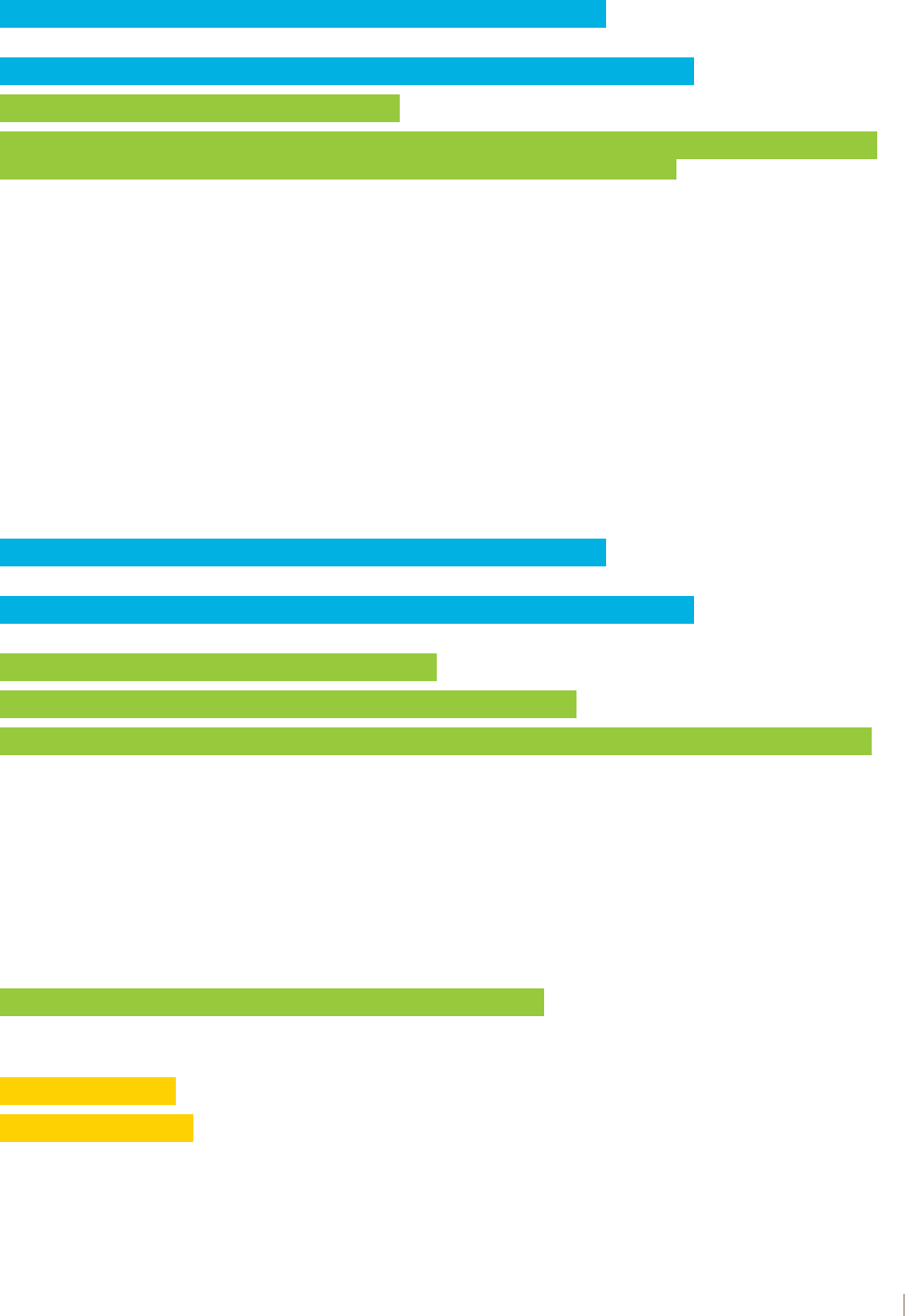
34
2021 Louisiana Health Insurance Survey
-------------------END ROSTER--------------------------------------------------------------------------------
-------------------BEGIN ROSTER-----------------------------------------------------------------------------------------------
IF AGE >= 18 AND MAR=1 AND NOT RESPONDENT
{Questions MARCHK and MARRIAGE are only asked about adults (people 18 and older) other than respondent and
respondent’s spouse. It should only be asked to people who answered married in MAR.}
Q: MARCHK
Is XX married to anyone living there?
1. Yes
2. No – SKIP TO NEXT HHOLD MEMBER
8. DON’T KNOW – SKIP TO NEXT HHOLD MEMBER
9. REFUSED – SKIP TO NEXT HHOLD MEMBER
Q: MARRIAGE
To whom is XX married?
[SHOW HOLD ROSTER]
88. DON’T KNOW
99. REFUSED
-------------------END ROSTER--------------------------------------------------------------------------------
-------------------BEGIN ROSTER-----------------------------------------------------------------------------------------------
IF HOUSEHOLD MEMBER IS UNDER 18, ASK DEPENDENT.
IF HOUSEHOLD MEMBER IS 18 OR OVER BUT UNDER 26, ASK DEPENDENT2
NOTE: DEPENDENT SHOULD NOT BE ASKED OF THE RESPONDENT SINCE THE RESPONDENT SHOULD BE OVER 18.
Q: DEPENDENT
Who claims XX as a dependent?
NOTE: If both spouses are named, select first name given.
[SHOW HHLD ROSTER]
777. Someone who lives outside the household
888. DON’T KNOW
999. REFUSED
AFTER DEPENDENT IS ASKED, SKIP TO NEXT HOUSEHOLD MEMBER
Q: DEPENDENT2
For respondent, show: Did someone claim you as a dependent on their taxes in 2020?
For everyone else, show: Did someone claim XX as a dependent on their taxes in 2020?
1. Yes
2. No – SKIP TO NEXT HHOLD MEMBER
8. DON’T KNOW – SKIP TO NEXT HHOLD MEMBER
9. REFUSED – SKIP TO NEXT HHOLD MEMBER

35
2021 Louisiana Health Insurance Survey
Q: DEPENDENT3
Who claimed XX?
[SHOW HHOLD ROSTER]
777. Someone who lives outside the household
888. DON’T KNOW
999. REFUSED
-------------------END ROSTER--------------------------------------------------------------------------------
IF ANY HHOLD MEMBER HAS REL==1, ASK JOINT. OTHERWISE, SKIP TO COVINT.
Q: JOINT
Have you filed or will you file a joint tax return with [SPOUSE] for 2020?
1. Yes
2. No
8. DON’T KNOW
9. REFUSED
Q: COVINT
Now I will list several types of health insurance or health coverage obtained through jobs, purchased directly, or from
government programs. For each one, please tell me if anyone is currently covered by that type of plan.
Q: COV1
Are you or anyone who lives there covered by a health insurance plan from a CURRENT employer or union, other than the
military? (This includes insurance from family members’ employment.)
INTERVIEWER: REMEMBER WE ARE NOT INCLUDING MILITARY COVERAGE HERE. DO NOT INCLUDE INSURANCE PLANS
PURCHASED THROUGH AN ONLINE EXCHANGE OR ONLINE MARKETPLACE, A PROFESSIONAL ASSOCIATION OR TRADE
GROUP. DO NOT INCLUDE PLANS THAT PROVIDE EXTRA CASH WHILE IN THE HOSPITAL OR PLANS THAT PAY ONLY FOR
ONE TYPE OF SERVICE, SUCH AS DENTAL CARE, VISION CARE, NURSING HOME CARE, OR ACCIDENTS.
1. Yes
2. No - SKIP TO COV1D
8. DON’T KNOW - SKIP TO COV1D
9. REFUSED - SKIP TO COV1D
Q: COV1C
Who is covered?
INTERVIEWER: READ SELECTED MEMBER NAMES AND CONFIRM WITH RESPONDENT.
[Select members from HHOLD roster.]
Q: COV1D
Are you or anyone who lives there covered by a health insurance plan from a PAST employer or union, other than the military?
INTERVIEWER: THIS INCLUDES COBRA AND RETIREMENT PLANS.
INTERVIEWER: REMEMBER WE ARE NOT INCLUDING MILITARY COVERAGE HERE. DO NOT INCLUDE INSURANCE PLANS
PURCHASED THROUGH AN ONLINE EXCHANGE OR ONLINE MARKETPLACE, A PROFESSIONAL ASSOCIATION OR TRADE
GROUP. DO NOT INCLUDE PLANS THAT PROVIDE EXTRA CASH WHILE IN THE HOSPITAL OR PLANS THAT PAY ONLY FOR
ONE TYPE OF SERVICE, SUCH AS DENTAL CARE, VISION CARE, NURSING HOME CARE, OR ACCIDENTS.
1. Yes
2. No - SKIP TO COV2A
8. DON’T KNOW - SKIP TO COV2A
9. REFUSED - SKIP TO COV2A

36
2021 Louisiana Health Insurance Survey
Q: COV1E
Who is covered?
INTERVIEWER: READ SELECTED MEMBER NAMES AND CONFIRM WITH RESPONDENT.
[Select members from HHOLD roster.]
Q: COV2A
Are you or anyone who lives there covered by a health insurance plan bought on your or their own and not through an employer
or union such as a plan bought on the online health insurance marketplace?
INTERVIEWER: SOME PEOPLE CALL THIS THE “ONLINE EXCHANGE” AND THE SITE IS “HEALTHCARE.GOV”. REMEMBER WE
ARE NOT INCLUDING MILITARY COVERAGE HERE. INCLUDE HEALTH INSURANCE PLANS PROVIDED BY COLLEGES AND
UNIVERSITIES TO STUDENTS. ALSO INCLUDE HERE ANY COVERAGE BOUGHT THROUGH A PROFESSIONAL ORGANIZATION
OR ASSOCIATION. DO NOT INCLUDE PLANS THAT PROVIDE EXTRA CASH WHILE IN THE HOSPITAL OR PLANS THAT PAY
ONLY FOR ONE TYPE OF SERVICE, SUCH AS DENTAL CARE, VISION CARE, NURSING HOME CARE, OR ACCIDENTS.
1. Yes
2. No - SKIP TO COV3A
8. DON’T KNOW - SKIP TO COV3A
9. REFUSED - SKIP TO COV3A
Q: COV2C
Who is covered?
INTERVIEWER: READ SELECTED MEMBER NAMES AND CONFIRM WITH RESPONDENT.
[Select members from HHOLD roster.]
Q: COV3A
Are you or anyone who lives there covered by a health insurance plan held in the name of someone who does not live in the
household?
INTERVIEWER: THIS MAY BE COVERAGE THROUGH A PARENT NOT LIVING IN THIS HOUSEHOLD. DO NOT INLCUDE
PLANS THAT PROVIDE EXTRA CASH WHILE IN HOSPITAL OR PLANS THAT PAY ONLY FOR ONE TYPE OF SERVICE, SUCH AS
DENTAL CARE, VISION CARE, NURSING HOME CARE, OR ACCIDENTS.
1. Yes
2. No - SKIP TO COV4A
8. DON’T KNOW - SKIP TO COV4A
9. REFUSED - SKIP TO COV4A
Q: COV3C
Who is covered?
INTERVIEWER: READ SELECTED MEMBER NAMES AND CONFIRM WITH RESPONDENT.
[Select members from HHOLD roster.]
Q: COV4A
Are you or anyone who lives there covered by Medicare, the health insurance plan for people 65 years old or older or persons
with certain disabilities?
[INTERVIEWER: Please note that MEDICARE PROVIDES COVERAGE FOR YOUNGER PEOPLE WITH DISABILITIES AND IS NOT
JUST FOR THE ELDERLY. Also, remember we are not including military coverage here. Include coverage if by a Medicare
Advantage Plan including HMO (Health Maintenance Organization) or PPO (Preferred Provider Organization) well as traditional
Medicare. Include Part A and Part B.]
1. Yes
2. No - SKIP TO COV5A
8. DON’T KNOW - SKIP TO COV6A1
9. REFUSED - SKIP TO COV6A1
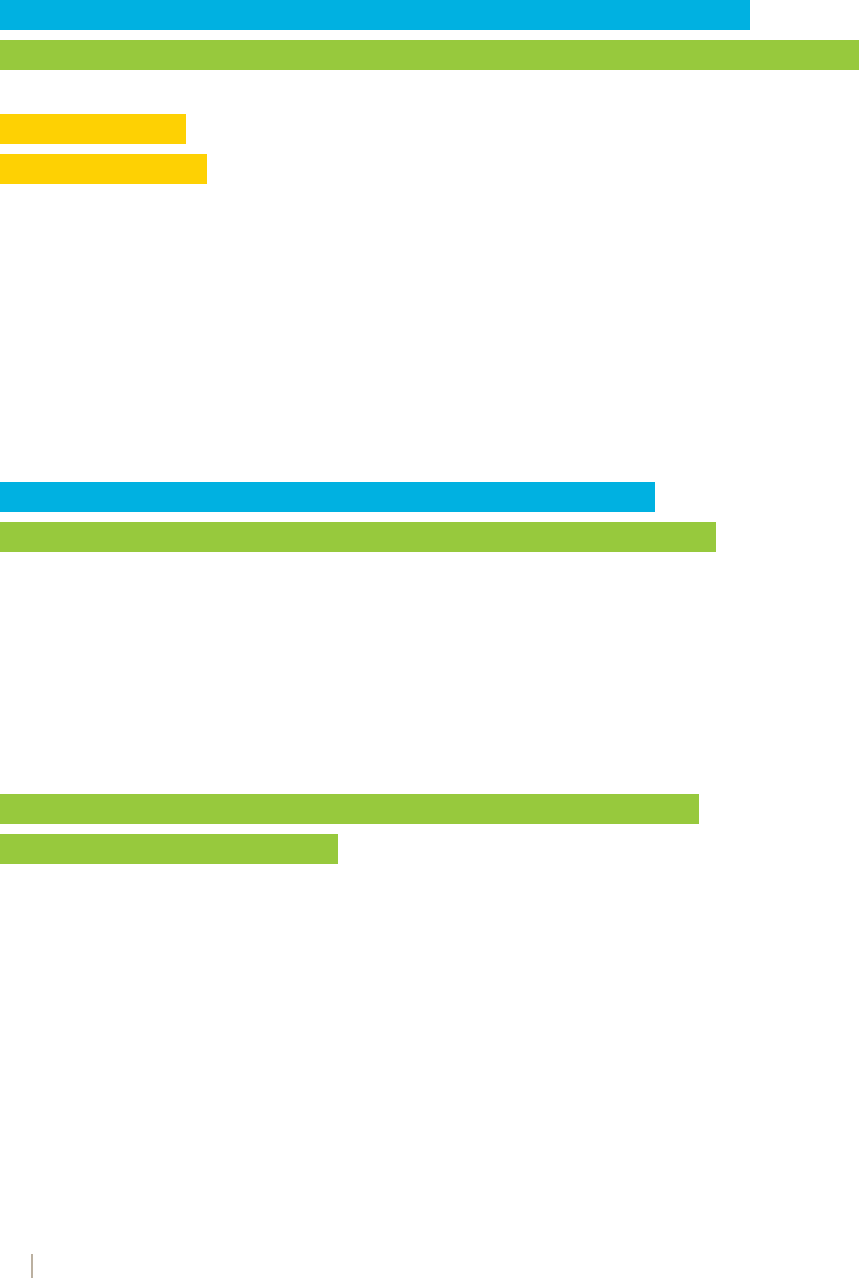
37
2021 Louisiana Health Insurance Survey
Q: COV4C
Who is covered?
INTERVIEWER: READ SELECTED MEMBER NAMES AND CONFIRM WITH RESPONDENT.
[Select members from HHOLD roster.]
-------------------BEGIN ROSTER-----------------------------------------------------------------------------------------------
{ASK COV5A FOR ADULTS OVER 65 IF THEY REPORT NO MEDICARE. OTHERWISE SKIP TO COV6A-D.}
Q: COV5A
For respondent, show: I noticed that you are AGE 65 OR OLDER, but not covered by Medicare. Is that correct?
For everyone else, show: I noticed that XX is AGE 65 OR OLDER, but is not covered by Medicare. Is that correct?
1. Yes - SKIP TO COV6A1
2. No, they should be added to Medicare – SKIP BACK TO COV4C
3. No, they are younger than 65 - SKIP TO COV5B
8. DON’T KNOW - SKIP TO COV6A1
9. REFUSED - SKIP TO COV6A1
Q: COV5B
What is the correct age?
ENTER 0-64;
888 FOR DON’T KNOW
999 FOR REFUSED.
-------------------END ROSTER--------------------------------------------------------------------------------
------------------------ {COV6A, “YES”, SKIP TO COV6C} ------------------------------------------------------
Q: COV6A
Are you or anyone who lives there enrolled in a Medicaid plan? You may also have heard it called Healthy Louisiana or LACHIP.
INTERVIEWER: MEDICAID PROVIDES LOW COST OR NO COST HEALTH INSURANCE FROM THE STATE OF LOUISIANA FOR
LOW INCOME CHILDREN AND ADULTS, OR PEOPLE WITH DISABILITIES
1. Yes - SKIP TO COV6C
2. No
8. DON’T KNOW
9. REFUSED
-------------------------------------------------------------------------------------------------------------------------------
IF COV6A NOT “YES”, SKIP TO COV9A
Q: COV6C
Who is enrolled?
INTERVIEWER: READ SELECTED MEMBER NAMES AND CONFIRM WITH RESPONDENT.
[Select members from HHOLD roster.]
------------------------------------------------------------------------
Q: COV9A
Are you or anyone who lives there covered by TRICARE, CHAMPUS, CHAMP-VA, VA or some other type of military health
insurance?
1. Yes
2. No - SKIP TO NOCHECK
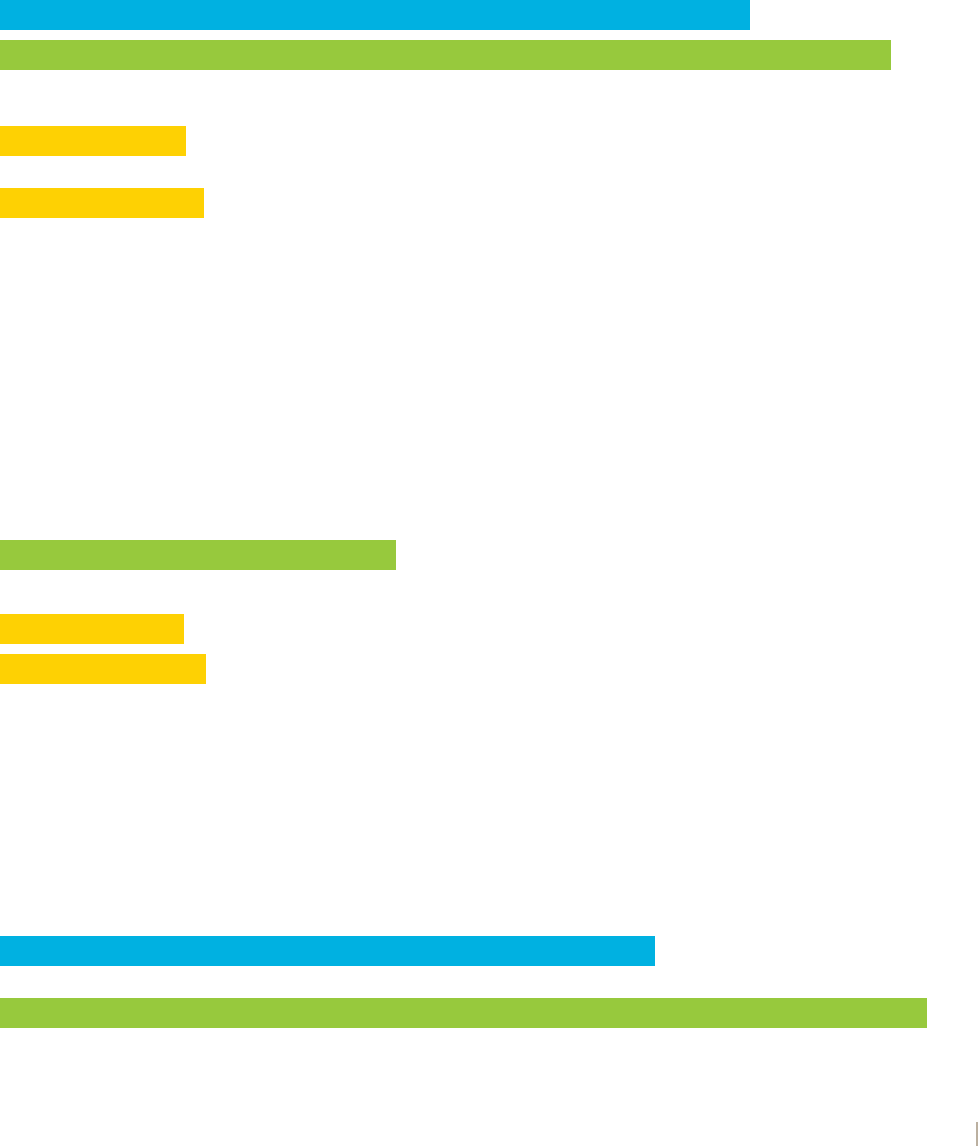
38
2021 Louisiana Health Insurance Survey
8. DON’T KNOW - SKIP TO NOCHECK
9. REFUSED - SKIP TO NOCHECK
Q: COV9C
Who is covered?
INTERVIEWER: READ SELECTED MEMBER NAMES AND CONFIRM WITH RESPONDENT.
[Select members from HHOLD roster.]
-------------------------------------------------------------------------------
-------------------BEGIN ROSTER-----------------------------------------------------------------------------------------------
Only ask NOCHECK and NINSREA if a HHOLD Member was not listed on any of the plans from COV1-COV9
Q: NOCHECK
For respondent, show: According to the information we have, you do not have health care coverage of any kind. Do you have
health insurance or coverage through a plan that I might have missed?
For everyone else, show: According to the information we have, XX does not have health care coverage of any kind. Does XX
have health insurance or coverage through a plan that I might have missed?
DO NOT READ RESPONSES.
1. No, not covered by any plan
2. Health insurance from a current or past employer/union
3. Health insurance bought on his or her own including the online Marketplace
4. Covered by a plan held by someone who does not live in the household
5. Medicare
6. Healthy Louisiana, Bayou Health, Medicaid, or LaCHIP
7. TRICARE/CHAMPUS/CHAMP-VA, VA, Other Military
8. Other state plan (Please specify – RECORD ANSWER IN NEW QUESTION)
8. DON’T KNOW
9. REFUSED
IF ANS = 2-8, SKIP TO NEXT HHOLD MEMBER
Q: NINSREA
For respondent, show: What is the main reason that you do not have health insurance?
For everyone else, show: What is the main reason that XX does not have health insurance?
1. Medical problems
2. Too expensive/can’t aord it/premium too high
3. Don’t believe in insurance
4. Don’t need insurance/usually healthy
5. Free or inexpensive care is readily available
6. Online Marketplace too confusing/no Internet access
7. Other (specify– RECORD ANSWER IN NEW QUESTION)
8. DON’T KNOW
9. REFUSED
-------------------END ROSTER--------------------------------------------------------------------------------
IF THERE ARE ANY HHOLD MEMBERS WHO ARE UNCOVERED, ASK NINAMT. OTHERWISE, SKIP TO CONTCOV
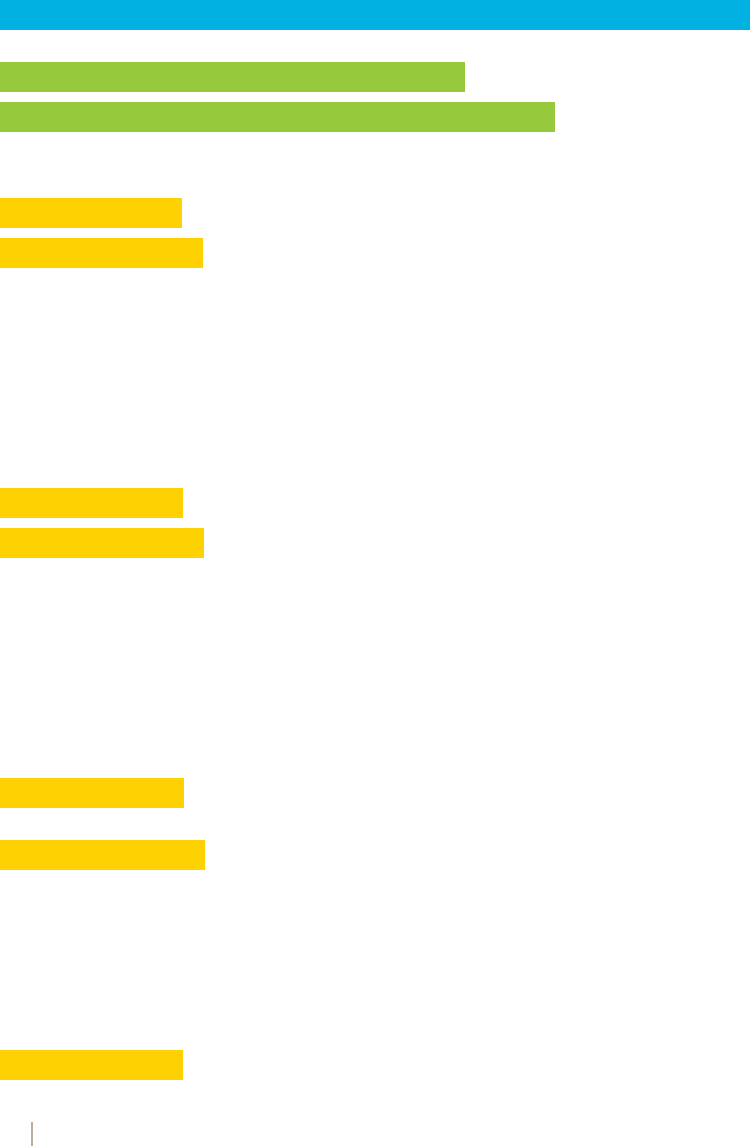
39
2021 Louisiana Health Insurance Survey
Q: NINAMT
What is your best estimate of how much you would be willing or able to pay per month for health insurance coverage for all
uninsured members of the household?
1. LESS THAN $25
2. $26-$49
3. $50-$99
4. $100-$149
5. $150-$200
6. More than $200
8. DON’T KNOW
9. REFUSED
-------------------BEGIN ROSTER-----------------------------------------------------------------------------------------------
IF HHOLD MEMBER HAS INSURANCE, ASK CONTCOV
IF HHOLD MEMBER DOES NOT HAVE INSURANCE, ASK UNPLAN
Q: CONTCOV
For respondent, show: Since [$MONTH $DAY $LASTYEAR] were you continuously covered by health insurance?
For everyone else, show: Since [$MONTH $DAY $LASTYEAR] was XX continuously covered by health insurance?
NOTE: IF CHILDREN LESS THAN 1 HAVE BEEN COVERED THEIR ENTIRE LIVES, CHOOSE YES.
1. Yes – SKIP TO NEXT HHOLD MEMBER
2. No
8. DON’T KNOW – SKIP TO NEXT HHOLD MEMBER
9. REFUSED – SKIP TO NEXT HHOLD MEMBER
Q: COMMNTH
For respondent, show: For how many months were you not covered by some type of health insurance plan?
For everyone else, show: For how many months was XX not covered by some type of health insurance plan?
ENTER NUMBER 1-11;
888 FOR DON’T KNOW AND
999 FOR REFUSED
AFTER ANSWERING COMMNTH, SKIP TO NEXT HHOLD MEMBER
-----------------------------------------------------------------------------------------------------------------------------------------------------
Q: UNPLAN
For respondent, show: Has there been anytime in the past 12 months that you have been covered by some type of health
insurance plan?
For everyone else, show: Has there been anytime in the past 12 months that XX has been covered by some type of health
insurance plan?
1. Yes
2. No – SKIP TO NEXT HHOLD MEMBER
8. DON’T KNOW – SKIP TO NEXT HHOLD MEMBER
9. REFUSED – SKIP TO NEXT HHOLD MEMBER
Q: UNPLANY
For respondent, show: For how many months were you not covered by some type of health insurance plan?
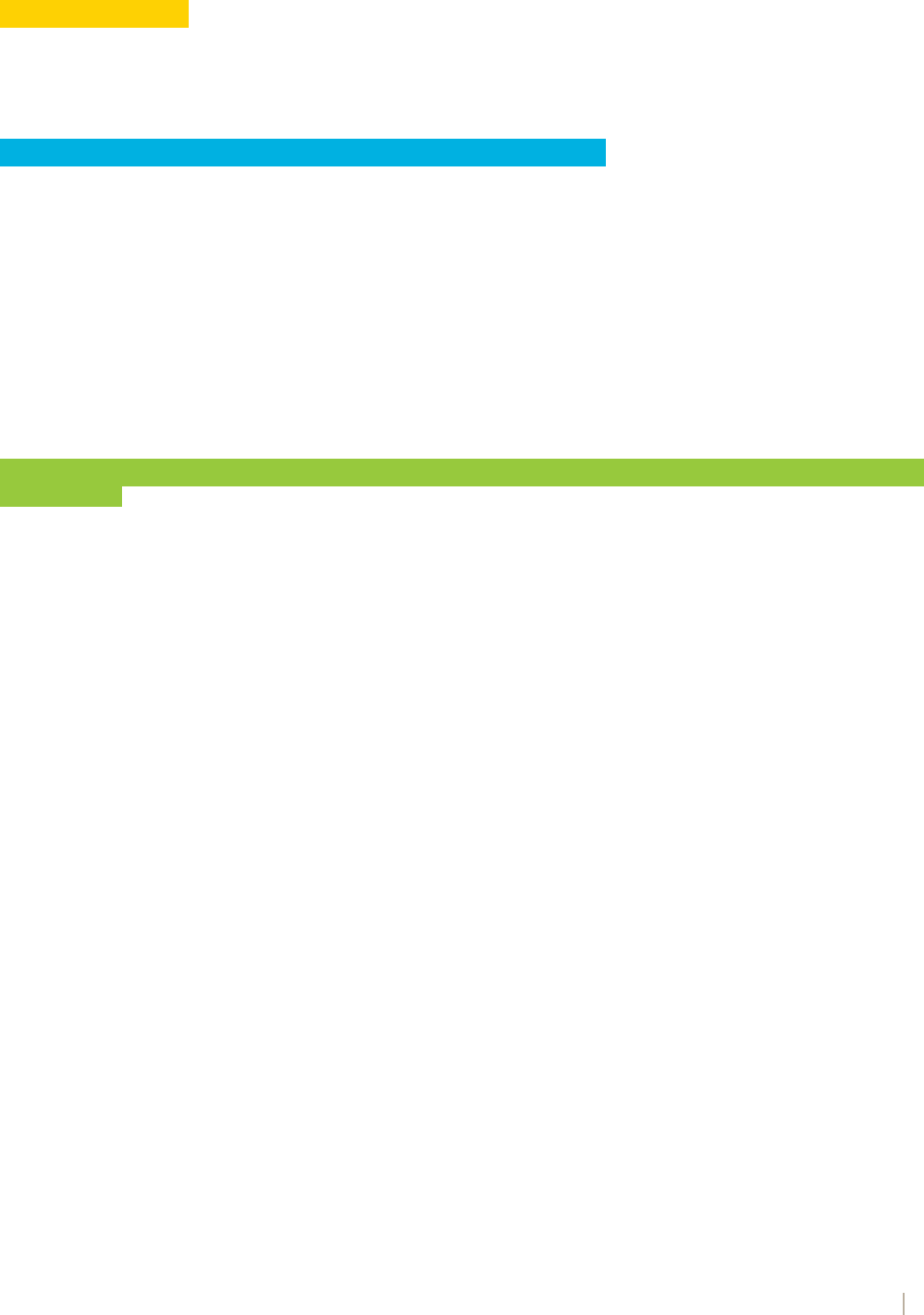
40
2021 Louisiana Health Insurance Survey
For everyone else, show: For how many months was XX not covered by some type of health insurance plan?
ENTER NUMBER 1-11;
888 FOR DON’T KNOW
999 FOR REFUSED
.
-------------------END ROSTER--------------------------------------------------------------------------------
Q: PREG
Is anyone in the household pregnant?
1. Yes
2. No - SKIP TO PGMS3A
8. DON’T KNOW - SKIP TO PGMS3A
9. REFUSED - SKIP TO PGMS3A
Q: PREG1
And who in the household is pregnant?
[Select members from HHOLD roster.]
-------------------------------------------------------------------------------------------------------------------------------------------------
{FOR PGMS3, THERE ARE THREE VERSIONS A, B, AND C. EACH RESPONDENT WILL BE RANDOMLY ASSIGNED ONE OF
THE THREE.}
Q: PGMS3A
Before today, had you heard of Healthy Louisiana, the way most of Louisiana’s Medicaid recipients receive health care services?
1. Yes
2. No
8. DON’T KNOW
9. REFUSED
Q: PGMS3C
Before today, had you heard of LaCHIP, a way many of Louisiana’s Medicaid recipients receive health care services?
1. Yes
2. No
8. DON’T KNOW
9. REFUSED
------------------------------------------------------------------------------------------------------------------------
Q: COVID1
At any time during the last year, did a member of your household need medical care for something other than Coronavirus, but
did not get it because of the Coronavirus pandemic?
1. Yes
2. No
Q: COVID2
Has any household member signed up for Medicaid/LaCHIP due to financial hardships caused by the Coronavirus pandemic?
1. Yes
2. No
If YES ask
Q: COVID2C
Which household members signed up for Medicaid/LaCHIP due to financial hardships caused by the Coronavirus pandemic?
[Select members from HHOLD roster.]
------------------------------------------------------------------------------------------------------------------------
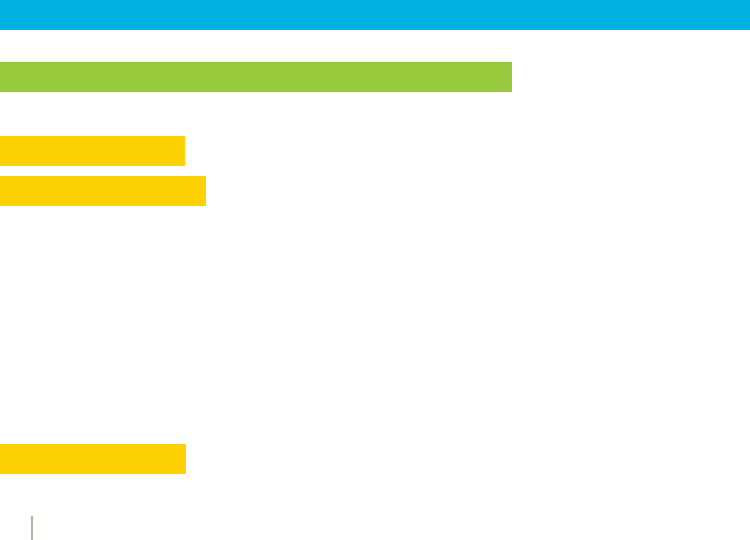
41
2021 Louisiana Health Insurance Survey
Q: DELAY
In the past 12 months, was there any time when you needed medical care, but delayed or didn’t get it?
INTERVIEWER: THIS DOES NOT INCLUDE DENTAL CARE. IF THEY SAY DENTAL CARE, PROBE BY ASKING, “OTHER THAN
DENTAL CARE?” AND REPEAT THE QUESTION IF NECESSARY.
1. Yes
2. No - SKIP TO MED1
8. DON’T KNOW - SKIP TO MED1
9. REFUSED - SKIP TO MED1
Q: DELAY2
Was there any reason why you delayed or did not get medical care when you thought you needed to?
01. Cost/Too expensive
02. Do not have insurance
03. Couldn’t get o work
04. Didn’t have transportation to the doctor’s oce/Doctor’s Oce too far
05. Oce wasn’t open when I could get there
06. No child care
07. No access for people with disabilities
08. Couldn’t get an appointment
09. Other [please specify]
10. No reason
88. Don’t know
99. Refused
Q: MED1
In the past 12 months, was there any time when you needed prescription medication but delayed or did not get it because you
couldn’t aord it?
1. Yes
2. No
8. DON’T KNOW
9. REFUSED
Q: WORKINT
The next series of questions is about jobs and earnings. Answers to these questions are very important because they help to
explain whether or not people can aord the health care they need. I want to emphasize that this information is confidential and
will be used for statistical purposes only.
-------------------BEGIN ROSTER-----------------------------------------------------------------------------------------------
IF HHOLD MEMBER IS < 16, SKIP TO NEXT HHOLD MEMBER
Q: WORK
For respondent, show: Are you now employed at a job or business?
For everyone else, show: Is XX now employed at a job or business?
INTERVIEWER: IF PERSON HAS A JOB BUT IS NOT AT WORK BECAUSE OF ILLNESS, VACATION, OR STRIKE, COUNT THIS
PERSON AS EMPLOYED.
1. Yes
2. No - SKIP TO WRK3
8. DON’T KNOW - SKIP TO WRK3
9. REFUSED - SKIP TO WRK3
Q: WORK1B
For respondent, show: Are you working full time or part time?
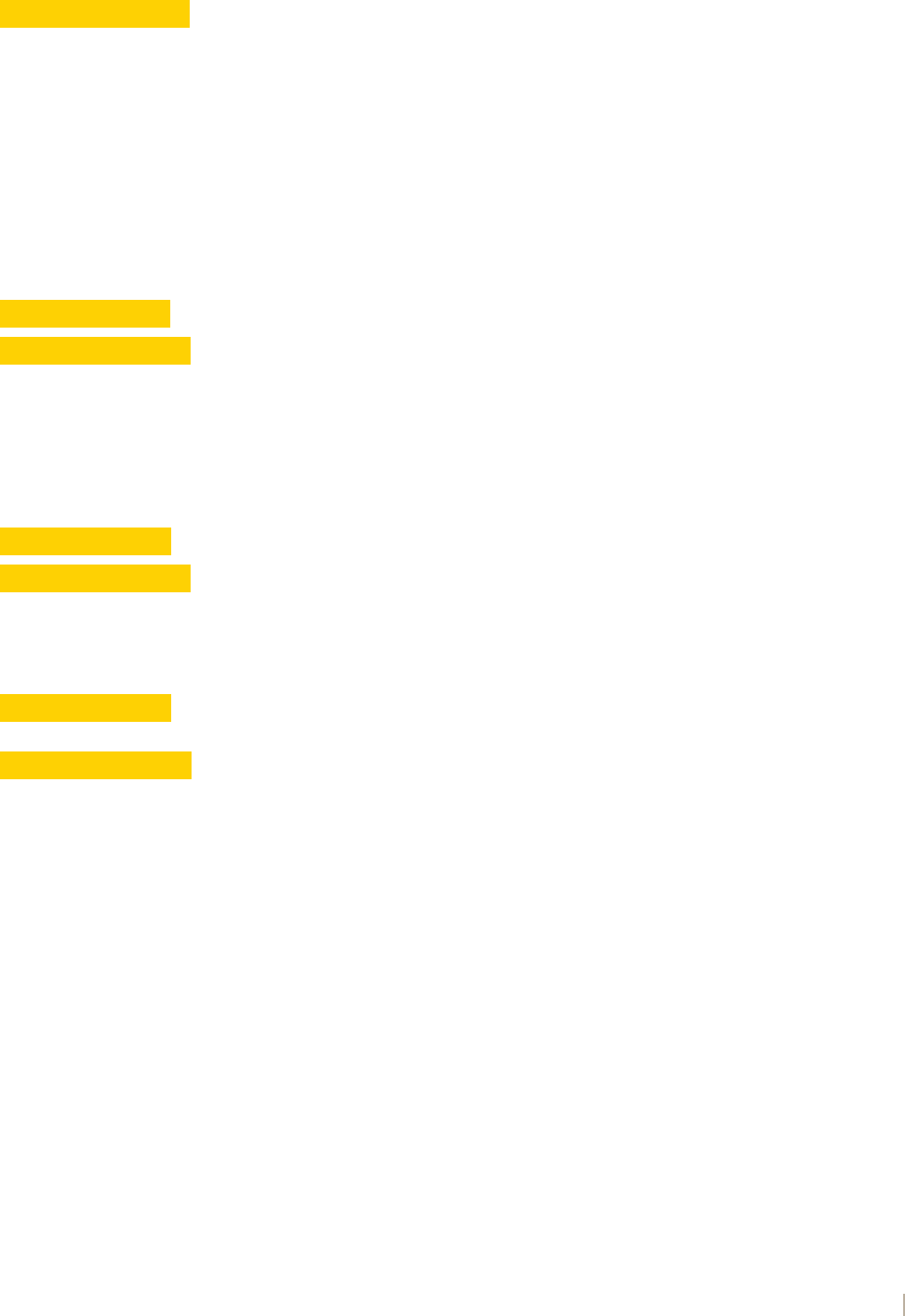
42
2021 Louisiana Health Insurance Survey
For everyone else, show: Is XX working full time or part time?
INTERVIEWERS: READ ONLY IF NECESSARY
Full Time means 30 or more hours per week
Part Time means less than 30 hours per week
NOTE: THIS QUESTION IS ABOUT THE PRIMARY JOB.
1. Full time
2. Part time
8. DON’T KNOW
9. REFUSED
Q: WRK2
For respondent, show: Are you working for an employer, self-employed or both?
For everyone else, show: Is XX working for an employer, self-employed or both?
1. Working for employer
2. Self-employed only – SKIP TO SELFB
3. Working for an employer and self-employed
8. DON’T KNOW
9. REFUSED
Q: OCC
For respondent, show: What is your occupation?
For everyone else, show: What is XX’s occupation?
INTERVIEWER: PROBE TO FIND OUT THEIR OCCUPATION. EX: ACCOUNTANT. IF MORE THAN ONE JOB, FIND PRIMARY JOB.
Q: BEPNUMA
For respondent, show: Thinking about the particular location or facility where you work, how many people are employed at that
location full or part time?
For everyone else, show: Thinking about the particular location or facility where XX works, how many people are employed at
that location full or part time?
INTERVIEWER: READ RESPONSES. IF THE RESPONDENT NAMES A CHAIN AS THE EMPLOYER, HOW MANY PEOPLE ARE AT
HIS OR HER LOCATION. EXAMPLE: WALMART-ASK HOW MANY WORK AT HIS OR HER WALMART STORE
NOTE: This question is about the primary job.
1. Less than 50
2. 50-99 employees
3. 100 or more employees - SKIP TO PAY1
8. Don’t know
9. Refused
Q: BEPNUMB2
Counting all locations where this employer operates, what is your best estimate of the total number of persons who work for this
employer?
INTERVIEWER: IF THE RESPONDENT NAMES A CHAIN AS THE EMPLOYER, ESTIMATE HOW MANY PEOPLE ARE AT ALL
LOCATIONS COMBINED
1. Less than 50
2. 50-99 employees
3. 100 or more employees
8. DON’T KNOW
9. REFUSED
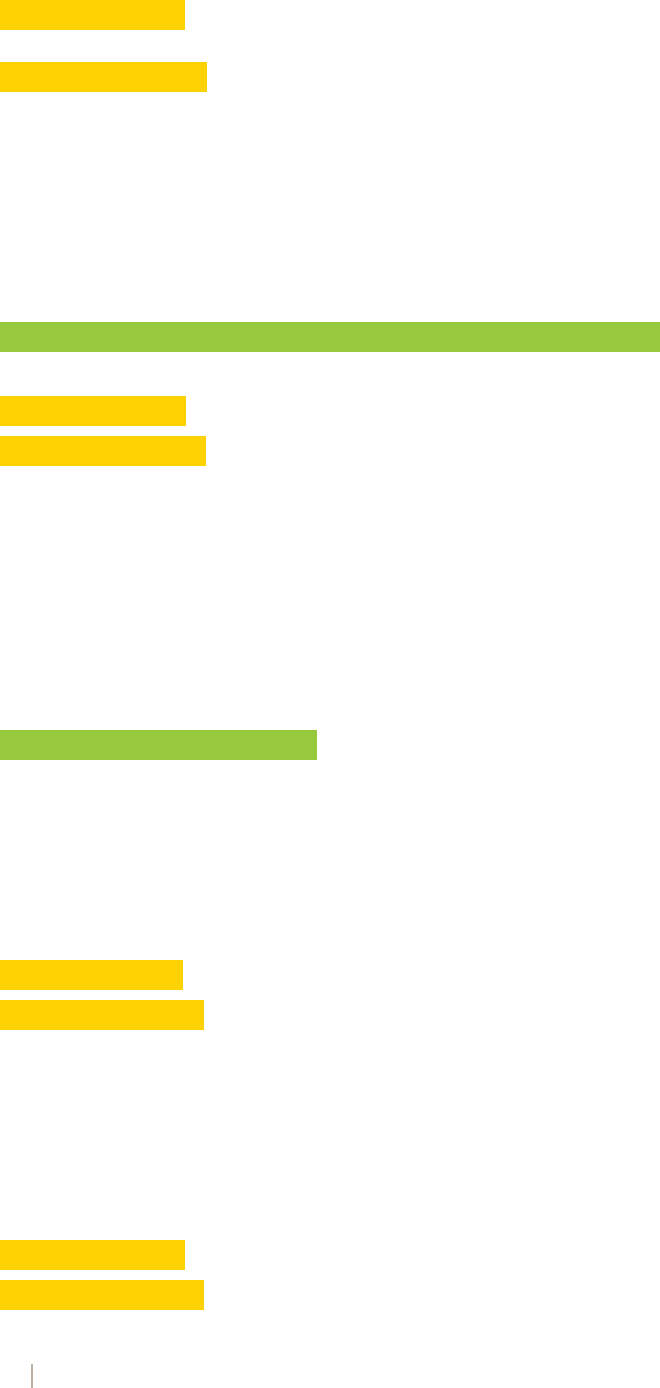
43
2021 Louisiana Health Insurance Survey
Q: PAY1
For respondent, show: How much did you earn in wages or salary in the last 12 months?
Include Overtime, Tips, Bonuses
For everyone else, show: How much did XX earn in wages or salary in the last 12 months?
Include Overtime, Tips, Bonuses
INTERVIEWER: REMIND PERSON IF HESITANT THAT THIS IS CONFIDENTIAL, STATISTICAL INFORMATION ONLY AND WILL
HELP PROVIDE INFORMATION TO DEVELOP AFFORDABLE HEALTH CARE PLANS.
IF ASKED, INCLUDE OVERTIME, TIPS, BONUSES, AND COMMISSION.
IF ASKED, THIS IS BEFORE TAX.
ENTER (0-9999999), OR
-8 FOR DON’T KNOW
-9 FOR REFUSED
ONLY ASK HOURLY/PAY2/TIPS/LENGT SET OF QUESTIONS IF PAY1 IS -8 OR -9
Q: HOURLY
For respondent, show: Do you know how much you make per hour?
For everyone else, show: Do you know how much XX makes per hour?
1. Yes
2. No – SKIP TO SELF
8. DON’T KNOW – SKIP TO SELF
9. REFUSED – SKIP TO SELF
Q: PAY2
How much is that?
ENTER (1-999), OR
-8 FOR DON’T KNOW
-9 FOR REFUSED
IF ANS <0 OR > 7.24 SKIP TO LENGT
Q: TIPS
That is less than minimum wage. Please include tips and commissions.
ENTER (1-999), OR
-8 FOR DON’T KNOW
-9 FOR REFUSED
Q: LENGT
For respondent, show: About how many months per year do you typically work at the job?
For everyone else, show: About how many months per year does XX typically work at the job?
INTERVIEWER: WE ARE ASKING THIS QUESTION TO FIND OUT ABOUT SEASONAL WORKERS LIKE SOME FISHERMEN WHO
WORK ONLY PART OF THE YEAR EVERY YEAR. ENTER 0 FOR LESS THAN ONE MONTH.
ENTER (0-12), OR
-8 FOR DON’T KNOW
-9 FOR REFUSED
Q: WORKHRS
For respondent, show: How many hours per week do you usually work at this job?
For everyone else, show: How many hours per week does XX usually work at this job?
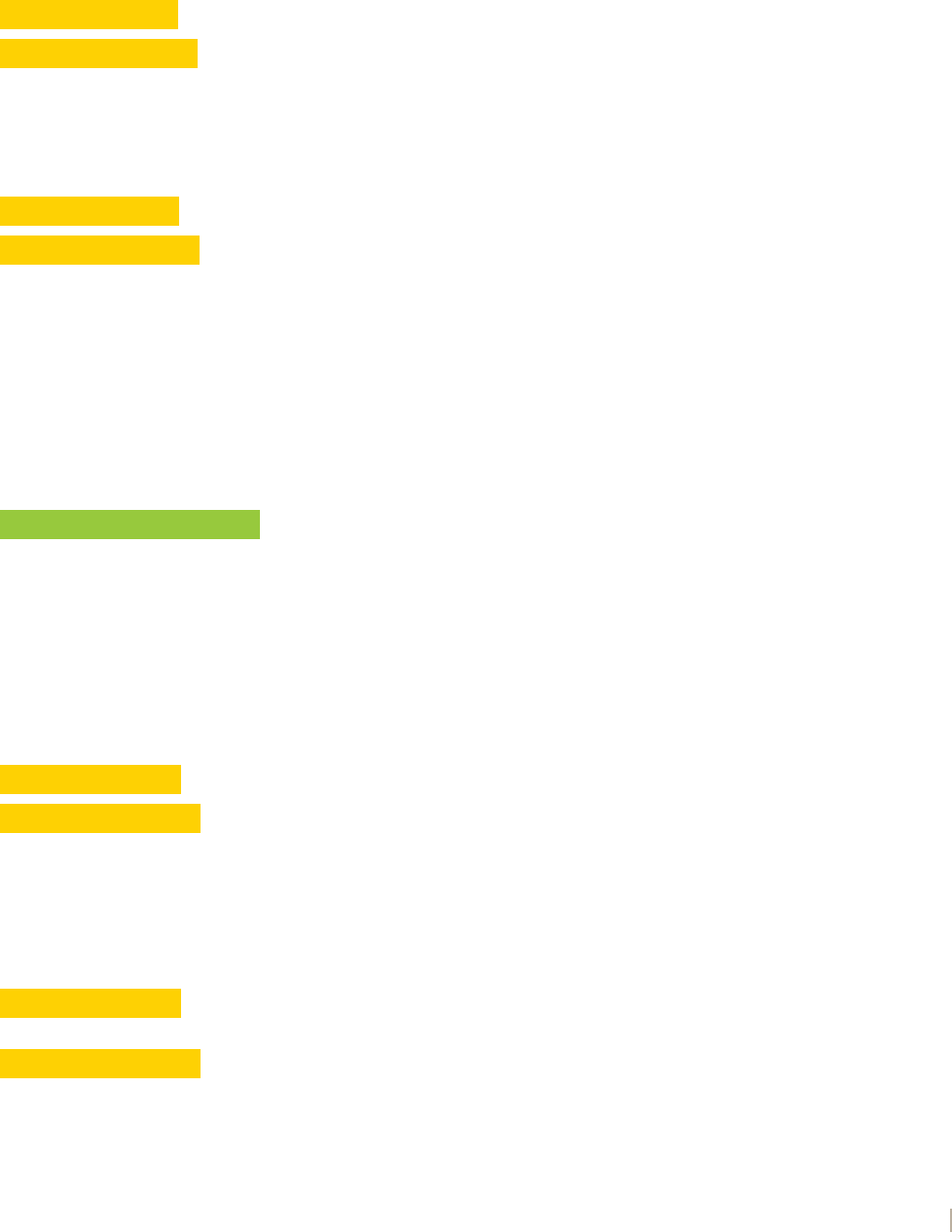
44
2021 Louisiana Health Insurance Survey
INTERVIEWER: IF PERSON NORMALLY WORKS OVERTIME THEN INCLUDE THOSE HOURS
ENTER (1-80), OR
-8 FOR DON’T KNOW
-9 FOR REFUSED
Q: PAY4
For respondent, show: Do you have any other jobs besides the primary one that we just talked about?
For everyone else, show: Does XX have any other jobs besides the primary one that we just talked about?
1. Yes
2. No – SKIP TO SELF
8. DON’T KNOW – SKIP TO SELF
9. REFUSED – SKIP TO SELF
Q: PAY4A
For respondent, show: About how much do you usually earn in wages or salary ANNUALLY from these other jobs?
For everyone else, show: About how much does XX usually earn in wages or salary ANNUALLY from these other jobs?
INTERVIEWER: REMIND PERSON IF HESITANT THAT THIS IS CONFIDENTIAL, STATISTICAL INFORMATION ONLY AND WILL
HELP PROVIDE INFORMATION TO DEVELOP AFFORDABLE HEALTH CARE PLANS.
IF ASKED, INCLUDE OVERTIME, TIPS, BONUSES, AND COMMISSION.
IF ASKED, THIS IS BEFORE TAX.
ENTER (0-9999999) PER YEAR, OR
-7 IF A MONTHLY AMOUNT IS GIVEN
-8 FOR DON’T KNOW
-9 FOR REFUSED
IF WRK2 = 1, SKIP TO OTRSCE
Q: SELF {ask only if WRK2=3}
And does that include self-employment?
1. Yes – SKIP TO OTRSCE
2. No
8. DON’T KNOW
9. REFUSED
Q: SELFB
For respondent, show: About how much self-employment income did you earn in the last 12 months?
For everyone else, show: About how much self-employment income did XX earn in the last 12 months?
ENTER (0-9999999) PER YEAR, OR
-7 IF A MONTHLY AMOUNT IS GIVEN
-8 FOR DON’T KNOW
-9 FOR REFUSED
Q: OTRSCE
For respondent, show: Do you have income from ANY OTHER sources, say from interest or dividends, business income, rental
income, social security, retirement, alimony, or unemployment?
For everyone else, show: Does XX have income from ANY OTHER sources, say from interest or dividends, business income,
rental income, social security, retirement, alimony, or unemployment?
1. Yes
2. No – SKIP TO EMP1

45
2021 Louisiana Health Insurance Survey
8. DON’T KNOW
9. REFUSED
Q: OTRSAMT
For respondent, show: About how much do you receive monthly from these other sources?
For everyone else, show: About how much does XX receive monthly from these other sources?
INTERVIEWER: ENTER MONTHLY AMOUNT HERE. IF THEY ONLY KNOW ANNUAL AMOUNT, DO NOT CONVERT. JUST TYPE
-7. YOU WILL GET A SCREEN THAT ALLOWS YOU TO ENTER THE ANNUAL AMOUNT.
ENTER (0-9999999) PER MONTH, OR
-7 IF AN ANNUAL AMOUNT IS GIVEN
-8 FOR DON’T KNOW
-9 FOR REFUSED
IF ANS != -7, SKIP TO OTRWEL
Q: OTRAMT
Enter annual amount:
ENTER (1-9999999) PER YEAR
Q: OTRWEL
Is any of this “other” income that we have just discussed from child support, SSI or supplemental security insurance, or welfare
payments?
NOTE: WELFARE CAN MEAN AFDC, TANF, OR FITAP WHICH IS TEMPORARY ASSISTANCE FOR NEEDY FAMILIES.
1. Yes
2. No – SKIP TO EMP1
8. DON’T KNOW – SKIP TO EMP1
9. REFUSED – SKIP TO EMP1
Q: OTRWELAMT
How much per month is from child support, SSI or supplemental security insurance, or welfare payments?
ENTER (1-9999999) PER MONTH, OR
-7 IF AN ANNUAL AMOUNT IS GIVEN
-8 FOR DON’T KNOW
-9 FOR REFUSED
IF ANS != -7, SKIP TO EMP1
Q: OTRAMT2
Enter annual amount:
ENTER (1-9999999) PER YEAR
SKIP TO EMP1
----------------------------------------------------------------------------------------------------------------------------
WRK3 THRU NWI6 ARE ONLY ASKED FOR THOSE WHO DO NOT WORK.
Q: WRK3
For respondent, show: Are you…
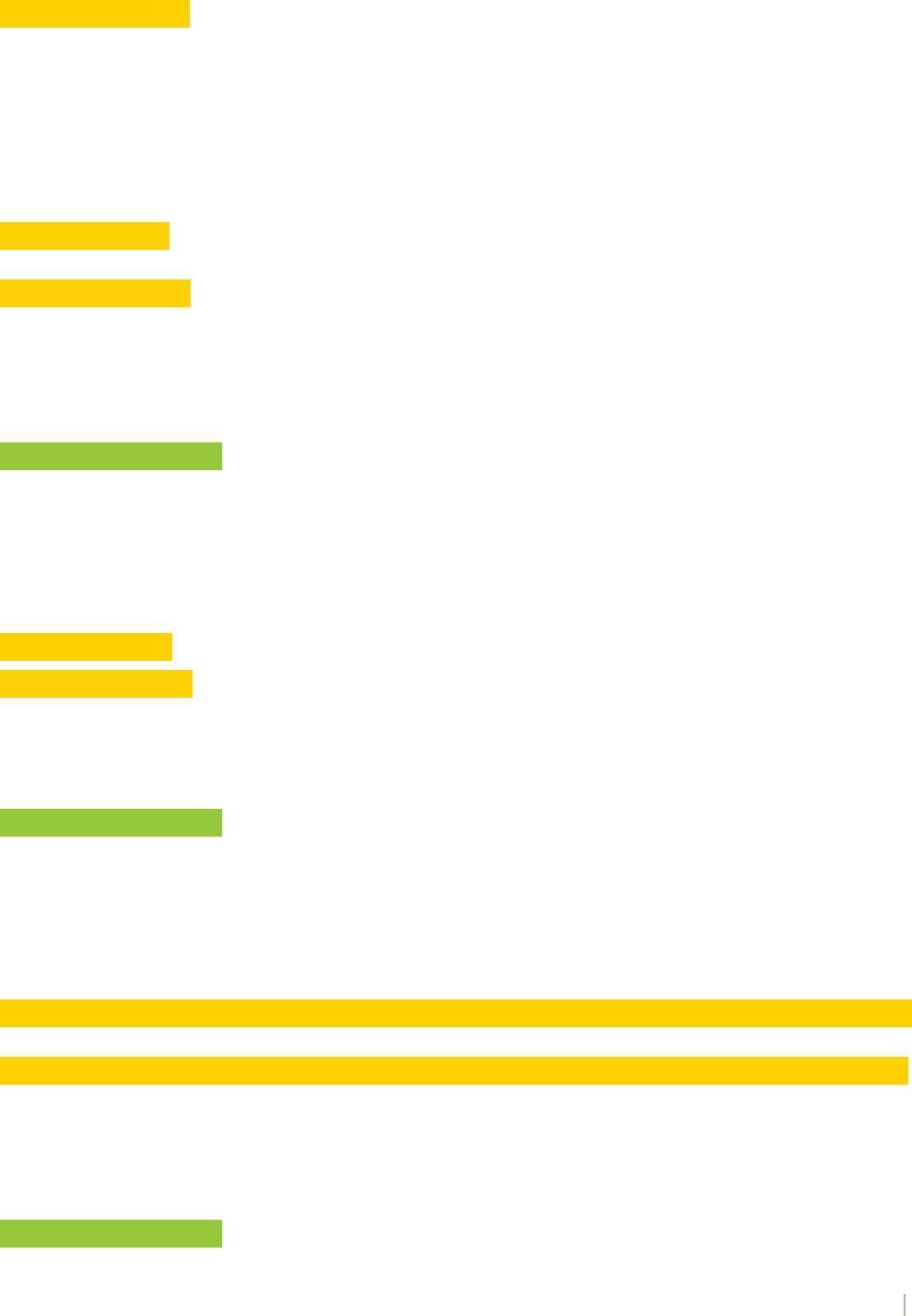
46
2021 Louisiana Health Insurance Survey
For everyone else, show: Is XX…
1. Unemployed but looking for work
2. Not looking
3. Retired
4. Disabled
8. DON’T KNOW
9. REFUSED
Q: NWI1
For respondent, show: About how much per month in interest, dividends, royalty income, net rental income and estates and
trusts do you earn?
For everyone else, show: About how much per month in interest, dividends, royalty income, net rental income and estates and
trusts does XX earn?
ENTER (0-9999999) PER MONTH, OR
-7 IF AN ANNUAL AMOUNT IS GIVEN
-8 FOR DON’T KNOW
-9 FOR REFUSED
IF ANS != -7, SKIP TO NWI2
Q: NWI1A
Enter annual amount:
ENTER (1-9999999) PER YEAR
Q: NWI2
For respondent, show: About how much per month in Social Security or Railroad Retirement do you receive?
For everyone else, show: About how much per month in Social Security or Railroad Retirement does XX receive?
ENTER (0-9999999) PER MONTH, OR
-7 IF AN ANNUAL AMOUNT IS GIVEN
-8 FOR DON’T KNOW AND
-9 FOR REFUSED
IF ANS != -7, SKIP TO NWI3
Q: NWI2A
Enter annual amount:
ENTER (1-9999999) PER YEAR
Q: NWI3
For respondent, show: About how much per month in Retirement, survivor, or disability pensions (other than social security) do
you receive?
For everyone else, show: About how much per month in Retirement, survivor, or disability pensions (other than social security)
does XX receive?
ENTER (0-9999999) PER MONTH, OR
-7 IF AN ANNUAL AMOUNT IS GIVEN
-8 FOR DON’T KNOW AND
-9 FOR REFUSED
IF ANS != -7, SKIP TO NWI4
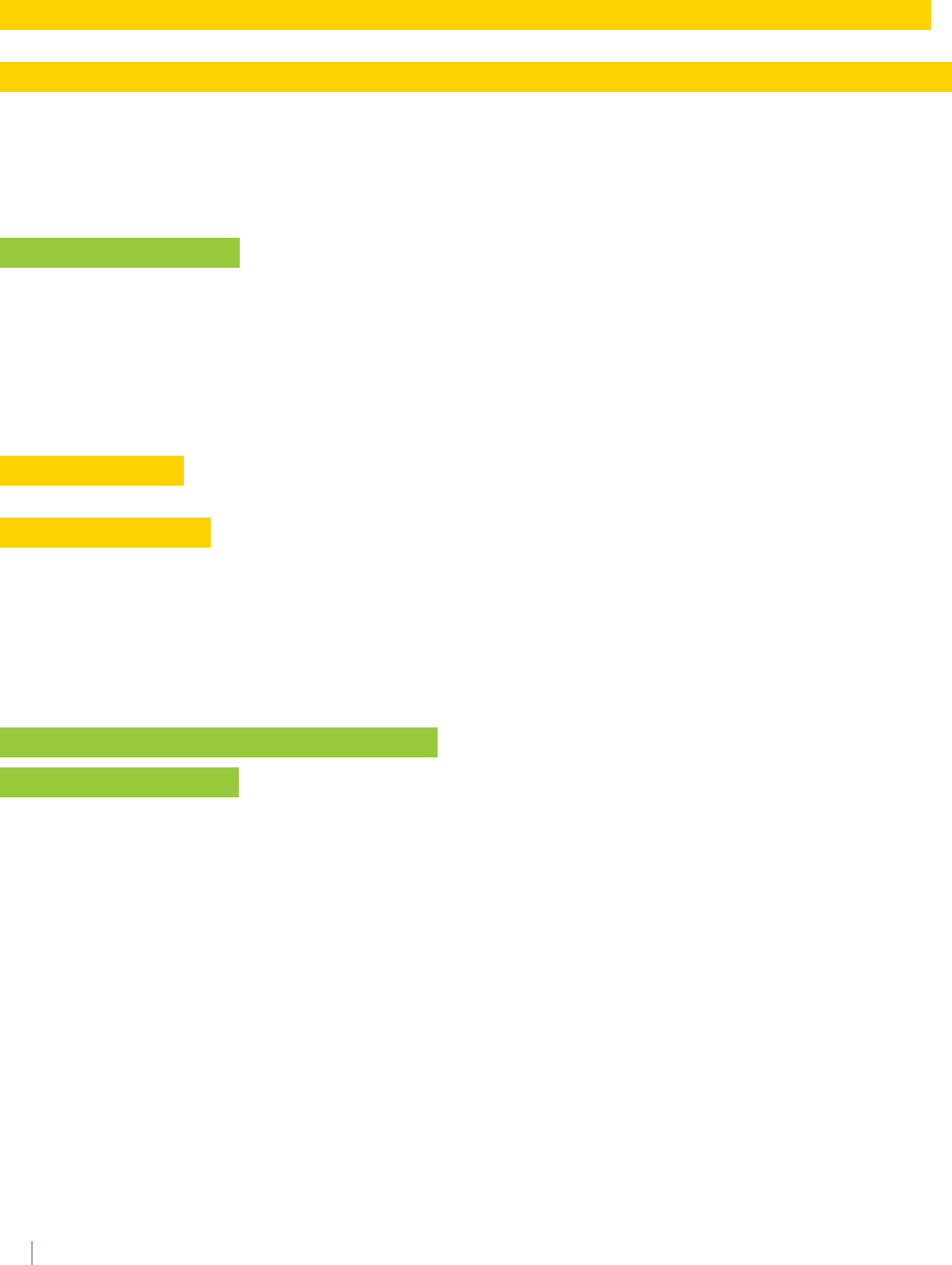
47
2021 Louisiana Health Insurance Survey
Q: NWI3A
Enter annual amount:
ENTER (1-9999999) PER YEAR
Q: NWI4
For respondent, show: About how much per month in Supplemental Security Income (SSI), public assistance, or welfare
payments from the state or local welfare oces did you receive in the last year?
For everyone else, show: About how much per month in Supplemental Security Income (SSI), public assistance, or welfare
payments from the state or local welfare oces did XX receive in the last year?
ENTER (0-9999999) PER MONTH, OR
-7 IF AN ANNUAL AMOUNT IS GIVEN
-8 FOR DON’T KNOW AND
-9 FOR REFUSED
IF ANS != -7, SKIP TO NWI5
Q: NWI4A
Enter annual amount:
ENTER (1-9999999) PER YEAR
Q: NWI5
For respondent, show: About how much per month did you receive from any other sources of income received regularly such as
unemployment compensation, child support, or alimony?
For everyone else, show: About how much per month did XX receive from any other sources of income received regularly such
as unemployment compensation, child support, or alimony?
NOTE: ONLY ENTER WHAT IS RECEIVED, NOT WHAT IS PAID.
ENTER (0-9999999) PER MONTH, OR
-7 IF AN ANNUAL AMOUNT IS GIVEN
-8 FOR DON’T KNOW – SKIP TO NEXT HHOLD MEMBER
-9 FOR REFUSED – SKIP TO NEXT HHOLD MEMBER
IF ANS = 0 - SKIP TO NEXT HOUSE HOLD MEMBER
IF ANS > 0 - SKIP TO NWI6
Q: NWI5A
Enter annual amount:
ENTER (1-9999999) PER YEAR
Q: NWI6
What source was this money?
1. Unemployment compensation
2. Child support
3. Alimony
4. other
8. DON’T KNOW
9. REFUSED
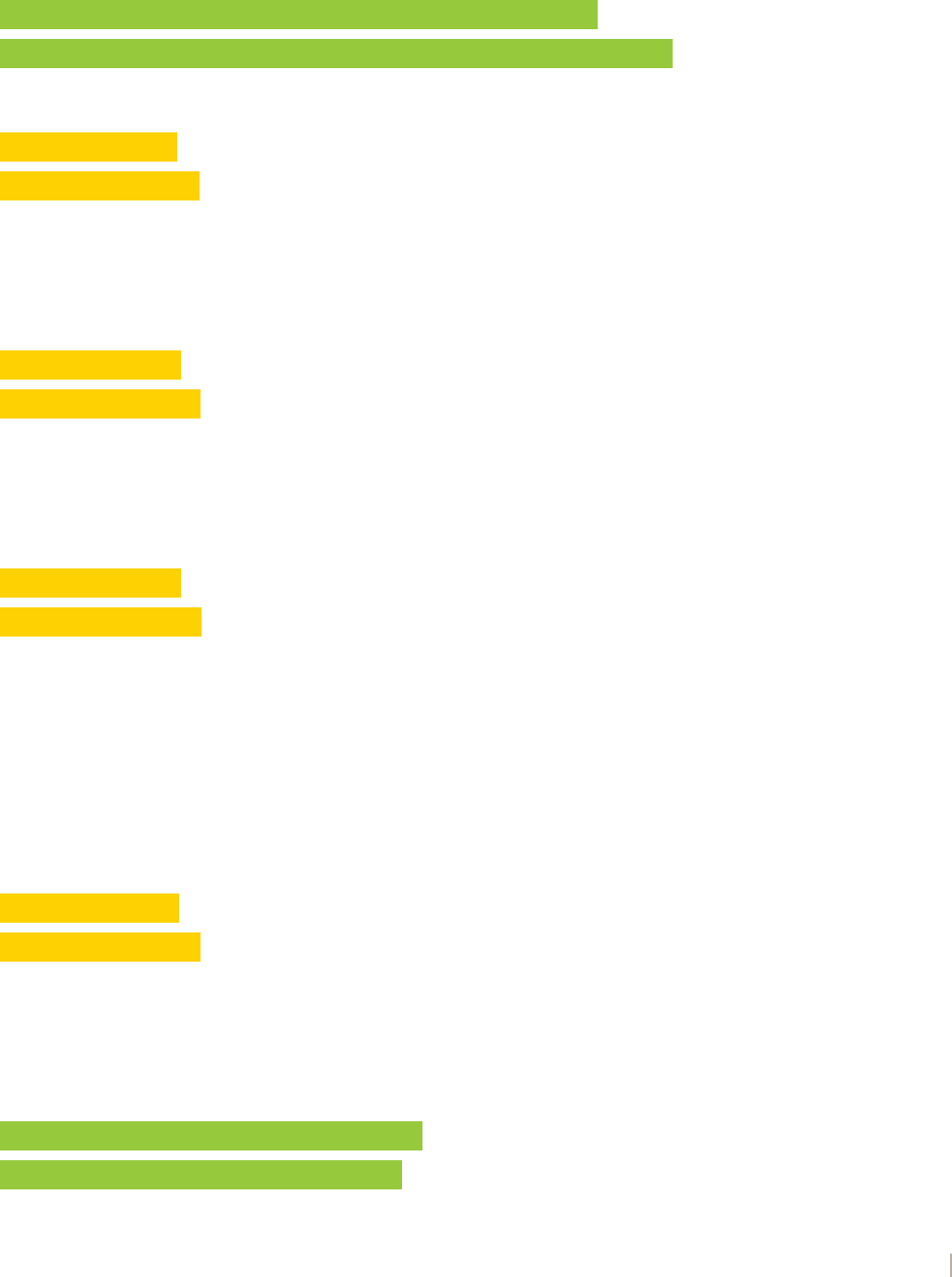
48
2021 Louisiana Health Insurance Survey
SKIP TO NEXT HHLD MEMBER
---------------------------------------------------------------------------------------------------------------------------------------
-------------------------------------------------------------------------------------------------------------------------------------------
THE FOLLOWING SECTION IS ONLY FOR EMPLOYED HHOLD MEMBERS.
IF WRK2=1 OR WRK2=3, ASK EMP1. OTHERWISE, SKIP TO NEXT HHOLD MEMBER.
Q: EMP1
For respondent, show: Does your current employer or union oer a health insurance plan to any of its employees?
For everyone else, show: Does XX’s current employer or union oer a health insurance plan to any of its employees?
1. Yes
2. No – SKIP TO NEXT HHOLD MEMBER
8. DON’T KNOW – SKIP TO NEXT HHOLD MEMBER
9. REFUSED – SKIP TO NEXT HHOLD MEMBER
Q: EMP2
For respondent, show: Are you eligible for this insurance through your employer or union?
For everyone else, show: Is XX eligible for this insurance through their employer or union?
1. Yes
2. No – SKIP TO NEXT HHOLD MEMBER
8. DON’T KNOW – SKIP TO NEXT HHOLD MEMBER
9. REFUSED – SKIP TO NEXT HHOLD MEMBER
Q: EMP3
For respondent, show: Is the insurance that you are ELIGIBLE for employee coverage only or family coverage?
For everyone else, show: Is the insurance that XX is ELIGIBLE for employee coverage only or family coverage?
INTERVIEWER: TELL RESPONDENTS THIS QUESTION DEALS WITH ELIGIBILITY AND NOT ACTUAL COVERAGE.
RESPONDENTS WHO ARE ELIGIBLE FOR FAMILY COVERAGE BUT OPT FOR EMPLOYEE ONLY COVERAGE, SHOULD BE
CODED “2” - FAMILY COVERAGE. SPOUSAL COVERAGE IS CONSIDERED FAMILY COVERAGE.
1. Employee coverage only
2. Family coverage
8. DON’T KNOW
9. REFUSED
Q: EMP4
For respondent, show: Are you currently enrolled in any coverage oered by your employer or union?
For everyone else, show: Is XX currently enrolled in any coverage oered by their employer or union?
1. Yes
2. No - SKIP TO WHY1
8. DON’T KNOW – SKIP TO PLNCHIL
9. REFUSED – SKIP TO PLNCHIL
IF EMP3 = 8 or 9 AND EMP4 = 1 - SKIP TO PLNCHIL
IF EMP3 = 1 AND EMP4 = 1 - SKIP TO PREM1
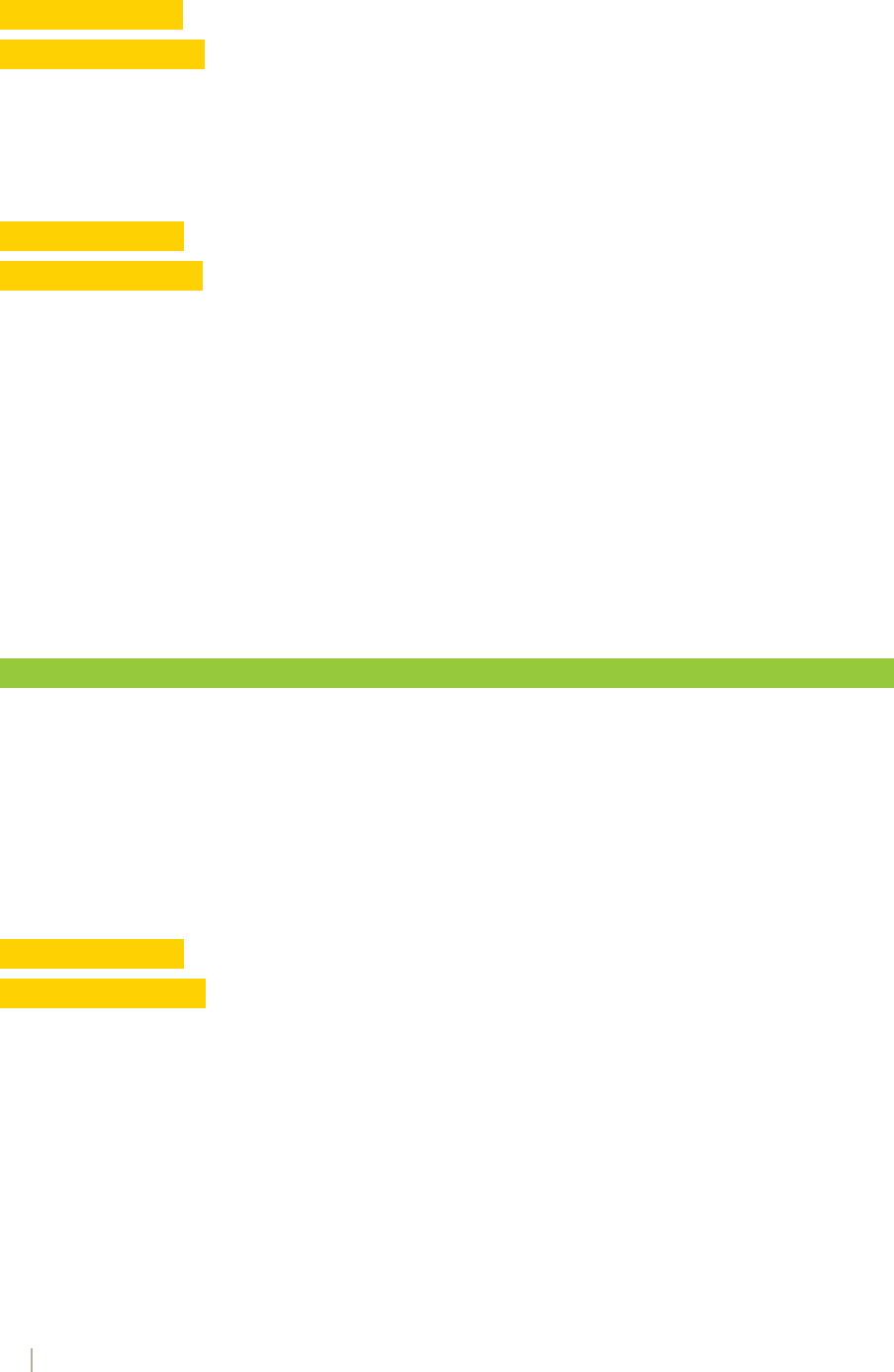
49
2021 Louisiana Health Insurance Survey
Q: EMP5
For respondent, show: Are you ENROLLED in employee coverage only or family coverage?
For everyone else, show: Is XX ENROLLED in employee coverage only or family coverage?
1. Employee coverage only – SKIP TO WHY2
2. Family coverage – SKIP TO PLNCHIL
8. DON’T KNOW – SKIP TO PLNCHIL
9. REFUSED – SKIP TO PLNCHIL
Q: WHY1
For respondent, show: Why aren’t you covered through your employer?
For everyone else, show: Why is XX not covered through his or her employer?
INTERVIEWER: READ EACH ONE AND INDICATE ALL THAT APPLY
01. Covered through other family member
02. Covered through a public program
03. Too expensive
04. Didn’t like the benefit package
05. Didn’t like the doctors in the plan
06. Don’t believe in health insurance
07. OTHER REASONS (Specify- RECORD ANSWER IN NEW QUESTION)
88. Don’t know
99. Refused
SKIP TO NEXT HHOLD MEMBER
---------------------------------------------------------------------
{PLNCHIL AND WHY2 ARE ASKED ONLY IF THERE ARE CHILDREN IN HOUSE WITH EMPLOYER COVERAGE.}
Q: PLNCHIL
Are ALL children IN THIS HOUSEHOLD under age 26 covered by this plan?
1. Yes - SKIP TO PREM2
2. No, not all of the children are covered
3. No, none of the children are covered
8. DON’T KNOW - SKIP TO PREM2
9. REFUSED - SKIP TO PREM2
Q: WHY2
For respondent, show: Why isn’t/aren’t the child/children covered through your employer?
For everyone else, show: Why isn’t/aren’t the child/children covered through XX’s employer?
INTERVIEWER: READ EACH ONE AND INDICATE ALL THAT APPLY
01. Have their own insurance
02. Covered through other family member
03. Covered through a public program
04. Too expensive
05. Employer doesn’t oer family coverage
06. Didn’t like the benefit package
07. Didn’t like the doctors in the plan
08. Don’t believe in health insurance
09. OTHER REASONS (Specify - RECORD ANSWER IN NEW QUESTION)
88. DON’T KNOW
99. NOT AVAILABLE
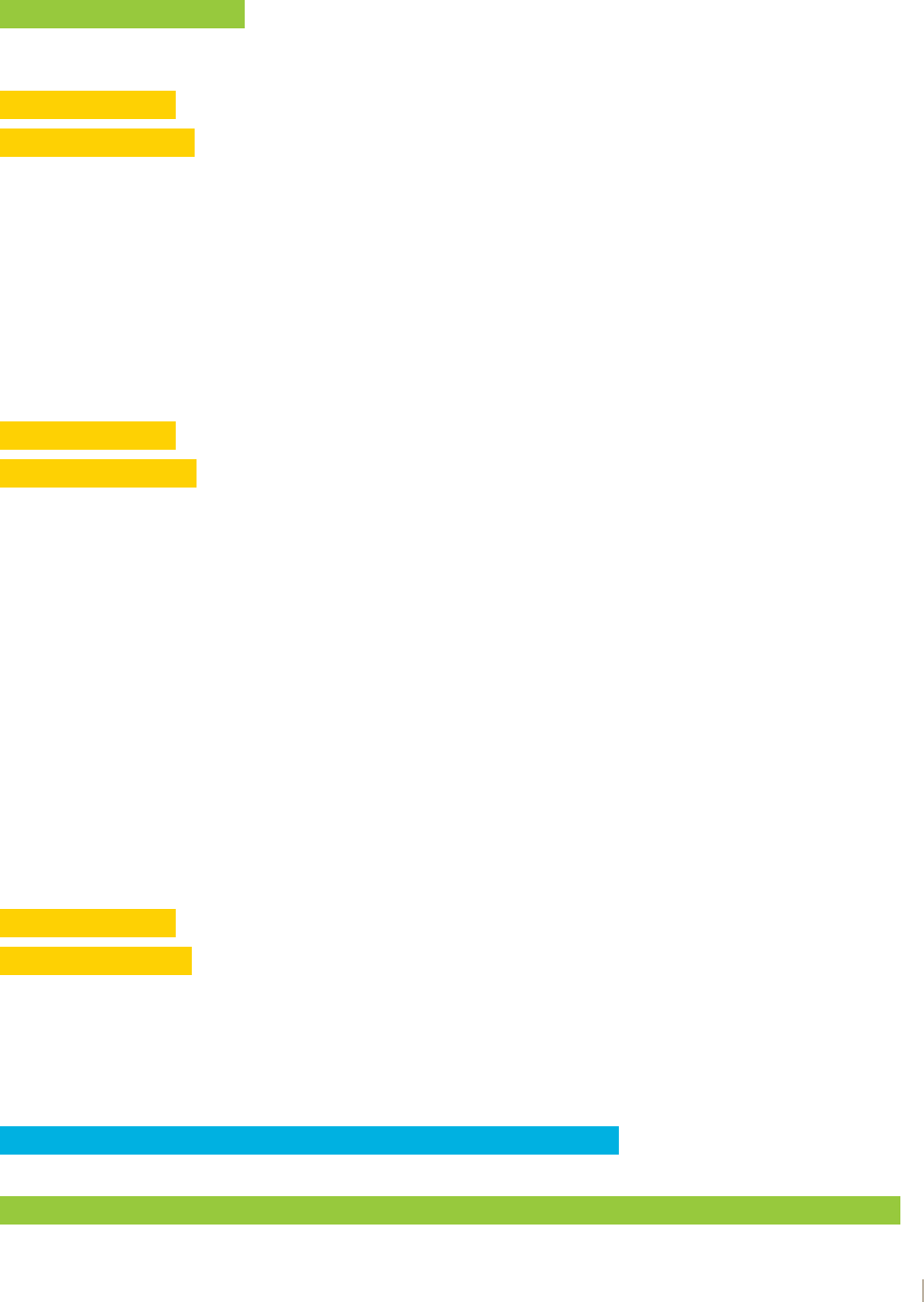
50
2021 Louisiana Health Insurance Survey
-------------------------------------------------------------------------------------------------------------------------------
IF EMP5 = 2, SKIP TO PREM2
Q: PREM1 {for employee coverage only}
For respondent, show: About how much do you have to pay out of each paycheck to get insurance through your employer?
For everyone else, show: About how much does XX have to pay out of each paycheck to get insurance through his or her
employer?
Your best guess is fine.
INTERVIEWER: GET AMOUNT IN DOLLARS PER PAYCHECK. CLARIFY THIS BY ASKING: “IS THIS FOR ONE PAY PERIOD?”
ENTER (0-5000) PER PAYCHECK, OR
-8 FOR DON’T KNOW – SKIP TO PREM4
-9 FOR REFUSED – SKIP TO PREM4
SKIP TO PREM3
Q: PREM2 {for family coverage}
For respondent, show: About how much do you have to pay out of each paycheck to get insurance through your employer?
For everyone else, show: About how much does XX have to pay out of each paycheck to get insurance through his or her
employer?
Your best guess is fine.
INTERVIEWER: GET AMOUNT IN DOLLARS PER PAYCHECK. CLARIFY THIS BY ASKING: “IS THIS FOR ONE PAY PERIOD?”
ENTER (0-5000) PER PAYCHECK, OR
-8 FOR DON’T KNOW – SKIP TO PREM4
-9 FOR REFUSED – SKIP TO PREM4
Q: PREM3
How confident are you that your estimate is within $20.00 of the actual employee share of the premium?
1. Very confident, I looked at the pay stub
2. Confident
3. Somewhat confident
4. Not confident at all
8. DON’T KNOW
9. REFUSED
Q: PREM4
For respondent, show: How often do you get paid? Once every month, every two weeks, every week...
For everyone else, show: How often does XX get paid? Once every month, every two weeks, every week...
1. Every month
2. Every two weeks
3. Every week
4. Other-specify - RECORD ANSWER IN NEW QUESTION
8. DON’T KNOW
9. REFUSED
-------------------END ROSTER--------------------------------------------------------------------------------
-------------------------------------------------------------------------------------------------------------------
MP1 through MP3 are only asked for respondents with private insurance (meaning respondent is in list generated in

51
2021 Louisiana Health Insurance Survey
COV2C).
Q: MP1
Thinking about the health insurance plan that covers you, about how much does that plan cost each month?
ENTER (0-5000) PER MONTH, OR
-8 FOR DON’T KNOW
-9 FOR REFUSED
Q: MP2
How confident are you that your estimate is within $20 of the actual amount?
1. Very confident, I looked at the pay stub
2. Confident
3. Somewhat confident
4. Not confident at all
8. DON’T KNOW
9. REFUSED
Q: MP3
Who from this list is covered by that plan?
[Select members from HHOLD roster.]
----------------------------------------------------------------------------------------------------------------
-------------------BEGIN ROSTER-----------------------------------------------------------------------------------------------
OPH1 through OPH4 asked only about covered individuals.
Q: OPH1
For respondent, show: The next questions are about your health insurance or health care plans. Does your health insurance
oer benefits or cover services that meet your needs?
Would you say never, sometimes, usually, always?
For everyone else, show: The next questions are about XX’s health insurance or health care plans. Does XX’s health insurance
oer benefits or cover services that meet their needs?
Would you say never, sometimes, usually, always?
1. Never
2. Sometimes
3. Usually
4. Always
8. DON’T KNOW
9. REFUSED
Q: OPH2
For respondent, show: Does your health insurance allow you to see the health care providers you need? Would you say never,
sometimes, usually, always?
For everyone else, show: Does XX’s health insurance allow them to see the health care providers [he/she] needs? Would you
say never, sometimes, usually, always?
1. Never
2. Sometimes
3. Usually
4. Always
8. DON’T KNOW
9. REFUSED
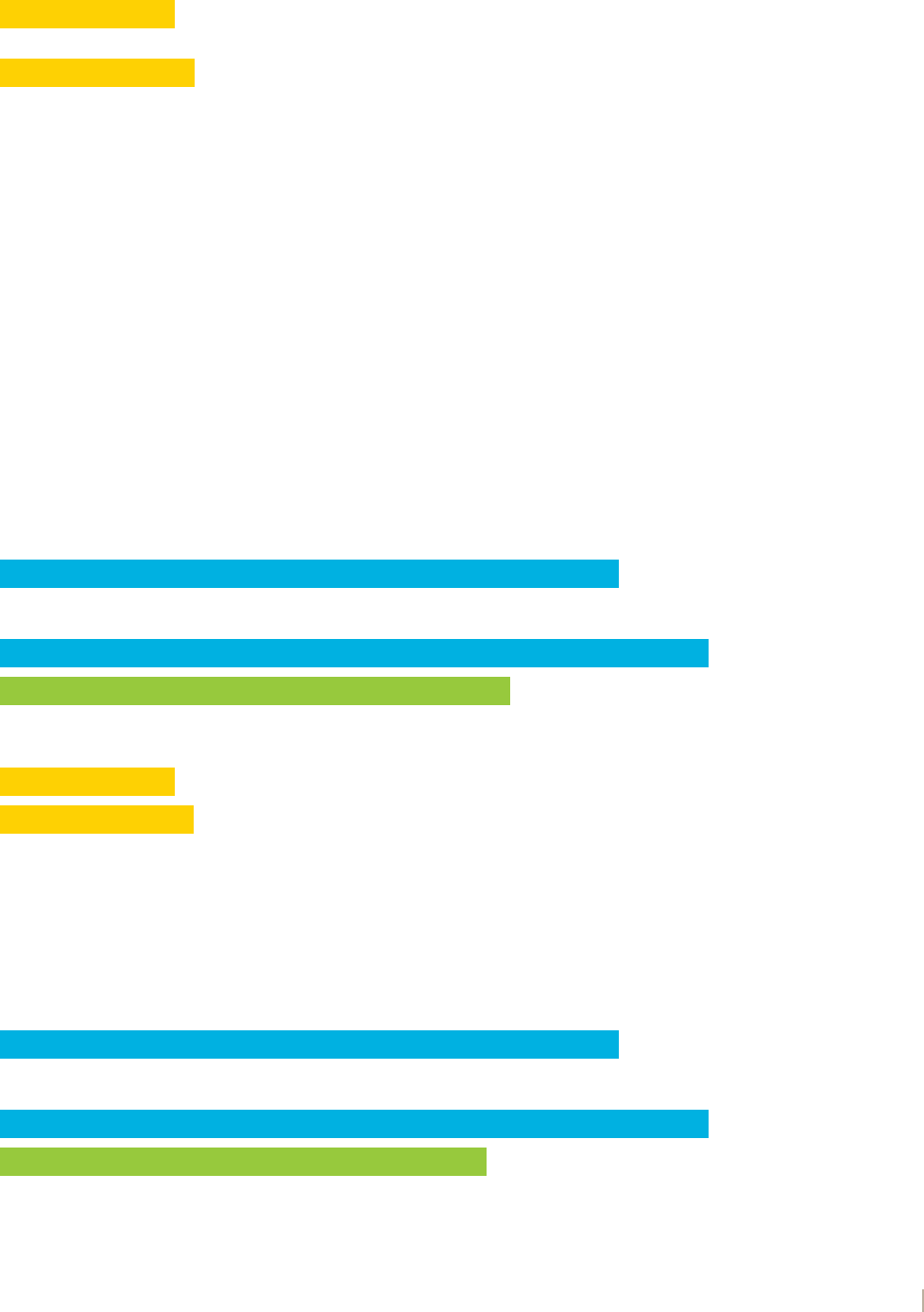
52
2021 Louisiana Health Insurance Survey
Q: OPH3
For respondent, show: Not including health insurance premiums or costs that are covered by insurance, do you pay any money
for your health care?
For everyone else, show: Not including health insurance premiums or costs that are covered by insurance, does XX pay any
money for their health care?
IF NECESSARY: INCLUDE OUT-OF-POCKET PAYMENTS FOR ALL TYPES OF HEALTH-RELATED NEEDS SUCH AS CO-
PAYMENTS, DENTAL OR VISION CARE, MEDICATIONS, AND ANY KIND OF THERAPY.
1. Yes
2. No – SKIP TO NEXT HHOLD MEMBER
8. DON’T KNOW
9. REFUSED
Q: OPH4
How often are these costs reasonable? Would you say never, sometimes, usually, always?
1. Never
2. Sometimes
3. Usually
4. Always
5. No out of pocket expenses
8. DON’T KNOW
9. REFUSED
INTERVIEWER: IF THE RESPONDENT SEEMS CONFUSED BY HOW TO ANSWER, ASK: DO YOU KNOW IF XX HAS ANY OUT-
OF-POCKET COSTS FOR HEALTH CARE? IF YES, THEN ASK: HOW OFTEN ARE THOSE COSTS REASONABLE?
-------------------END ROSTER--------------------------------------------------------------------------------
-------------------BEGIN ROSTER-----------------------------------------------------------------------------------------------
{EDUCAT ASKED FOR HHOLD MEMBERS 18 AND OLDER ONLY}
Q: EDUCAT
For respondent, show: What is the highest level of school you ever completed?
For everyone else, show: What is the highest level of school XX ever completed?
1. Less than high school
2. Completed high school
3. Some college or associates degree
4. Completed four years of college
5. Some graduate education
6. Graduate degree
8. DON’T KNOW
9. REFUSED
-------------------END ROSTER--------------------------------------------------------------------------------
-------------------BEGIN ROSTER-----------------------------------------------------------------------------------------------
{RACE ASKED FOR HHOLD MEMBERS 18 AND OLDER ONLY}
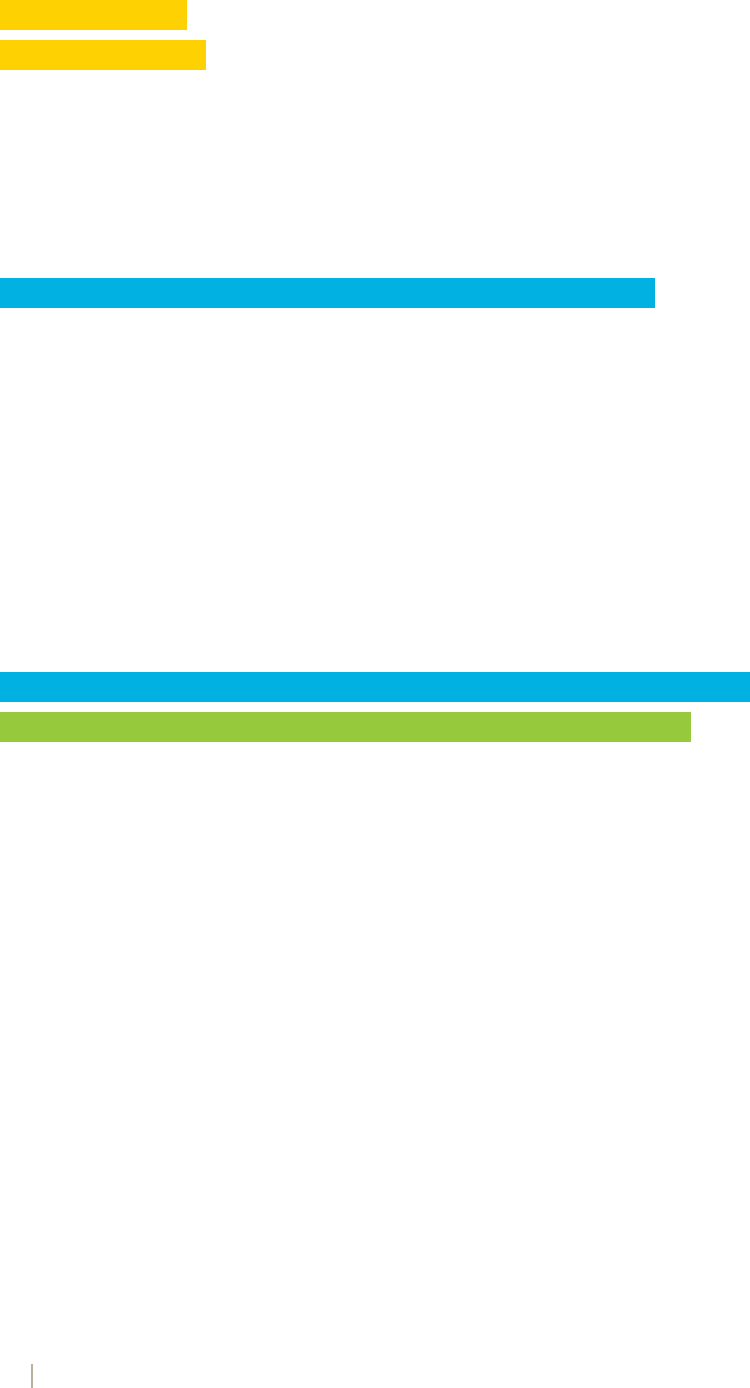
53
2021 Louisiana Health Insurance Survey
Q: RACE
For respondent, show: What race do you consider yourself to be?
For everyone else, show: What race does XX consider him/herself to be?
1. White
2. Black
3. Native American Indian/Eskimo
4. Asian/Pacific Islander
5. Hispanic
6. Other (Specify- RECORD ANSWER IN NEW QUESTION)
8. DON’T KNOW
9. REFUSED
-------------------END ROSTER--------------------------------------------------------------------------------
Q: IMIG1
Is there anyone currently living in the household who was born outside of the United States?
1. Yes
2. No - SKIP TO HHINCOME
8. DON’T KNOW - SKIP TO HHINCOME
9. REFUSED - SKIP TO HHINCOME
Q: IMIG2
Who was born outside of the United States?
INTERVIEWER: TO CONFIRM ASK AGAIN: “ANYONE ELSE?”
[Select members from HHOLD roster.]
-------------------BEGIN ROSTER-----------------------------------------------------------------------------------------------
ASK CITIZEN1 THRU CIT1C IF HHOLD MEMBER IS LISTED IN IMIG2 AND AGE >= 18
Q: CITIZEN1 {adults only}
Is XX a citizen of the United States?
1. Yes – SKIP TO NEXT HHOLD MEMBER
2. No
8. DON’T KNOW
9. REFUSED
Q: CIT1A {adults only}
Does XX currently have a permanent residence card or a green card?
1. Yes
2. No
8. DON’T KNOW
9. REFUSED
Q: CIT1B {adults only}
Has XX been granted asylum, refugee status, or temporary protected immigrant status, TPS?
1. Yes – SKIP TO NEXT HHOLD MEMBER
2. No
8. DON’T KNOW
9. REFUSED
Q: CIT1C {adults only}
Does XX have a tourist visa, student visa, a work visa or permit or other document which permits you to stay in the US for a
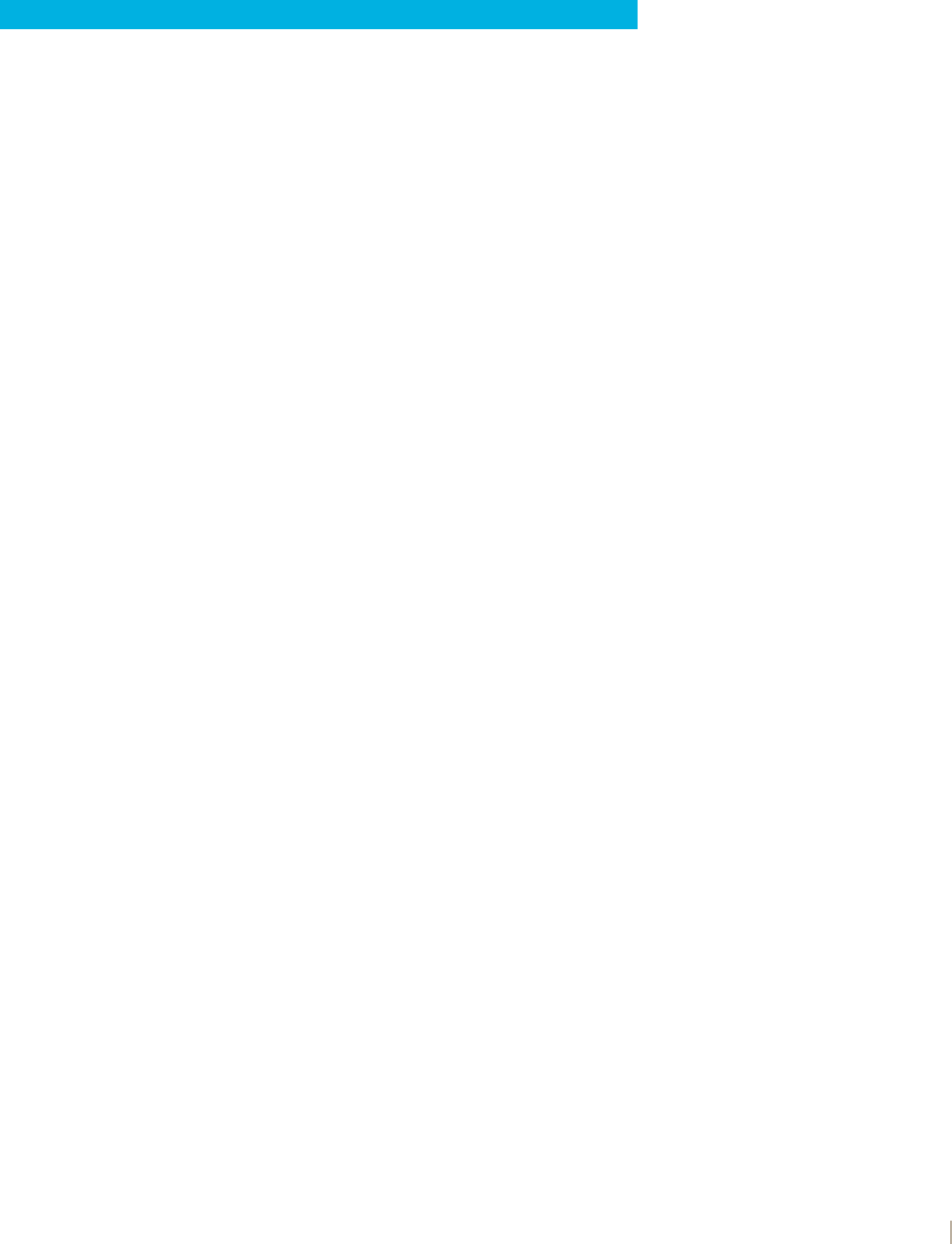
54
2021 Louisiana Health Insurance Survey
limited time?
1. Yes
2. No
8. DON’T KNOW
9. REFUSED
-------------------END ROSTER--------------------------------------------------------------------------------
Q: HHINCOME
For everyone who lives here that is related to you by blood, marriage or adoption from all sources, what is the gross (before
taxes) yearly family income from all sources? Your best guess is fine.
01. Less than $4,999
02. $5,000 to $9,999
03. $10,000 to $14,999
04. $15,000 to $19,999
05. $20,000 to $24,999
06. $25,000 to $34,999
07. $35,000 to $44,999
08. $45,000 to $54,999
09. $55,000 to $64,999
10. $65,000 to $74,999
11 . $75,000 to $84,999
12. $85,000 to $94,999
13. $95,000 or more
88. DON’T KNOW
99. REFUSED
Q: INCNT
Just to be sure I have this right, how many people live on this income who are currently living in the household?
ENTER (1-8), OR
-8 FOR DON’T KNOW
-9 FOR REFUSED
Q: ZIPCD
What is your Zip Code?
ENTER (70001-72000), OR
-8 FOR DON’T KNOW
-9 FOR REFUSED
Q: PARISH
What is the name of the parish where you live?
001 Acadia 033 East Baton Rouge 065 Madison 097 St. Landry
003 Allen 035 East Carroll 067 Morehouse 099 St. Martin
005 Ascension 037 East Feliciana 069 Natchitoches 101 St. Mary
007 Assumption 039 Evangeline 071 Orleans 103 St. Tammany
009 Avoyelles 041 Franklin 073 Ouachita 105 Tangipahoa
011 Beauregard 043 Grant 075 Plaquemines 107 Tensas
013 Bienville 045 Iberia 077 Pointe Coupee 109 Terrebonne
015 Bossier 047 Iberville 079 Rapides 111 Union
017 Caddo 049 Jackson 081 Red River 113 Vermilion
019 Calcasieu 051 Jeerson 083 Richland 115 Vernon
021 Caldwell 053 Jeerson Davis 085 Sabine 117 Washington
023 Cameron 059 La Salle 087 St. Bernard 119 Webster
025 Catahoula 055 Lafayette 089 St. Charles 121 W. Baton Rouge
027 Claiborne 057 Lafourche 091 St. Helena 123 W. Carroll
029 Concordia 061 Lincoln 093 St. James 125 W. Feliciana
031 De Soto 063 Livingston 095 St. John Baptist 127 Winn
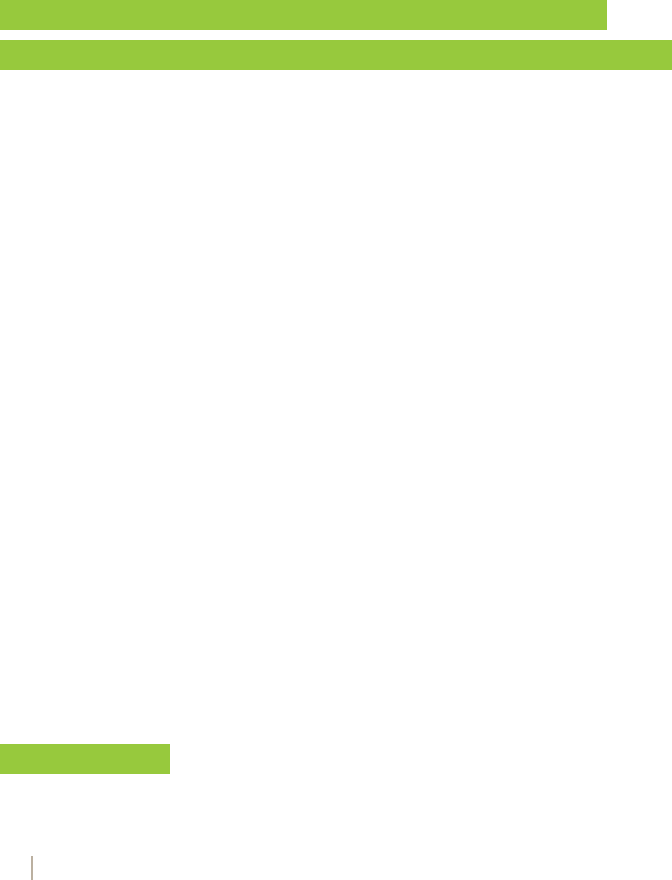
55
2021 Louisiana Health Insurance Survey
888. DON’T KNOW
999. REFUSED
Q: LABORN
What state were you born in?
INTERVIEWER: PLEASE ASK FOR STATE. IF OUT OF US, THEN ASK FOR COUNTRY
Q: PH1
In the past 12 months, was there any time that you did not have a working telephone for two weeks or more?
1. Yes
2. No – SKIP TO OTHPHN
8. DON’T KNOW – SKIP TO OTHPHN
9. REFUSED – SKIP TO OTHPHN
Q: PH2
For how many weeks in the past 12 months did you not have a working telephone for two weeks or more?
ENTER (2-52), OR
-8 FOR DON’T KNOW
-9 FOR REFUSED
--------------------------------------------------------------------------------------------
IF THE CURRENT CALL IS ON A LANDLINE (LANDORC=1), ASK OTHPHN
IF THE CURRENT CALL IS ON A CELLPHONE (LANDORC=2), SKIP TO OTHPHNC
Q: OTHPHN
Are there any other landline telephone numbers in this household besides this one that people receive calls on?
1. Yes
2. No – SKIP TO WIRE1
8. DON’T KNOW – SKIP TO WIRE1
9. REFUSED – SKIP TO WIRE1
Q: OTHPHN2
How many?
ENTER (0-100), OR
-8 FOR DON’T KNOW
-9 FOR REFUSED
Q: _WIRE1 {Not delivered}
Does anyone in the household own a cell phone?
1. Yes
2. No – SKIP TO HLTHIMP
8. DON’T KNOW – SKIP TO HLTHIMP
9. REFUSED – SKIP TO HLTHIMP
Q: _WIRE1 How many cell phones do you have in the household?
INTERVIEWER: Enter 0 if they don’t own ANY cell phones.
ENTER (0-100), OR
-8 FOR DON’T KNOW AND
-9 FOR REFUSED
SKIP TO HLTHIMP

56
2021 Louisiana Health Insurance Survey
Q: OTHPHNC
Are there any other active telephone numbers in this household besides the one you and I are talking on? This includes
landlines and cell phones.
1. Yes
2. No – SKIP TO HLTHIMP
8. DON’T KNOW – SKIP TO HLTHIMP
9. REFUSED – SKIP TO HLTHIMP
Q: OTHPHN2C
How many of these OTHER telephone numbers in the house are landlines?
INTERVIEWER: ENTER 0 IF THEY DON’T OWN ANY LANDLINES.
ENTER (0-100), OR
-8 FOR DON’T KNOW AND
-9 FOR REFUSED
Q: OTHPHN3C
How many of these OTHER telephone numbers in the house are cell phones?
INTERVIEWER: Enter 0 if they don’t own any OTHER cell phones.
ENTER (0-100), OR
-8 FOR DON’T KNOW AND
-9 FOR REFUSED
---------------------------------------------------------------------------------------------------------------------
Q: HLTHIMP
Is there something that I haven’t asked you about your family’s health care that you think is important for us to know?
INTERVIEWER: RECORD ANSWER WORD FOR WORD AS CLOSELY AS POSSIBLE
Q: CALLBACK
And finally, we might like to call you back in a year to ask additional questions about your family’s health care. May I record your
name and phone number so that we could call you back?
1. Yes
2. No – SKIP TO INT99
8. DON’T KNOW – SKIP TO INT99
9. REFUSED – SKIP TO INT99
Q: CALLBAC1
What is your Full Name?
Q: CALLBAC2
What Phone Number we can call you at?
NUMBER CALLED: $N
INTERVIEWER: IF RESPONDENT SAYS, “YOU ALREADY HAVE MY NUMBER”, PLEASE ENTER THE PHONE NUMBER DISPLAYED
ABOVE
---------------------------------------------------------------------------------------------------------------------
Q: INT99 {Previously THANKYOU}
Thank you for your time. Your responses will help us to develop better health insurance plans for families in Louisiana.
Q: INT98 {Previously THANKC}
Thank you for your time.

